
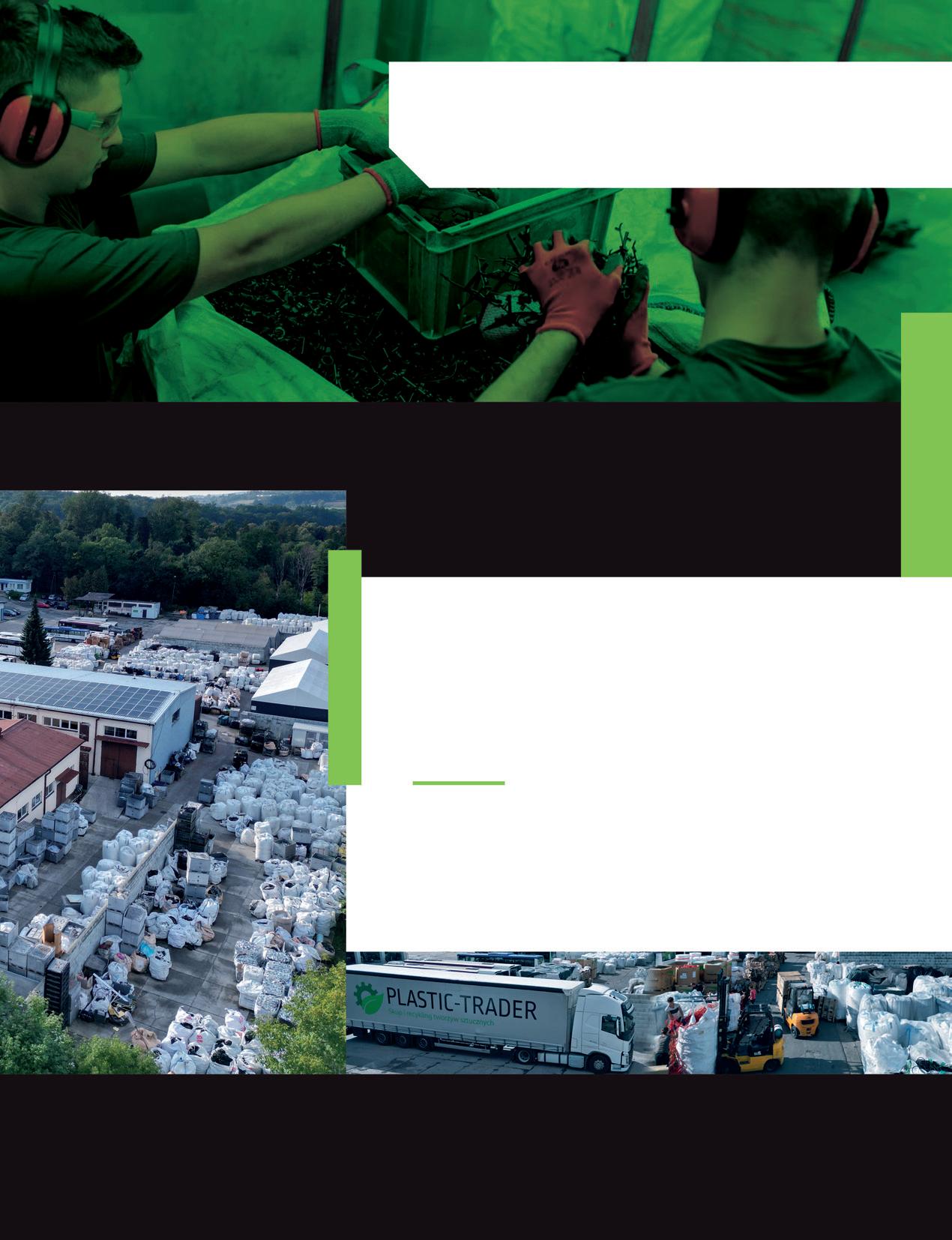 Jacek Leszczyński Editor-in-chief
Jacek Leszczyński Editor-in-chief
Just over 30 years ago, Europe was divided in two. Poland was a member of the Soviet “evil empire”, and no one imagined that this situation would change so quickly. The wind of change, symbolised by the great Polish leader Lech Wałęsa, has meant that Poland today belongs to the European family of democratic European states.
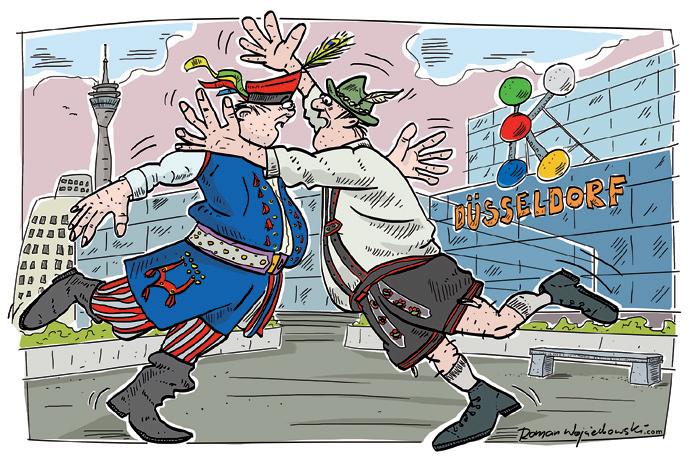
We are a member of the European Union, a major player on the international stage and an important economic partner for our neighbours. We are benefiting from the achievements of the West while contribut ing to the development of Europe.
Over the last 30 years, Poland has devel oped at the fastest pace in its history. This development is also noticeable in the do mestic plastics industry.
The Polish plastics market performs better compared to other European countries and ranks sixth in the European Union within the field of standard plastics. Poland comes out slightly worse in the field of advanced polymers, however the field still presents significant opportunities for growth.
The special edition of “Plast Echo” – the magazine for the plastics industry – which you are holding in your hands will give you a more detailed insight into the state of the Polish plastics industry, its potential and opportunities.
“The plastics industry in Poland, which has been intensively developing for over 10 years, has coped quite well with today’s challenges. We are glad that the concerns about forecasted decline in the plastics industry have not materialised”, says Anna
Kozera-Szałkowska, Managing Director, Plastics Europe Poland. “First of all, com panies have maintained a stable level of employment, which is of a great value in the context of the crisis faced by all indus tries”, she adds.
You can read more about the condition of the Polish plastics business in the article “Plastics industry in Poland”.
Poland is not all about plastics market. The local rubber industry also has a his tory. Its beginnings and the present day are described by Karol Nicinski in the ar ticle “Brief history of the rubber industry in Poland”.
Compared to Western Europe, Poland’s recycling industry is relatively young, as is the entire plastic waste management industry. Poland is making up for years of neglect at an accelerated pace, with very strong potential for growth as one of the largest EU countries. The past two decades have been especially important as compa nies developed in Poland that are boldly operating not only in the local market, but also throughout Europe.
I invite you to read an interview with one of the pioneers of Polish recycling, Mr Tomasz Mikulski, CEO of a Polish recy cling company.
Women play a significant role in the Polish plastics industry. One of them – Agnieszka Kulisiewicz – heads a large machinery dis tribution company. Read her story!
Another interesting article is the “Analy sis of the tool industry regarding polymer processing” by Piotr Wojciechowski, direc tor of the Bydgoszcz Industrial Cluster Tool Valley. Among European industry players such as Germany or Portugal, Poland is a dominating European producer of tools for processing of plastics used in many in dustry sectors.
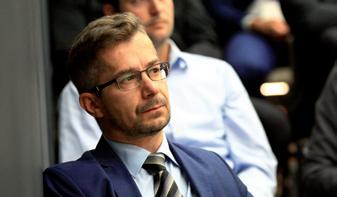
Poland is located in Central Europe, so we have asked László Bűdy, an experienced plastics industry analyst, about the market situation in this part of our continent. You can find it out in the article “Central Euro pean polymer market outlook”.
Last but not least, I would like to draw at tention to Thomas Franken, Project Direc tor Plastics & Rubber, Messe Düsseldorf. Thomas talks about the main themes of this year’s K exhibition. Of course, Poland will also be mentioned.
Everything you always wanted to know about the Polish plas tics industry (but were afraid to ask) can be found here. Enjoy your reading!
OCTOBER 2022 SPECIAL EDITION 03WWW.PLASTECHO.COM
ISSN 2719 4671 www.plastecho.com
PUBLISHER
Plastech Paweł Wiśniewski spółka komandytowo-akcyjna
www.plastech.pl
EDITORIAL ADDRESS
Relaksowa 4 87-100 Toruń, Poland +48 56 6229037 info@plastech.pl
EDITOR IN CHIEF
Jacek Leszczyński jl@plastech.pl +48 56 6581510
EDITOR
Agata Mojcner am@plastech.pl
ADVERTISEMENT
Krzysztof Tarasiewicz kt@plastech.pl +48 530 704050
Grzegorz Robionek gr@plastech.pl +48 530 206666
COOPERATION
Plastics Europe Poland
Polish Union of Plastics Converters
Bydgoszcz Industrial Cluster Tool Valley
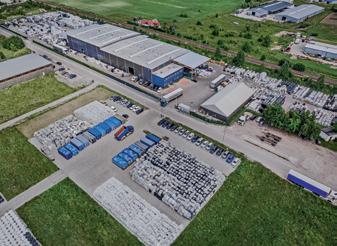
Plastics Recyclers Europe
Polish Association of Pipes and Fittings Producers
The “Polish Recycling” Association
PRINTED BY
ECHO Sp. z o.o.
Kowalewska 5A 87-122 Grębocin, Poland
Circulation: 2000 copies
The editors reserve the right to edit submitted material.
editorial office is not responsible for the content of advertisements and announcements.
SPECIAL EDITION OCTOBER 2022
K 2022: see the future of plastics 10
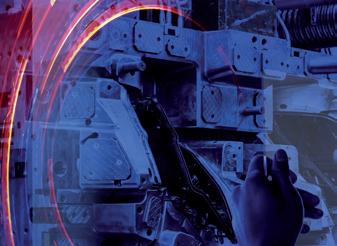
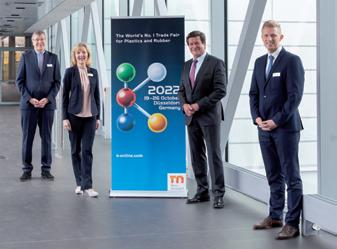
Interview with Thomas Franken, Project Director Plastics & Rubber, Messe Düsseldorf GmbH
Plastics industry in Poland 14
From waste to treasure: the Polish recycling industry 20
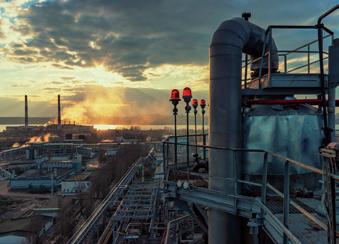
Interview with Tomasz Mikulski, President of ML Polyolefins
Haitian on the Polish injection moulding machine market 24 Interview with Agnieszka Kulisiewicz, Managing Director of Mapro Poland
Brief history of the rubber industry in Poland 28
Analysis of tool industry regarding polymer processing 32
Central European polymer market outlook 36
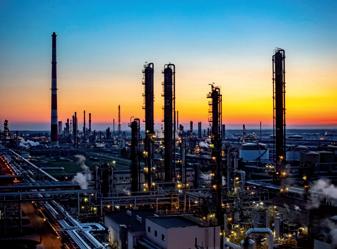
The world’s first large-scale electrically heated steam cracker furnaces 40
Anwil: high quality and repeatability 42
Recycling solutions made in Portugal 44
Proven filtration systems for extrusion 46
Fastpart: fast injection moulds 48
Colour masterbatches and modified additives for plastics 49
Innovation in mixing 50
Meyer: expert in color and polymer sorting 52
Modern and efficient thermoforming machines 54
Besspol: distributor of polymer materials 55
High-accuracy, multifunctional separators for sorting plastics 56
Majumi Chemicals: supplier of best solutions for plastics and rubber 57
A technological line for filament extrusion 58
Processing plastics with Blow Moulding Factory 59
“Polimery Police” complex 60
Better Factory has launched its 2nd open call for full proposals from consortia 62
TOP SUPPLIERS 64
Polish economy – game mindset 66
The
PAGE 10 PAGE 14 PAGE 20 PAGE 28 PAGE 32 PLAST ECHO04
I
70 YEARS OF K IN DÜSSELDORF – A WORLD CAREER MADE IN GERMANY
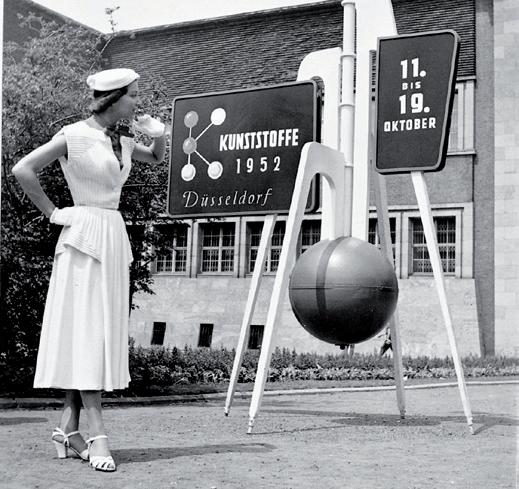
The same year that saw Queen Elizabeth II ascend to the throne, the first artificial heart valve implanted in the USA and the musi cal “Singin’ in the Rain” inspire millions at the cinema, history was also made in Germany with the inaugural edition of K, hosted in Düsseldorf from 11 to 19 October 1952. At that time nobody suspected this event only just taking off would develop into the world’s leading trade fair for the plastics and rubber industry.
The debut event “Wunder der Kunststoffe” (Miracles of Plastics) had place in 1952. 270 registered companies took part in the ex hibition – exclusively from Germany. They occupied approximate ly 14,000 square metres of net exhibition space. At the premiere 165,000 visitors marvelled especially at the colourful consumer goods exhibited by plastics processors.
Today, K in Düsseldorf can look back on a success story of 70 years. It is the most relevant information and business platform of the plastics and rubber industry worldwide. Its position as the lead ing trade show for the entire industry, where theme leadership and innovation go hand in hand to pave the way for visions for the future, is undisputed. On no other platform is the internation
I CIRCULAR ECONOMY FORUM AT K 2022
ality as high as in Düsseldorf. 3,000 exhibitors from 61 countries will participate at the K 2022 trade fair, this year..
VDMA and 13 member companies to present the latest technolo gies for the circular economy in the plastics industry at K 2022.
On the outdoor premises between Halls 10 and 16, the VDMA (German Engineering Federation) as organiser and 13 of its member companies will demonstrate the pivotal importance of technology in the implementation of the circular economy in the plastics industry. The participating companies are all represented at the Circular Economy Forum in addition to their stands in the exhibition halls. Arburg, Coperion, Engel, Erema, Kurtz-Ersa, Lind ner, R-Cycle, Vecoplan are taking part with own pavilions while Battenfeld Cincinnati, Leonhard Kurz, Plasmatreat, Sumitomo (SHI) Demag and Wittmann Battenfeld will exhibit at the joint stand of the Forum. With machines running visitors can see how plastic waste is converted into high-quality regranulates or how recyclates are processed into attractive, highly functional and re cyclable products by means of various processing methods.
The Circular Economy Forum picks up on all three guiding topics of K 2022 – Circular Economy – Climate Protection – Digitalisa tion. Because high tech is also required to optimise manufactur ing processes and make them ever more efficient – as another measure besides the recycling of plastic products to save CO2. Both approaches are not conceivable without digitalisation. It is, for instance, the enabler for digital product passports and glob ally applicable traceability standards. The linking of all compo nents in the production line is considered the prerequisite for optimising processes. On the topic of data exchange between machines the VDMA has initiated a showcase that makes the live data of integrated machines visible on the basis of OPC UA, at the VDMA Dome and also retrievable by smartphone.
The VDMA Dome at the centre of the Forum will once again this time serve as an information point and meeting place. But it will also provide an overview of important technology-relevant process steps in the plastic circular economy. By means of “The Machine” installation nearly 40 companies with over 50 submis sions will present their technology highlights for the Circular Economy. Technologies range from sorting, shredding, washing and regranulating, or material handling to the most important converting processes (injection moulding, extrusion, blow mould ing, foaming and additive manufacturing) not forgetting down stream process steps such as ultrasonic welding, surface treat ment or thermoforming.
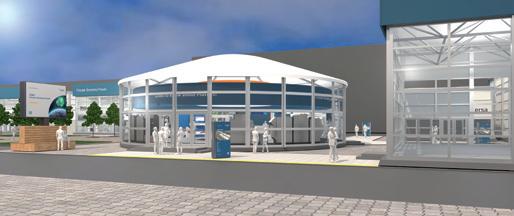
OCTOBER 2022 SPECIAL EDITION 05WWW.PLASTECHO.COM
I “PLASTICS SHAPE THE FUTURE” FOCUSES ON THE CLIMATE PROTECTION, CIRCULAR ECONOMY AND DIGITALIZATION
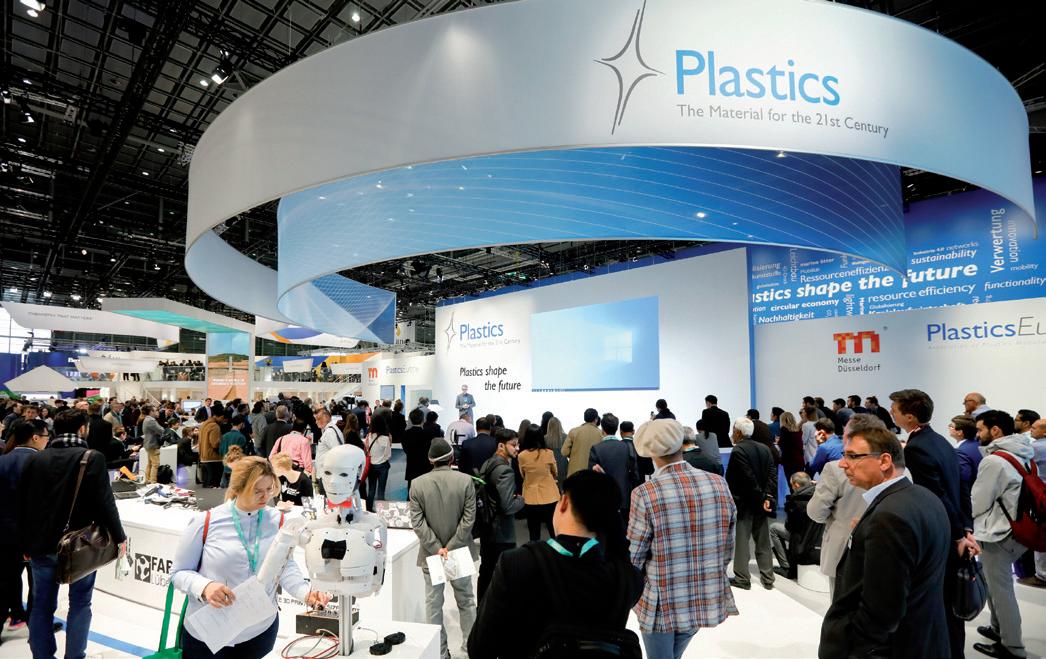
Once again, the central point of contact for the critical exchange of information, thoughts, and opinions is represented by the Special Show “Plastics shape the future“ in hall 6. The focus of the special show under the auspices of Plastics Eu rope Deutschland (PED), the plastics pro ducers’ association, and Messe Düsseldorf will be on the three ground-breaking hot topics of K 2022: climate protection, circu lar economy, and digitalisation.
I PROGRESS STARTS IN DÜSSELDORF
In entertaining formats, high-level guests from the world of politics, science, and the industry, as well as NGOs will share information about and discuss economic, social, and environmental challenges and solutions around the leading themes of K 2022 – thus connecting the trade fair presentations of the companies with the societal agenda of K. Ingemar Bühler, Man
aging Director of PED, puts it in a nutshell: “These are really exciting times: in this year’s K special show, we make it clear where our industry shifts into the turbo mode in terms of greenhouse gas neu trality and circularity. But we also listen carefully to what critical experts tell us and which solutions be proposed to us.” Bühler continues: “It is undisputed that there is still a lot to catch up on the path towards decarbonisation in our industry, e.g. in terms of raw material supply or re cycling. Here, we want to improve – and the K 2022 fair is the right place to come up with fresh ideas and to drive – together with you – many innovative solutions of tomorrow that are allegedly considered to be still unthinkable today”.
I NO DUCKING AWAY – LISTENING
The centrepiece of “Plastics shape the fu ture” is provided by the theme days with
speeches, keynotes, and panel discussions on the three K hot topics: climate protec tion, circular economy, and digitalisation.
At the start of the trade fair on Wednes day, October 19, 2022, key topics and chal lenges of the industry will be directly ad dressed on the K-Forum. As an example, it will focus on the implementation of the results of the “Reshaping Plastics” report presented by the European think-tank Sys temIQ in April 2022. The report outlines several scenarios that are supposed to im prove the circularity of plastics and reduce the greenhouse gas emissions in Europe. The following theme days also focus on the plastics industry’s concrete paths to wards greenhouse gas neutrality, or on plastics as enablers of the clean energy transition. This will make sure that the special exhibition will enrich the exten sive and socially highly relevant exhibition offering of K 2022.
PLAST ECHO06
The new online magazine is aimed at all sectors as sociated with K and provides facts, news, stories and trends from the international plastics and rubber in dustry in German and English all year round. It hones in on K’s big themes such as sustainability, circular economy and digitalisation. It’s all about the mix, which is why the K-Mag includes a wide range of fea tures such as “Industry Voices” with forward-looking contributions by industry representatives and opin ion leaders, “Science News” reporting about current research results and studies, or “Young Profession als” with articles and tips specifically for the young generation, while “Apropos K” addresses a plethora of plastics-related topics from everyday routine, history or from various countries.
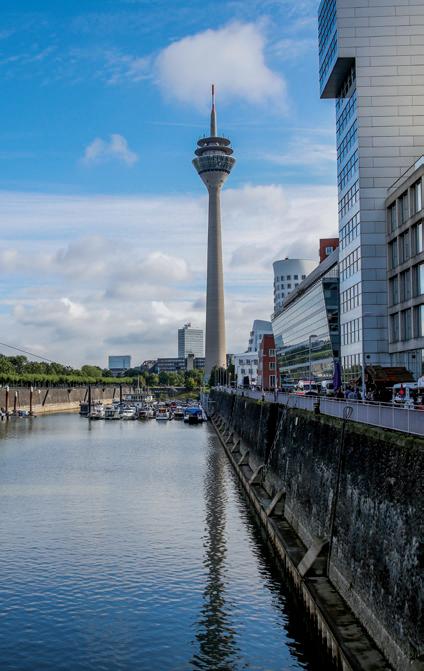

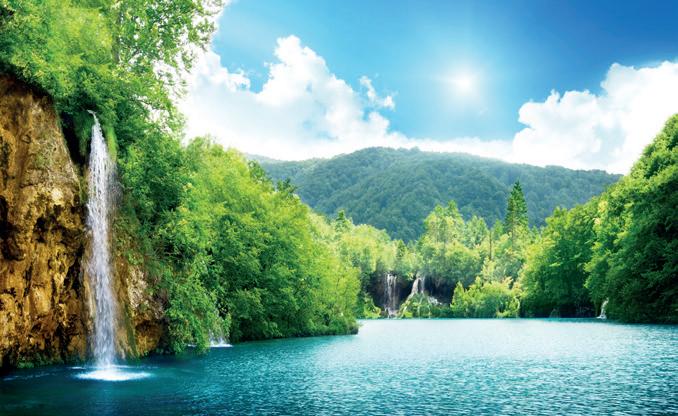
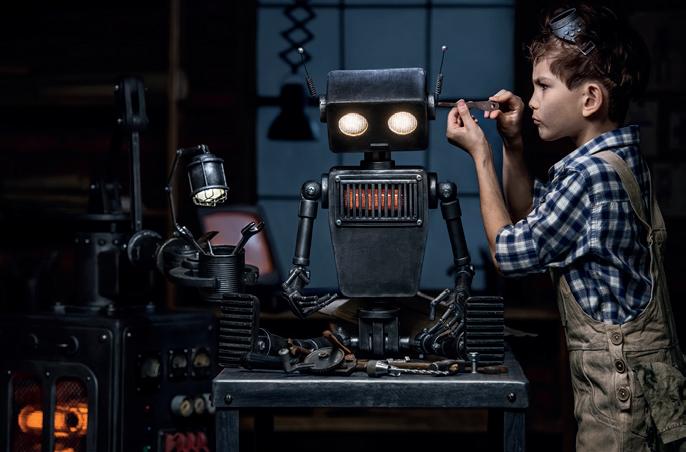
To make the K-MAG as attractive as possible, the con tent is presented in a variety of formats – such as editorial features, news, interviews, videos and photo galleries. The formats here range from clear fact and information processing to infotainment elements –always with a focus on plastics and rubber, of course.
Our “customer oriented” philosophy guides us in offering high in novative solutions able to optimize production processes and en ergy efficiency, to reduce carbon footprint and treat recycled mate rials, ensuring digital connection throughout the production chain. From this perspective, Sustainability, Technology and Digitalisation are the pillars that set us apart in the plastics processing industry.
I K-MAG: 365 DAYS OF COMMUNITY NEWS Moretto East Europe Tel. +48 0 343 903 615 info@morettoeasteurope.com moretto.comfollow us GREEN SOUL TECHNOLOGICAL ATTITUDE CONNECTED NETWORK Hall 11 Stand H56 Stand H66
fot.: Messe Düsseldorf/ctillmann
SPECIALS AT K 2022
I CIRCULAR ECONOMY FORUM
Outdoor area in front of Hall 16
In 10 pavilions, VDMA members – manufacturers of plastics ma chinery and equipment – together with their partners will show case their projects and the technologies they use to make the plastics cycle possible.

I START-UP ZONE AT K 2022
Hall 8b/F35
The starting point for young, innovative companies that are tak ing off into the world of the plastics and rubber industry.
I SCIENCE CAMPUS
Hall 7
The Science Campus is the academic forum to enable exhibitors and trade visitors to discover new perspectives and think beyond the status quo. Universities, colleges and institutes present the latest results of their research work.
I RUBBERSTREET
Hall 6
Rubberstreet will be organised again in 2022 with the aim of in creasing the visibility of rubber and elastomers and highlighting their innovative performance. Following the trend in the indus try, Rubberstreet today is the home of rubber and thermoplastic elastomers (TPE). The idea for this window to the elastomer in dustry has already a long tradition, established in 1983 at the K.
USEFUL INFORMATION
I DATE & OPENING HOURS
Date: 19–26 October 2022
Opening hours: daily: 10:00 a.m. – 6:30 p.m.
Venue & Arrival: Fair ground Düsseldorf
Entrances: North A (downstairs), North B (upstairs 1st floor), North D, East, South
Visitor Hotline: +49 (0) 211 / 4560-7611
E-Mail: info@messe-duesseldorf.de
I HOW TO GET TO THE FAIR
With the 24-hour ticket, individuals or groups of up to 5 people are mobile for 24 hours.
More online tickets are available in the Rheinbahn online store, display them on your cell phone, or print them out.
There are ticket machines in the city trains and streetcars as well as at all subway stations and larger stops.
One-way tickets and day tickets are also available from bus drivers. Please have the appropriate small change ready, as large bills cannot be exchanged.
Would you like personal advice? You can buy tickets at Rhein bahn customer centers and at many kiosks, stationery stores, tobacconists or Lotto-Toto shops.
Source: k-online.com
PLAST ECHO08
Sonderschau
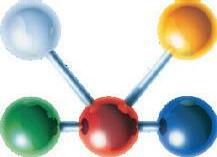
Halbzeuge, technische Teile, verstärkte Kunststofferzeugnisse
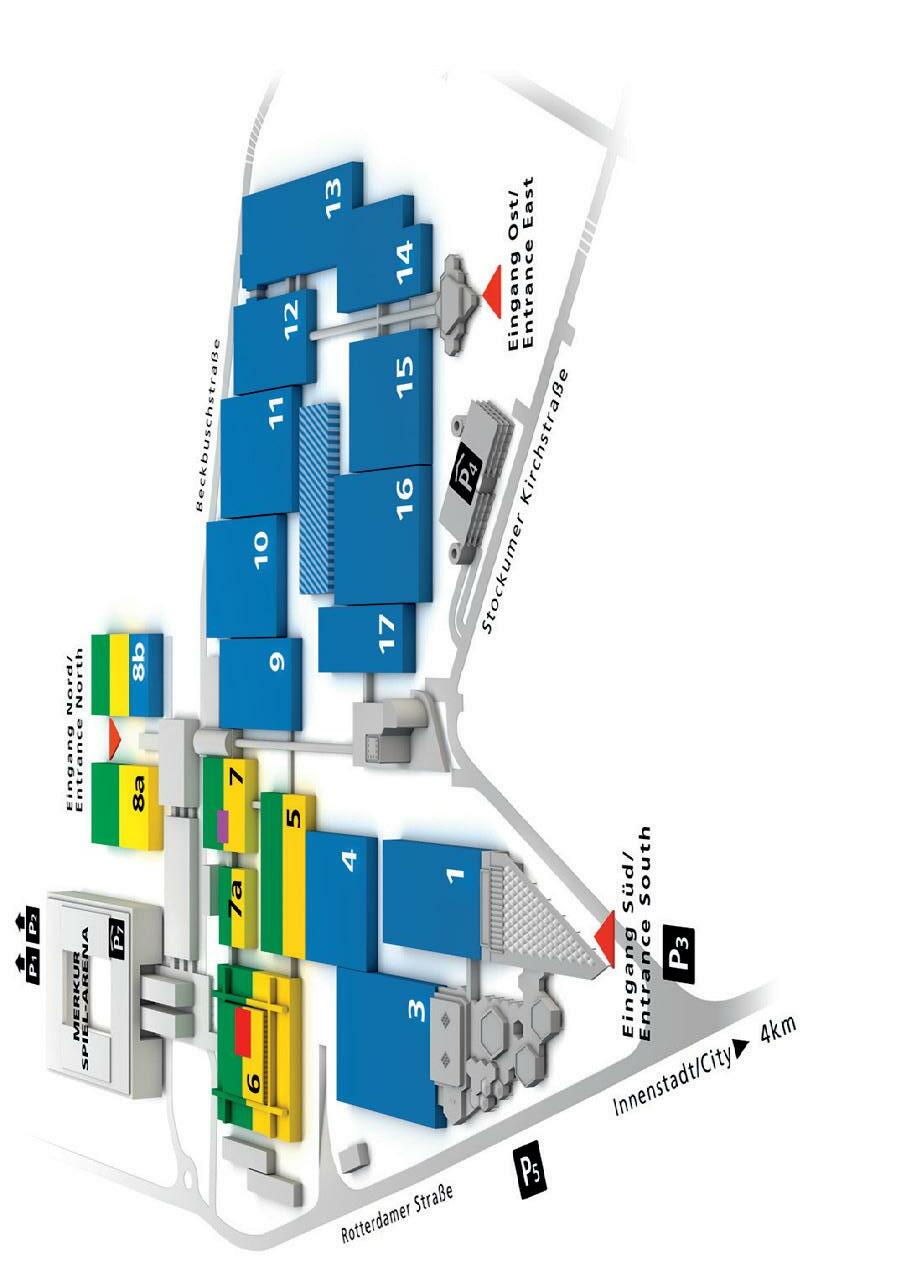
Semi-finished products, technical parts and reinforced plastics Produits semi-finis, pièces techniques et produits en plastique renforcé Semilavorati, parti tecniche, prodotti in plastica rinforzata
Maschinen und Ausrüstung für die Kunststoffund Kautschukindustrie
Machinery and equipment for the plastics and rubber industry Machines et équipements pour l’industrie du plastique et du caoutchouc Macchinari e impianti per l’industria delle materie plastiche e della gomma Rohstoffe und Hilfsstoffe Raw materials, auxiliaries Matières premières et auxiliaires Materie prime e ausiliarie
Special show Exposition spéciale Mostra speciale “PLASTICS SHAPE THE FUTURE” ScienceCampus Circular Economy Forum The World‘s No.1 Trade Fair for Plastics and Rubber 26 OCTOBER Düsseldorf, Germany2022 Me ss e Düsseld or f GmbH P ostf ach 10 10 06 4000 1 Düsseld or f Germ an y Te l. + 49 21 1 4560-01 Fax + 49 21 1 4560-66 8 www .m e sse-d uessel do rf .d e OCTOBER 2022 SPECIAL EDITION 09WWW.PLASTECHO.COM
 WITH
& RUBBER, MESSE DÜSSELDORF GMBH
WITH
& RUBBER, MESSE DÜSSELDORF GMBH
K 2022: SEE THE FUTURE OF PLASTICS INTERVIEW
THOMAS FRANKEN, PROJECT DIRECTOR PLASTICS
K trade fairs are truly unique. It is the larg est exhibition for the plastics industry in the world. So it is natural to ask, where is the secret of success?
Yes, the K show is big, but it´s all about quality, not only quantity. With K, we of fer the worldwide plastics and rubber in dustry its leading trade fair and its most important information and business platform. Exhibitors and visitors from all continents come together and use the op portunities offered by their flagship fair to demonstrate the industry’s capabilities, discuss current trends and set the course for the future. Only at K, can visitors expe rience and compare such a varied and in ternational range of innovations, solutions and high density of product launches. K underscores its special position not only through its popularity with the global in dustries but also by addressing the current challenges of our era and especially of its sector.
In addition to the flagship fair in Düssel dorf, we are active in other parts of the world for the plastics and rubber industry as well. Global Gate is the brand under which Messe Düsseldorf pools its global activities for the plastics and rubber in dustry. This product portfolio leverages the expertise and experience gained by organising the world’s No. 1 K fair in Düs seldorf and by developing successful re gional events. The ten trade fairs in total are professional communication platforms serving as door openers for promising growth markets worldwide.
What do you see as the role of the K show within the plastic industry? K is usually seen as a clear indicator of changes in the global market.
K in Düsseldorf has been the most impor tant meeting place of the international plastics and rubber industry for exactly 70 years now – and counting. It is the benchmark for the entire industry and its global marketplace for innovations. This is where experts from the world of plastics
and rubber come to meet, to demonstrate the industry’s capabilities and to inform visiting experts about new and visionary areas of application for plastics and rub ber materials.
In addition, K in Düsseldorf has an impor tant leading function, because it always addresses future topics and current chal lenges of our day and age and specifically of the industry. This is why the hot topics of K 2022 are circular economy, climate protection and digitisation.
It’s great that you mentioned about hot topics. Could you explain the concepts in more detail?
First of all, it’s circular economy.
The biggest field of action for the plastics and rubber industry is the Circular Econ omy. The circular economy is indispensa ble to stop the littering with plastic waste. Plastic waste must finally be perceived worldwide as an important resource with economic significance. Plastics are not waste, but valuable materials! It offers low-emission and energy-saving efficient processes and technologies. But material mixtures, a variety of plastics and additives often prevent reuse in a cycle. The solution to this problem is Design for Recycling. Plastic products must be “engineered” for reuse during the design process.
Digitisation plays a major role for the circular economy. The digital linking of production chains must be advanced to make it easier to process recyclates. And the introduction of a digital product pass port is required. This ensures that waste sorting systems can identify fully recycla ble packaging using standard recognition technologies. Single-variety fractions in the recycling process that provide detailed information on exact composition are key to obtaining high-quality recyclates for true recycling.
And last but not least, the climate protec tion. Without plastics careful management
of the world climate will not be possible. Plastics are enablers for lightweight con struction, e-mobility, the use of wind and solar energy. The plastics industry can, will and does face up to this existential ques tion. Because it is absolutely crucial to the goal of CO2 reduction.
The topics you have listed raise the ques tion of the future of plastics. In what direc tion will the industry evolve?
As I said earlier, the plastics industry is pri marily faced with the challenge of offering solutions for plastic waste or not gener ating any in the first place. The plastics industry has recognized that it must take the path to sustainable use of the valuable material plastic and that circular economy is the best solution. They are working at full speed on solutions for environmen tal compatibility, resource conservation, waste avoidance, but also more efficient use of raw materials and modern materi als for more sustainable mobility. There is a real spirit of optimism in the indus try in this regard; the current momentum is overwhelming.
Furthermore, digitisation is required as well to optimise manufacturing processes and make them ever more efficient – as another measure besides the recycling of plastic products to save CO2. The linking of all components in the production line is considered the prerequisite for optimising processes and OPC UA is a key technology in it. Platform economy is just a buzzword here, because anyone aiming for entre
The plastics industry has recognized that it must take the path to susta inable use of the valuable material plastic and that circular economy is the best solution
OCTOBER 2022 SPECIAL EDITION 11WWW.PLASTECHO.COM
preneurial success would be well advised to think about a suitable, focused online strategy. And last but not least, the digital ization of communication between busi ness partners, suppliers and customers, i.e. a networked value chain, can become a real competitive advantage.
The broad spectrum of K 2022 pro vides the globally unique level of qual ity and diversity. What we will see at this year’s exhibition?
Yes it’s true, the overview is really wide. Within the fair we present 4 main product categories: raw materials and auxiliaries, semi-finished products & technical parts, machinery & equipment and service, re search and science. Regarding the first category, at K 2022, companies will pre sent fascinating developments in poly mer research that will change the future of the industry. This is a great opportunity
to learn more about the materials of the future: innovative, intelligent, sustainable, recyclable and resource-saving.
Semi-finished products, technical parts and reinforced plastics enable tremen dous growth potential with superi or solutions.
In terms of machines and equipment K 2022 offers the world’s best engineers and software developers the perfect ven ue to spotlight their complex production units in action. Now a new generation of machines and systems has arrived on the scene, setting standards in areas like soft ware optimisation and integrated manu facturing processes to increase energy and material efficiency.
And finally research and science. K 2022 is an international discussion forum with highly qualified experts, scientists
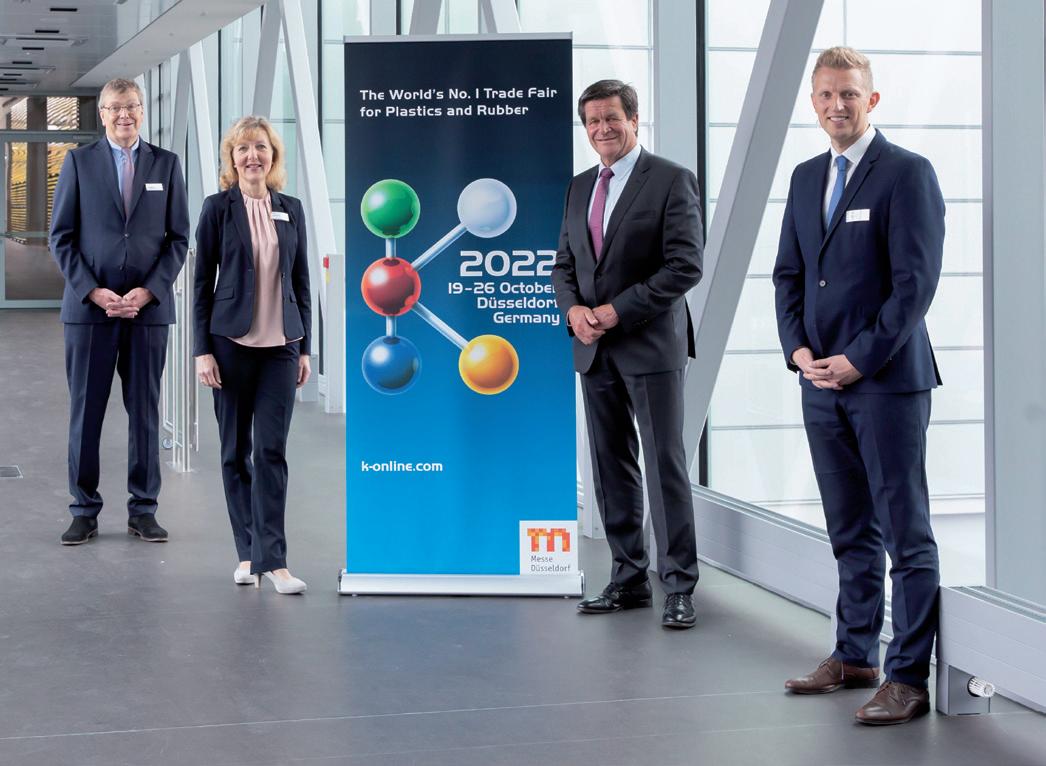
from R&D, research institutes and ser vice providers.
How do you assess the situation and po tential in Poland from the perspective of K trade fairs?
At K, it becomes even clearer what excel lent development our neighbouring coun try has achieved in recent years and how well highly specialised, innovative Pol ish companies can expand their position internationally and prove themselves as a strong partner in the industry:
At K 2010, for example, we had 17 exhibi tors from Poland, in 2022 there will be 38, and the number of trade visitors more than doubled from 2,126 in 2010 to 4,898 at the last K three years ago. We are convinced that this development will continue.
•
Interviewed by Jacek Leszczyński
From left: Erhard Wienkamp (Managing Director Operative Trade Fair Business), Petra Cullmann (Executive Director Operative Trade Fair Busi ness), Ulrich Reifenhäuser (Chairman exhibitors’ advisory board) and Thomas Franken (Project Director for the Portfolio Plastics & Rubber)
PLAST ECHO12
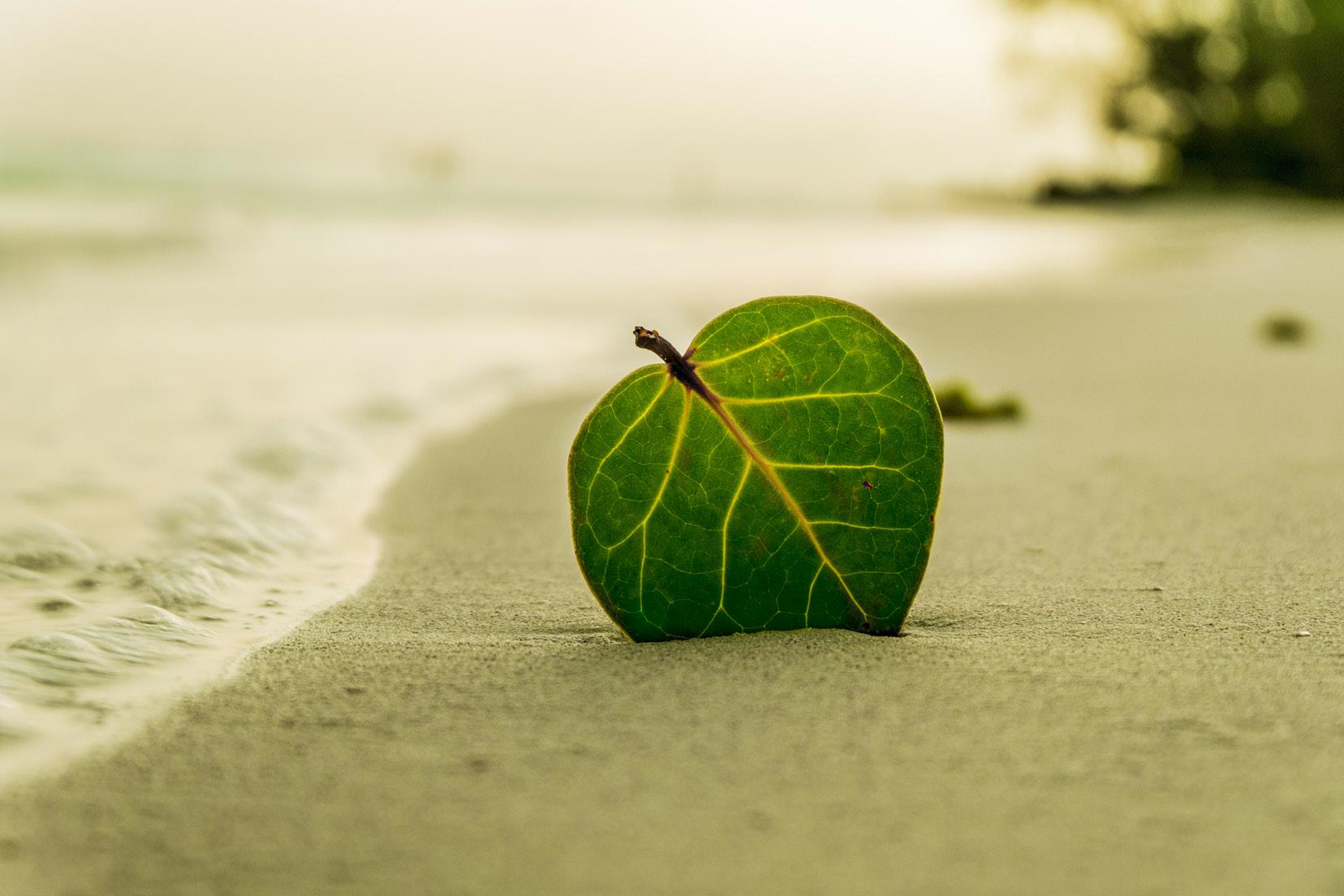



ML Sp. z o.o. ul.Berylowa 7 82-310 Gronowo Górne tel. 55 235 09 85 www.mlpolyolefins.com
PLASTICS INDUSTRY IN POLAND
The plastics industry is one of the main branches of the economy in Poland. The Polish plastics industry employs more than 220,000 people and total production in Poland has exceeded €25 billion (more than 6% of the value of the domestic industry). Plastic converters are the largest sector of the plastics industry.
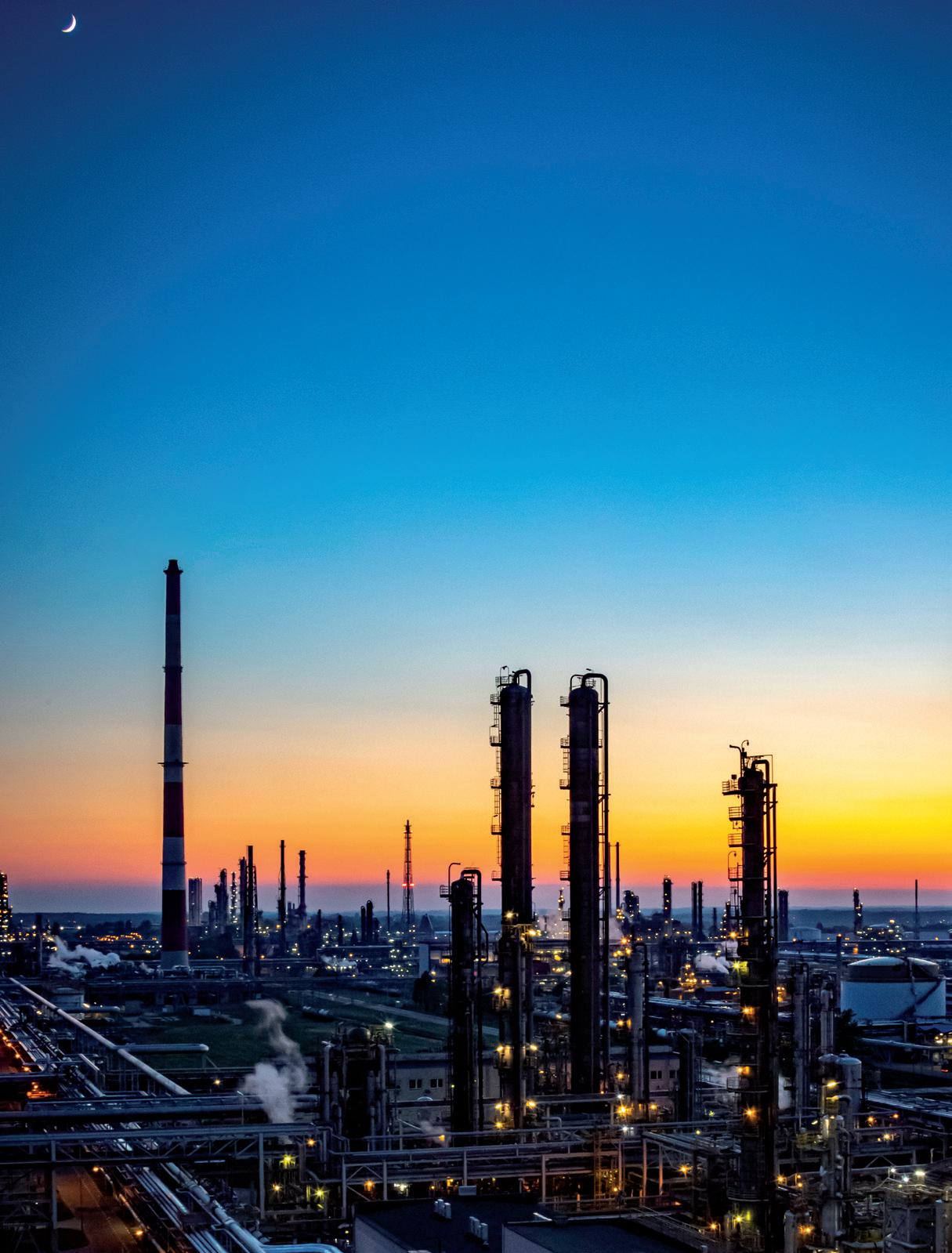 Olefins Complex in Płock, Poland
Photo: PKN ORLEN
Olefins Complex in Płock, Poland
Photo: PKN ORLEN
tion to grow faster than Polish industry as a whole in previous years. In the period of 2015–2020, the sold production of plastic and rubber products increased by a total of 34.1%, while the sales growth of indus trial processing was 21.9%.
ment Construction Product Regulation, as well as the Drinking Water Directive with regard to products in contact with drink ing water”, says Piotr Falkowski, director of the Polish Association of Pipes and Fit tings Producers.
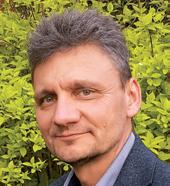 JACEK LESZCZYŃSKI
JACEK LESZCZYŃSKI

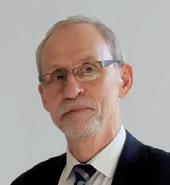 Plastech.pl
Plastech.pl
Between 2018 and 2021, global plas tics exports have increased by 26.1% – from €528.4 bil lion in 2017 to €666.5 billion in 2021. In Europe, plastics production and processing are considered to be one of the most impor tant segments of the EU industry.
The plastics industry is one of the main branches of the economy in Poland. The Polish plastics industry employs more than 220,000 people and total production in Poland has exceeded €25 billion (more than 6% of the value of the domestic in dustry). Plastic converters are the largest sector of the plastics industry.
I MARKET STRUCTURE
According to Plastics Europe Polska, Po land with about 7.5% share of total poly mer consumption by plastic converters, ranks 4th in Europe (EU + UK, Switzerland and Norway).
Currently, the Polish industry processes more plastics than the other Central Eu ropean countries combined. More than 7,000 entrepreneurs in Poland are active in plastics industry. Interestingly, Plastics Europe Polska annual reports show that among the 300+ largest plastics process ing companies, more than 60% are compa nies with Polish ownership.
The Plastech.pl database – the largest Pol ish vortal for the plastics industry – cur rently lists 1,700 companies dealing with plastics and raw materials for their manu facture, 870 companies producing and distributing plastics processing machinery, 1,110 manufacturers of plastics products and 824 companies providing services re lated to the operation of the industry.
The steady increase in demand for plas tics in Poland has caused polymer produc
The largest customer of plastics proces sors is the packaging industry, which consumes more than 1.1 million tons of polymers annually (32.5% of the country’s plastics demand). The largest customer of plastics processors is the packaging indus try, which consumes more than 1.1 million tons of polymers annually (32.5% of the country’s plastics demand). The construc tion industry is source of large polymer orders, using more than 900,000 tons of plastics (25.9%) and the automotive in dustry (360,000 tons – 10.3%).
The Polish construction sector includes the highly competitive market for plastic pipes for water and wastewater transmis sion. The Polish market includes global players as well as established domestic manufacturers who produce not only for the local market, but also for internation al export.
“Due to the fact that Poland is a member of the European Union, the requirements for construction products are the same as in other EU countries. At present, a major challenge will be to adapt the requirements for construction products by the revised European Parlia
“Currently, judg ing objectively, the condition of the Polish plastics in dustry is good. In some sectors we have also become leaders in the EU, for example, in the production of PVC windows, stretch film, products for the automotive industry. Polish PVC join ery has conquered the whole of Europe, and in terms of sales volume it is number one in the EU”, says Robert Szyman, gen eral manager of the Polish Union of Plas tics Converters.
I POLYMER PRODUCTION
Poland’s polymer production sector is dominated by large corporations with large-scale facilities. Both their capital and know-how play an important role in the industry. Although large players ac count for about ¾ of the industry’s total revenue, this share has shown a gentle downward trend in recent years. This is be cause alongside them there is a relatively large group of smaller, but dynamically growing manufacturers focusing on more niche areas (plastics with various special ized applications).
Various types of polymers are produced in Poland, including polyolefins, polyvinyl chloride, polystyrene, polyethylene tere phthalate (PET), as well as some engineer ing plastics such as polyamide 6 and po lyacetal (POM), polyurethane systems, and polyesters and epoxy resins.
In Poland, polyethylenes are the most pop ular, with just over 1 million tons required in 2017 (accounting for 30% of the coun
Robert Szyman Polish Union of Plastic Converters
Piotr Falkowski Polish Association of Pipes and Fittings Producers
Currently, the Polish industry processes more plastics than the other Central European coun tries combined
OCTOBER 2022 SPECIAL EDITION 15WWW.PLASTECHO.COM
try’s plastics demand), as well as: polypro pylene (19% – about 670,000 tons), poly vinyl chloride (13% – 460,000 tons) and polystyrene (12% – 420,000 tons).
Domestic production of plastics does not fully meet the demand in this area, hence the need to import polymers, mainly from Germany, Belgium and the Netherlands.
although the importance of this direc tion has clearly been declining in recent years (a decrease in share by 7 percent age points since 2015), while exports to, among others, some countries in the re gion (Hungary, Romania) have grown at an above-average rate.
of up to 440,000 tons of plastic per year, and the plant is scheduled to begin com mercial operations in 2024. There should be no problem with the sale of polypro pylene from Police, due to its wide use in packaging, construction, automotive and electronics. Part of the production will probably go abroad, which will be facili tated by the plant’s coastal location and easy access to the very absorptive German and Scandinavian markets, which are fac ing a shortage of polypropylene.
I RECYCLING OF PLASTICS
Despite the large and unfulfilled local demand, the plastics industry in Poland exports about 40% of its production. The main recipients of Polish polymers are EU countries (more than 80% of the total export value in 2021), and among non-EU markets, Russia and Ukraine have played the biggest role so far (total share of 7%). Germany remains the key foreign market (as much as 28% of total plastics exports),
The high demand for polymers on the do mestic market, as well as the opportuni ties of favorable exports, are prompting some entrepreneurs in the industry to ex pand production capacity, with the Azoty Group being the best example. At the end of 2017, a new polyamide plant was put into operation in Tarnow (the cost of the investment is more than €65 million), where a mechanically strong engineering plastic that is resistant to high tempera tures and chemical agents is produced. It is widely used in the automotive, textile, electrical and electronic industries and medicine, among others.
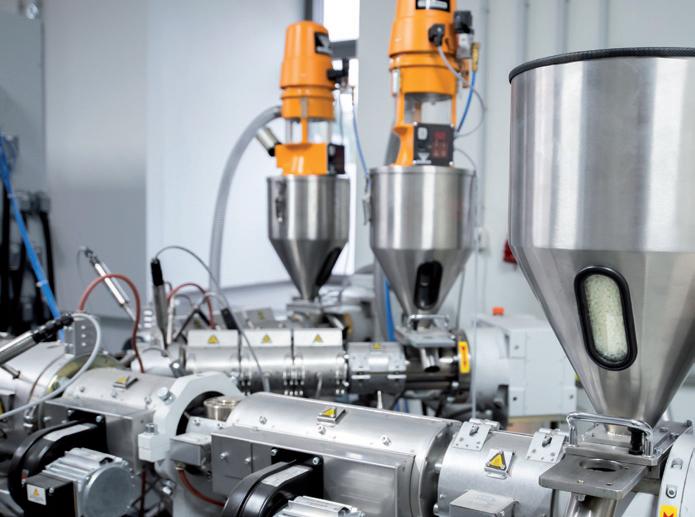
The most important investment project at the moment is the polypropylene plant owned by the Azoty Group in Police. Due to the cost of construction, which may ex ceed €1 billion, it is considered a strategic undertaking for both the Azoty Group and the entire national economy. The invest ment is expected to enable the production
“Compared to Western Europe, Polish recycling in dustry is relatively young, as is the en tire plastic waste management in dustry. Poland is making up for years of neglect at an accelerated pace, with very strong po tential for growth as one of the largest EU countries. Especially in the past two dec ades, companies have developed in Poland that are boldly operating not only in the local market, but also throughout Europe. Importantly, they have made excellent use of the opportunities to obtain subsidies from the European Union, so that today they have a modern machinery park that allows them to produce high-quality recy clates. In addition, Polish entrepreneurs implement many innovations, based on the know-how developed in recent years, and offer increasingly better products”, ex plains Krzysztof Nowosielski, commercial director of ML Polyolefins – one of the leaders of the PP recyclates segment in Central and Eastern Europe.
Krzysztof Nowosielski ML Polyolefins
In Poland, plastic waste is subject to man datory separate collection as one of the four basic raw materials for material re cycling. Reports from the Plastics Europe Foundation show that the amount of recy cled waste in Poland increased 2.4 times between 2006 and 2016.
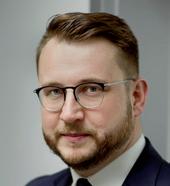
The plastics industry in Poland exports about
40% of its production PLAST ECHO16
According to Conversio, 1.919 million Mg of post-consumer plastic waste was col lected in Poland in 2018 (excluding postconsumer plastic waste from agriculture and household appliances, sports and lei sure), of which:
• 525 thousand Mg were recycled (27.4%),
• 582 thousand Mg were subjected to energy recovery in incineration and co-incineration processes (30.3%),
• 812 thousand Mg were stored in landfills (42.3%).
According to Statistics Poland, 5.47 mil lion Mg of all packaging was placed on the market in 2018, including 984.92 thousand Mg of plastic packaging. 346.35 thousand Mg of packaging waste was re cycled, which accounted for 35.2% of the weight of packaging put on the market. This is less than the average in the Euro pean Union.
According to the survey, the highest level of separate collection is for PET packaging waste (depending on the type, from 58.1% to 80.2%), while the lowest for small pack aging made of PP, PS or PE (yogurt packag ing) – 25.9%.
In the case of PET bottles, as a result of their re-sorting at the recycling and processing plant, the product yield efficiency is:
• about 70% of the delivered waste in processing bottles into flake,
• about 65% of the delivered waste in processing bottles into regranulate.
One of the problems is the lack of plants to process some specific types of plastic waste. Among the plastic wastes that are difficult or not recycled are polystyrene and foamed polystyrene, PET trays and PE/PP films.
“In general, the problem is the increasing prevalence of composite packaging mate rials, consisting of several materials (e.g., paper and plastic or aluminum and plastic packaging), or multilayer packaging. Cur rently, in the PET tray market, only 40% of all products are made of mono-PET mate rial. The remaining 60% are a combination of materials, such as PET, PP, PVC or simi lar, and PE, for example. As it is difficult to separate the barrier layer and/or PE seal able layer of such “composite” packaging using simple and inexpensive mechanical methods, its recycling is very difficult and affects the quality of the final product. As
of today, there is a lack of effective tech nologies for processing this type of pack aging”, indicates the Polish Institute of Environmental Protection – National Re search Institute.
Can the Polish recycling industry be com petitive with foreign companies?
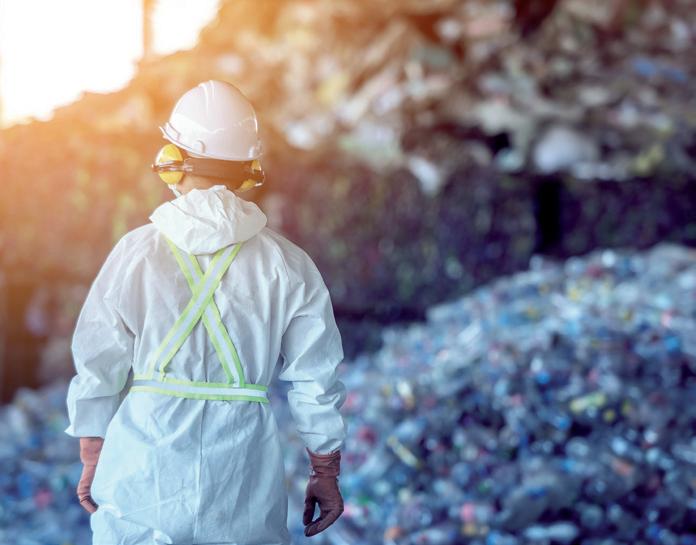
“Certainly our advantage is what some people consider a weakness, namely the size of our recycling companies. Compared to the largest companies in this industry in Western Europe, we do not have such spectacular capacity, but this makes us more flexible in adapting to customer re quirements. We realise that we still have a long way to go to join the top of the larg est in terms of “capacity”, so we try to make up for it with quality, recyclate repeat ability, or service. We are still looking for our competitive edge and as I mentioned earlier Polish companies are betting on innovation. On the other hand, the sheer size of the domestic market and neighbor ing countries gives us natural, great con ditions for development, which, with wise management and attention to customers, will certainly be very visible in the coming years”, emphasizes Krzysztof Nowosielski.
I MARKET ENVIRONMENT
There are many active industry organiza tions and associations in Poland. These include the Plastics Europe Polska Foun dation, which publishes periodic reports on plastics production, plastics processing, and plastics waste collection and processing.
“Issues related to the role and impor tance of plastics in sustainable devel opment, focusing on the pursuit of zero-carbon and circularity, have been our priorities for many years. At Plastics Europe, we see our role as a catalyst for change in the
Anna Kozera-Szałkowska, EngD PlasticsEurope Polska
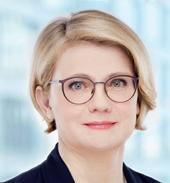
OCTOBER 2022 SPECIAL EDITION 17WWW.PLASTECHO.COM
plastics industry to accelerate the devel opment of sustainable solutions valued by society”, says Anna Kozera-Szałkowska, EngD – managing director of Plastics Eu rope Polska.
The Polish Union of Plastics Converters (PUPC) is an organization of plastics con verters from across Poland. The activity of organization started in 1992. PUPC is a member of European Plastics Convert ers Association.
The Union is a member of Polish Confeder ation of Private Entrepreneurs “Lewiatan” based in Warsaw. Lewiatan is concentrat ing 56 branch unions. It represents about 3.000 companies. Confederation monitors and reviews changes in economical law.
Membership of the PUPC is open to plas tics processing industry employers operat ing in the Republic of Poland or employers indirectly related to the plastics process ing industry.
In the plastic pipe sector, the leading in dustry organization is the Polish Associa tion of Pipes and Fittings Producers. The association actively works for the Polish
pipe industry, while also being a mem ber of TEPPFA – the European Plastic Pipes and Fittings Association. The main tasks of the association include coopera tion with other organizations in the field of standardisation.
Bydgoszcz is home to Bydgoszcz Industrial Cluster Tool Valley which brings together companies of the tool and plastics pro cessing industry and a range of business environment institutions, including uni versities, research and development units, offices, entrepreneurs associations and guarantee fund.
I COVID-19 PANDEMIC AND THE WAR IN UKRAINE
Despite the difficult situation in 2020 caused by the COVID-19 pandemic, de mand for plastics in Poland increased by about 3% compared to 2019, amounting to about 3.7 million tons.
“The plastics industry in Poland, which has been growing intensively for more than two decades, has coped quite well with the challenges of the pandemic. First of all, companies have maintained a stable
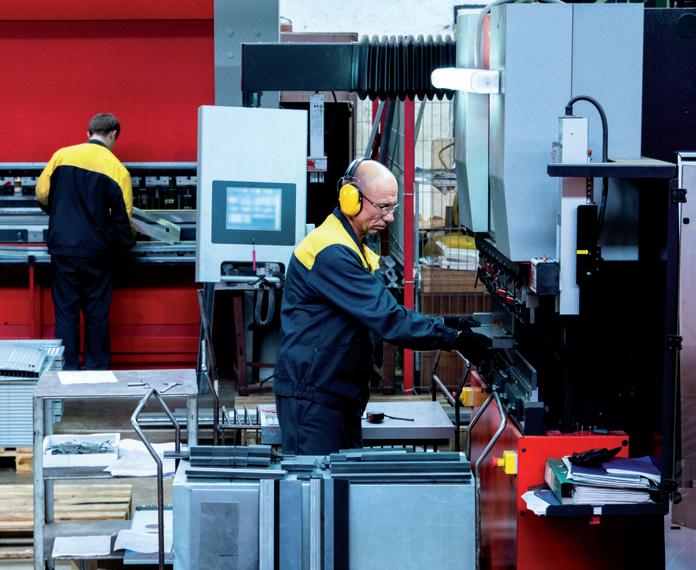
level of employment, which in the con text of the crisis faced by all industries is of a great importance. In 2021, production in the rubber and plastic products sector showed a marked increase in output sold compared to the pre-pandemic period.
In addition, a very optimistic effect is the growing foreign exchange balance of plastic products – in 2020 it amounted to 960,000 tons. This is certainly the result of a systematic increase in domestic and foreign investment in capacity and mod ern technologies in the plastics processing industry, which we have been observing in Poland for several years”, explains Anna Kozera-Szałkowska, EngD.
“The impact of the war in Ukraine is moderate. Limited access to the Russian market, often also due to ethical reasons, where processors themselves give up co operation, can be compensated by sales in other directions. Additionally, we are more tied up with the EU than eastern markets. With regard to Ukraine, of course, coopera tion is limited due to the hostilities”, says Robert Szyman, General Director of The Polish Union of Plastics Converters.
“As far as the construction industry is concerned, we can expect an economic slowdown in the near future, caused, for example, by a sharp decline in mortgage lending and the impact on the develop ment of residential construction. On the other hand, the development of water supply and sewage infrastructure is sup ported all the time by national as well as EU funds”, adds Piotr Falkowski, director of the Polish Association of Pipes and Fit tings Producers.
Both the plastics and other materials markets are subject to similar changes and influences of economic factors. Today we can talk about the impact of hostili ties in Ukraine and the economic sanc tions imposed on the Russian Federation. This negative impact is felt by the entire economy, not only in Poland but also in Europe.
• PLAST ECHO18
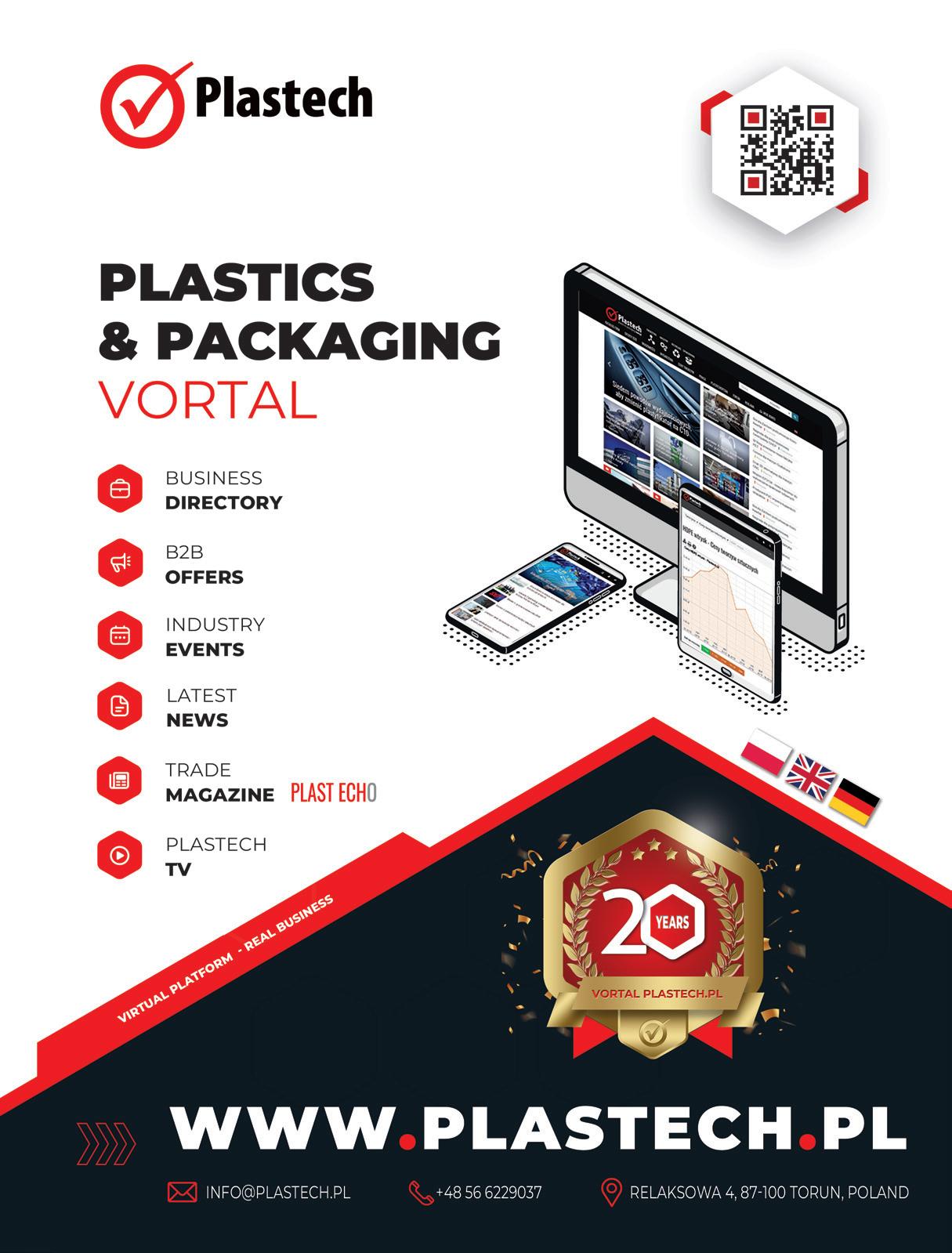
TO
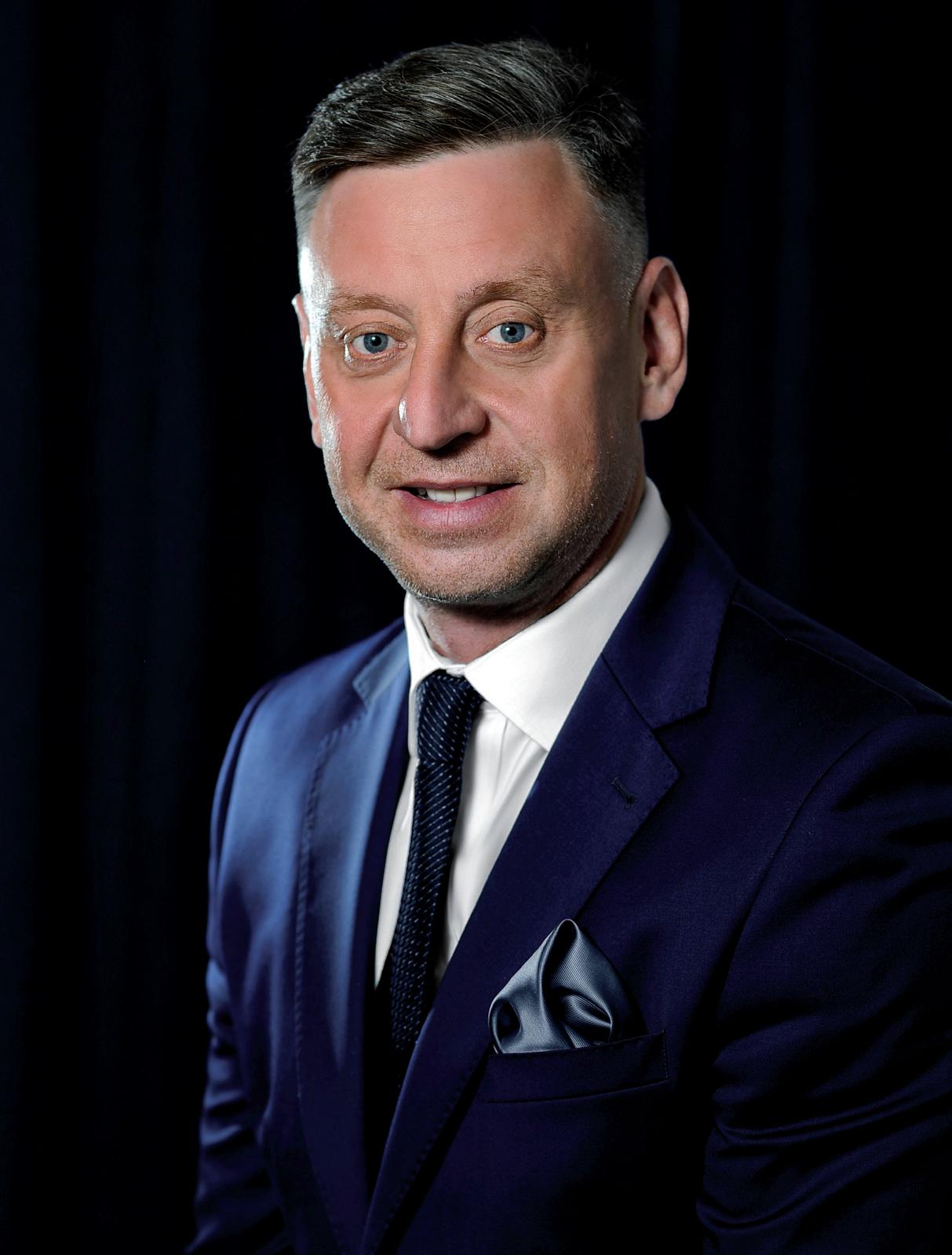 Bannach
INTERVIEW WITH TOMASZ MIKULSKI, PRESIDENT OF ML POLYOLEFINS
Bannach
INTERVIEW WITH TOMASZ MIKULSKI, PRESIDENT OF ML POLYOLEFINS
fot.: Karol
FROM WASTE
TREASURE: THE POLISH RECYCLING INDUSTRY
Investment in the waste management sector in Poland remains stable. Investments are mainly in energy from waste. But Poland is slowly catching up in recycling.
Poland generates ca. 110–130 million tonnes of waste every year. In 2018 it was 128 million tonnes of which 10% was munic ipal waste. Compared to the EU average (486 kg) and other EU countries (e.g. Denmark –781 kg, Germany – 633 kg or Luxembourg –607 kg), Poland has one of the lowest rates of municipal waste generation per capita (325 kg) (Eurostat, 2020). The problem, however, is the low level of recycling. In 2018 only 57% of the municipal waste collected was intended for recovery, of which 26% was sub jected to mechanical and chemical recycling and 23% to energy recycling. The structure of municipal waste is dominated by: biode gradable waste (26 kg per inhabitant), mixed packaging waste (15 kg), bulky waste (14 kg), glass (13 kg), plastics (9 kg), paper and card board (7 kg).1
Plastics are the third largest stream of mixed municipal waste (14%), immediately after bio-waste (which accounts for nearly 20%) and the segment of paper and cardboard (14.5%). Plastics constitute about 10% by weight and 40% by volume of household waste. Although the amount of municipal waste collected selectively has increased (in 2005 it constituted 5% of municipal waste collected while in 2018 it was 29%), but the recycling of plastic waste is largely based on easily collected waste from commercial net works and transport (Statistics Poland [GUS], 2019).
Mr President, the company you run has been present on the Polish market for 20 years. Please tell us what the beginning of recyclates production was like for you.
We started in 2000, but as a trading com pany for packaging and supplying waste to companies that needed it for process ing. We started producing regranulates in 2006, when we set up our first recycling line. This allowed us to produce 70 tonnes of polypropylene regranulate per month. The beginnings were difficult, the crisis came in 2008 and demand for materials
was much lower. However, we successively carried out further investments, develop ing the machine park and building our po sition on the market.
Did you already know then that recy cling would be such an important part of the economy?
At the beginning, my job involved a lot of travelling and visit to western companies dealing with selective waste collection, thanks to which I could gain knowledge and experience. I was convinced that it would be possible to transfer Western models to Poland and improve waste man agement in our country. At the same time, the approach to waste was changing. We started to see it as a valuable material. We knew that this was an innovative action and an investment in the future.
What was the processing of waste into raw material like in the early days of the recy cling industry in Poland?
Of course, in terms of material, in the early days, recyclate was very different from virgin plastics. However, there were many products that could be successfully made from regranulate, and the main reason for using it at the time was the economic fac tor. Over the years, awareness of recycling has increased among consumers and com panies have developed technologically, so that the quality of recyclates is now very close to that of virgin materials. Now the added value for a product is the fact that it has been made from recycled materials.
What is the state of the company today, what do you specialise in?
Our speciality is the production of polypro pylene regranulate. The production capac ity of our plant is constantly growing. In 2020, we set up a fourth recycling line and now have a production capacity of 25,000 tonnes per year. Since 2015, we have also
been producing compounds based on re cyclates. For filling we use minerals and chemical additives. Thus, we are able to de velop an application individually adapted to the requirements of our customers. In addition, we have modernised the labora tory. This allows us to monitor the techni cal parameters of the material in real time, and our products are characterised by high quality and reproducibility, so that contrac tors use them in more advanced details.
How do you assess the Polish recycling in dustry today?
In Poland, we are getting better at recy cling. Today’s technology allows us to pro duce high quality recyclates with stable parameters. However, we must remember that recycling starts with collection and effective waste segregation. Systemic waste management solutions are nec essary not only for recyclers but for the entire economy. Therefore, the emphasis should be on unifying regulations and educating the public. Coming back to the recycling industry, companies in Poland do not have as much production capacity as those in Western Europe, but we must find our advantage in the quality of recyclates and compete in this way. The demand for recycled material continues to grow, and there is also a lot of talk about the circu lar economy, which is also influenced by
Recycling starts with collection and effecti ve waste segregation. Systemic waste mana gement solutions are necessary not only for recyclers but for the entire economy
OCTOBER 2022 SPECIAL EDITION 21WWW.PLASTECHO.COM
EU legislation. All this makes recyclates very popular.
matter is the EU legislation, which sets the path for the Member States to achieve a climate-neutral Europe.
And in your opinion, can Polish recyclates conquere foreign markets?
Of course, Polish recyclates can compete effectively with materials produced abroad.
pacity, but overall Europe lacks capacity and an even distribution of capacity. Our industry is also very energy-consuming and there is considerable concern about this given the current energy market situ ation. However, the basis for setting the industry’s direction is legislation and the requirements for counting recycling levels.
We are in the TOP5 countries by size in the European Union. What is our potential and where can we position ourselves?
Looking at the change in GDP per capita over the last 30 years, the Polish economy is growing the fastest of all EU countries. We are still an emerging market, so the po tential for growth is huge. This is also con firmed by recent data – the unemployment rate in Poland is much lower than EU aver age. Coming back to the recycling industry, there is no denying that Polish regulations were modelled on Western solutions. We still need to transfer proven solutions to our ground, analyse and observe the cur rent activities and draw conclusions to use this potential. Of course, the pillar in this
I can say that in the case of my company, the revenue structure indicates that do mestic and foreign trade are of similar im portance. As I mentioned earlier, our west ern competitors are often larger in terms of production capacity. However, we have access to the same technology and have developed our own know-how. Thanks to our lower production volume, we are also able to respond to the needs of processors by creating individual projects for them and thus compete in foreign markets.
What is the future of mechanical recycling? What are the threats and opportunities?
The processing of plastic waste is based on mechanical recycling. One thing needs to be said – if we are to meet EU plans for the recyclate content of new products we need to develop mechanical recycling. Western countries have much greater ca
So what does the plastics and recycling in dustry need to continue to grow?
Coherent legislation and consistency in its implementation. Although the effects of the waste management and recovery leg islation introduced by European Union are visible in Western Europe, recycling levels are still low in Central Europe. As a recy cling company, we operate with a longterm strategy and we need EU targets to be defined in this way as well. This allows us to better plan investments to increase Eu ropean recycling capacity. And this brings us closer to the main goal of moving to wards a circular and resource-efficient economy.
•
1 Plastic recycling in Poland – a transformation towards a circu lar economy?
Bernadeta Baran, Research Papers of Wroclaw University of Economics and Business, 2021, vol. 65, nr 1, DOI: 10.15611/ pn.2021.1.01

If we are to meet EU plans for the recyclate content of new products we need to develop mechanical recycling
PLAST ECHO22
The p l asti c s pac k aging cons u mpti o n and w a s te d a ta us ed o r th e be s id e graph we r e e xtrapo a t e d based on 2 0 1 9 a vai l ab e figu r e s Th e b e s i de d a ta w e r e r ou nd e d
1 Does not incl u de e last o m e rs, adh e siv e s, c o a ti n gs and s ea ants 2 Based o n intervi e ws with r e c y cl ers. P r e co n s umer lp asti c s w a s t e s main ly o r g n a t ng f r o m th e p astics conver s o n and f r om pla s t ic s p r o d u cti o n (p o y m e ri s a ti o n )
to a l e sser extend 3 Compris ng 3 420 kt f r om p ast i c s p r od uc t io n (p o ly mer s a t io n), 300 k t p r ec o n s u m e r r e c y c l e d p ast i c s and 3 82 k t p o stco n s umer r e c y c le d lp a s ti c s
Compounding o f r e cy c l ed p ast ic s and p l a s ti cs f r om p o ly mer z a t on ma y oc cu r pri o r c o n vers io n 4 Ch e mi c al r ec y c l ing is n o t y et ta k ing p ac e n P ol and 5 P r o c ess l o sses a r e u sual ly sent t o ene r g y r e c o v e r y o r l andfi ll. Part s o f p a s tic s r e si du e s c ou d be a p o t e ntia l f u t u r e s ou r c e o f c h e mi c al r e c y c l ng 6 Carbon C aptu r e and U se (e .g. C O2) s f o r pla s t ics p r od uc ti o n i s not y et u s ed in P ol and
3 % (9 kt) 7 % (45 kt) 18 % (201 kt) 6 % (81 kt) 3 % (10 kt) 3 % (4 kt)21 % (32 kt) P L ASTICS IN MANU F A CTU R ED P R ODUCTS 82 kt 315 kt 126 kt 1,150 kt 173 kt 105 kt 100 kt 49 %38 %13 % 3 %26 %71 % 19 %24 %57 % 37 %38 %25 % 7 %22 %71 % 8 %32 %60 % 25 %17 %58 % P L ASTICS P R ODUCTS C ONSUMPTION 34 % 19 % 11 % 8 % 5 %6 % 17 % CI R CU L AR FEEDSTOCKS & R E P AIR P R ODUCTS IN USE (<1 to >50 years) C ONVERSION to plastic parts and p r oducts R EC Y CLED P L ASTICS output 1 P L ASTICS p r oduction (polymeris a tion) R EC Y CLED P L ASTICS output Import/ Export Import/ ExportImport/ Export Bio-based feedstock Carbon-captu r ed feedstock Fossil feedstockChemically r ecycled feedstock W ASTE collection & sorting 2 , 051 kt Input into EU R EC Y CLING P L ANTS (post-consumer) 520 ktEXPORT SU R P L US ~20 kt C ONSUMPTION (priv a te and industrial end-users) 3 ,400 kt 4 ,102 kt L ANDFILL 844 kt Sent for R EC Y CLING 543 kt P R OCESS L OSSES 180 kt 1 , 710 kt 270 kt ENE R G Y r ecove r y 664 kt ~ 340 kt +41% 32% 27% 41% PO L AND –2020 CI R CU L AR E C ONO M Y FOR P L ASTICS
9 .3% (382 kt) 2020 315 kt %26 %71 % R EC Y CLING ENE R G Y R E C O VE R Y R EC Y CLED P L ASTICS L ANDFILL 315 kt 105 kt 3 %26 %71 % 32 %60 % R EC Y CLING ENE R G Y R E C O VE R Y R EC Y CLED P L ASTICS L ANDFILL BUILDING & C ONST R UCTION P A CK A GING ENE R G Y r ecove r y 664 315 kt 173 kt 105 kt 3 %26 %71 % 71 % 8 %32 %60 % R EC Y CLING ENE R G Y R E C O VE R Y R EC Y CLED P L ASTICS L ANDFILL ELECT R ICAL & ELECT R ONICBUILDING & C ONST R UCTION A G R ICU L TU R E P A CK A GING L ANDFILL 844 kt Sent for R EC Y CLING 543 ktENE R G Y r ecove r y 664 kt 32% 27% 315 kt 173 kt 105 kt % 3 %26 %71 % 7 %22 %71 % 8 %32 %60 % R EC Y CLING ENE R G Y R E C O VE R Y R EC Y CLED P L ASTICS L ANDFILL ELECT R ICAL & ELECT R ONICBUILDING & C ONST R UCTION A UTOMOTIVE HOUSE W A R E, LEISU R E, SPORTS A G R ICU L TU R E P A CK A GING EXPORT SU R P L US ~20 kt L ANDFILL 844 kt Sent for R EC Y CLING 543 ktENE R G Y r ecove r y 664 kt +41% 32% 27% 41%82 kt 315 kt 173 kt 105 kt 49 %38 %13 % 3 %26 %71 % 7 %22 %71 % 8 %32 %60 % R EC Y CLING ENE R G Y R E C O VE R Y R EC Y CLED P L ASTICS L ANDFILL ELECT R ICAL & ELECT R ONIC OTHERSBUILDING & C ONST R UCTION A UTOMOTIVE HOUSE W A R E, LEISU R E, SPORTS A G R ICU L TU R E P A CK A GING ASTICS W ASTE collection & sorting 2 , 051 kt Input into EU R EC Y CLING P L ANTS (post-consumer) 520 ktEXPORT SU R P L US ~20 kt L ANDFILL 844 kt Sent for R EC Y CLING 543 kt 270 kt ENE R G Y r ecove r y 664 kt +41% 32% 27% 41% R EC Y CLING ENE R G Y R EC Y CLED P L ASTICS 315 kt 173 kt 105 kt % 3 %26 %71 % 7 %22 %71 % 8 %32 %60 % R EC Y CLING ENE R G Y R E C O VE R Y R EC Y CLED P L ASTICS L ANDFILL ELECT R ICAL & ELECT R ONICBUILDING & C ONST R UCTION A UTOMOTIVE HOUSE W A R E, LEISU R E, SPORTS A G R ICU L TU R E P A CK A GING EXPORT SU R P L US ~20 kt L ANDFILL 844 kt Sent for R EC Y CLING 543 ktENE R G Y r ecove r y 664 kt +41% 32% 27% 41% 315 kt 173 kt 105 kt 3 %26 %71 % 71 % 8 %32 %60 % R EC Y CLING ENE R G Y R E C O VE R Y R EC Y CLED P L ASTICS L ANDFILL ELECT R ICAL & ELECT R ONICBUILDING & C ONST R UCTION A G R ICU L TU R E P A CK A GING L ANDFILL 844 kt Sent for R EC Y CLING 543 ktENE R G Y r ecove r y 664 kt 32% 27% 315 kt 105 kt 3 %26 %71 % 32 %60 % R EC Y CLING ENE R G Y R E C O VE R Y R EC Y CLED P L ASTICS L ANDFILL BUILDING & C ONST R UCTION P A CK A GING ENE R G Y r ecove r y 664 315 kt %26 %71 % R EC Y CLING ENE R G Y R E C O VE Y R EC Y CLED P L ASTICS L ANDFILL R EC Y CLING ENE R G Y R E C O VE R Y R EC Y CLED P L ASTICS ©Plastics Europe. Publication used with the permission of Plastics Europe Polska

HAITIAN ON THE POLISH INJECTION MOULDING MACHINES MARKET INTERVIEW WITH AGNIESZKA KULISIEWICZ, MANAGING DIRECTOR OF MAPRO POLAND
We are talking with Agnieszka Kulisiewicz – Managing Director of MAPRO Polska, the sole distribu tor of HAITIAN injection moulding machines in Poland, about the current situation on the Polish injection moulding machine market, as well as plans and forecasts for the development and future of the distribution market.
According to Global Injection Moulding Ma chine Market Size, Share & Trends Analysis Report by Material, by Technology, by End Use, by Region, and Segment Forecasts, 2022–2030 published by Research and Mar kets, it is predicted that the global market of injection moulding machines will reach a value over 22 billion USD by 2030.
Between 2022 and 2030, the cumulative av erage growth rate is expected to be a CAGR of 4.6%. The leaders in the production of in jection moulding machines remain countries from the APAC region (Asia and the Pacific), mainly China and India, the next positions in the ranking are taken by the United States and Europe. When it comes to the European market, Germany is the undisputed leader re sponsible for over 35% of the industry’s reve nues, Poland also holds a key position in the Old Continent which is also the third largest country in Europe in terms of consumption of plastics “per capita” kg / person.
A woman in such a high position in this in dustry is rather a sensation and an excep tion at the same time?
At the beginning of the 21st century, wom en in key positions were rare. Fortunately, things have changed today. Women per form responsible functions and achieve professional success in almost every in dustry. Personally, I think that in business it is not gender but competences that matter.
But it seems that it is definitely more difficult for women in this industry, if only for its specificity and extremely technical and at the same time highly specialized nature?
When I entered this industry, about 20 years ago, I had the impression at al most every step that I had to prove or dem onstrate my knowledge and competences
to men. Broadly understood management is my profession, which is also my passion. However, I am a master of engineering by education so technical topics are familiar to me, which gives me a strong foundation and plays an important role. Cooperation with HAITIAN, which sets the direction for of the industry around the world, gives a endless range of development and con tinuously new ideas.
How do you assess the current situation in the industry from the perspective of the Polish and European markets? Do you see any differences here? Are we all together at the gates of another crisis and a com plete slowdown of the production sector or will it not be so bad?
Crises have been around for years and un fortunately appear in cycles. They usually only affect certain economic sectors, while at the same time others experience amaz ing growth and increases in revenue. The production sector, both in Europe and Po land, is so versatile that in my opinion, it is not threatened with complete slowdown. In Poland, we have many very experienced entrepreneurs who are able to adapt their management styles to changing circum stances, as was shown during pandemic.
The end of the year usually means a cyclical and seasonal reduction in the level of production, and this year it is additionally stimulated by recession in demand and reduction in demand in most sectors.
Based on our own experience, the end of the year is always a very busy period at MAPRO Polska. We deliver and install a large number of HAITIAN and ZHAFIR injection moulding machines, we also note an increased demand for new ma chines. Additionally, our clients are already preparing for the new year in December
which means our service department is kept busy providing various services.
Do you think that the machine distribu tor market will be significantly influenced by the rising costs of energy which in the end will be paid mostly by end users? How would you describe the significance of the ongoing conflict beyond the eastern bor der of Poland on this industry?
Rising costs of energy will force the mod ernization of existing machinery parks. Hy draulic injection moulding machines are increasingly replaced with electric driven machines, which has been happening in Western European countries, mainly Ger many and Italy, for several years. Distribu tors that offer electric injection moulding machines and who also provide very good technical and service support, should not complain about the lack of work. Any con flict, like a crisis, brings both opportunities and threats.
What is your opinion about the role and importance of distribution companies in the development of the processing sector? Especially given your case where you seem to be dependent on one brand.
Our role as a distributor is to provide solu tions that the market expects and to stim ulate the market by introducing new inno vations in our products. Not only the brand is the strength of the company, but also its innovation and broad portfolio. And here we certainly have no reason to worry.
It seems that the growing demand for injection moulding machines in sectors such as automotive, consumer goods (household appliances), packaging and electronics will be the main driving forces of market growth in the near future. An additional stimulus to increase sales of ma-
OCTOBER 2022 SPECIAL EDITION 25WWW.PLASTECHO.COM
chines should be seen in the development of the electric vehicle market. Would you agree with this view?
Yes, although I believe that electric cars are only one of the directions for the further development of the automotive industry. We should focus on hydrogenpowered solutions and whatever else the future holds.
In the COVID era, a huge increase in con sumption and demand for products manu factured with the use of injection technol ogy was recorded, which seems to be quite obvious, given the medical sector in terms of personal protective equipment. Has this trend been significantly outlined and not ed in your company?
The last two years have generally been game-changing for us in terms of the number of injection moulding machines sold and delivered. Many of our clients, not only those from the medical sector as it may seem, have increased their produc tion capacity. I believe that the pandemic was a huge challenge mainly in the areas of company management and human re sources. This unheard of situation was a journey into the unknown and gave us the chance to test our readiness and re sponsiveness in crisis situations.
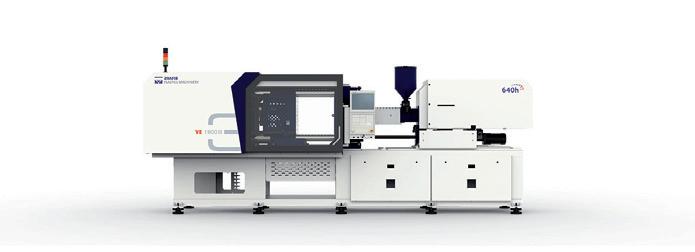
Yes and no. In Europe, we still have many processors attached to hydraulic drives and old “battle-tested” solutions, where it is not required to use fully electric ma chines. On the other hand, the economy, rising costs of energy and programs sup porting energy-saving solutions leave no other choice.
Undoubtedly, the role and position of HAI TIAN in Europe will be changed by the on going investment in Serbia. As I suppose, it will also have an impact on the function ing of MAPRO.
Such a huge investment is another mile stone in the development of HAITIAN brand and our company. We are proud that we can contribute to this success. This is a clear message that the European market is being taken very seriously by HAITIAN.
And what are your company’s develop ment plans in Poland?
There are many plans, we are constantly expanding our horizons and development paths, adapting to the circumstances and situation on the market.
A few words about your philosophy of existing in the business world...

Both in the business world and in private life, I am guided by key values, which in clude responsibility, credibility, respect, development, flexibility, commitment and close relationships with people. I believe that clearly defined rules between the two parties are an unconditional element of running a business.
In private and on a daily basis, how would you describe yourself? And what fasci nates a woman who professionally fulfils herself in such an extremely demanding and unpredictable market?
In private and on a daily basis I am com pletely fulfilled and simultaneously gain ing satisfaction on many levels. I love traveling, healthy lifestyle, Mediterranean cuisine and learning foreign languages. I also enjoy everyday things like tasting Italian espresso.
Thank you for the interview, I wish you continued success in your professional and private life surrounded by the coffee aroma of Italian espresso ...
Thank you very much and I would like to invite you all to K-show in Dusseldorf for a joint meeting with our company and the HAITIAN stand (A-57 hall 15).
In 2020, the hydraulically driven injection moulding machine segment accounted for over 45% of the total market. Do you think there will be a significant change (reduction) of this value in favour of electric machines?
• Hall 15 / A57 MAPRO Polska S.A. Złota 197, 42-202 Częstochowa, Poland +48 887 040 045 biuro@mapropolska.pl www.mapropolska.pl Electric machines? (…) the economy, ris ing costs of energy and programs supporting energy-saving solutions leave no other choice PLAST ECHO26

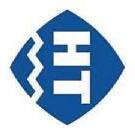
BRIEF HISTORY OF THE RUBBER INDUSTRY IN POLAND
The beginnings of the rubber industry in Poland were in the first half of the 19th century. Its development depended on the dynamically changing social, political and economic conditions.
KAROL NICIŃSKI, P h D Research & Develop ment Centre for the Graphic Arts
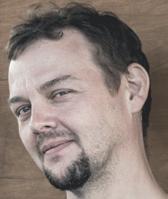
The beginnings of the rubber indus try in Poland were in the first half of the 19th century. In 1834, a factory for “miscellane ous elastic rubber products” was es tablished in War saw, founded by Jo seph Leo Wemmer.
Around 1888 there was the Warsaw Rubber Products Factory, which did not withstand competition from the Society of Russian-French Factories “Provodnik” and the Moscow Rubber Man ufactory Society “Bogatyr”.
At that time, erasers became popular, which were manufactured at Warsaw’s “SPHINX Eraser Rubber Factory”, M. LeszLesz czynski’s ink factory and S. Majewski’s pen-i’s pen cil factory in Pruszkow. A number of work shops producing rubber stamps were also established at the time.
After 1910, in the Piotrków Governorate in the Russian partition, in what is now Ra domsko, there was a rubber products fac tory operated by D. Bugajski and the Rub ber Products Factory “Polonia”, producing, among other things, rubber for technical and factory purposes and steam locomo tive wheels.
As for the Prussian partition, in 1875 there were 16 major companies produc ing rubber products in the Greater Poland area. However, their number gradually de creased and in 1907 only one remained. No further information is available on their location except for two, producing rubber stamps, in Poznan. In 1913, in what was then Prussian Silesia, in the town of Podgorzyn, a factory was established in production of rubber roller pads for the nearby Cieplice paper machine factory. The company still operates today under the name Mitex Polska Sp. z o.o.
A number of rubber stamp craft factories were established in the Austrian partition,
but Vienna was not interested in develop ing the rubber industry in the Galician area.
Many workshops operating at that time can hardly be called industrial plants due to their low technical level. It was not until the Second Republic that numerous plants were built from scratch, which almost fully covered the demand for rubber prod ucts. At the same time, there were many smaller enterprises – companies and sole proprietorships. By the end of the 1920s Poland became a significant producer of rubber footwear.
The crisis of the 1930s halted the devel opment of the rubber industry in Poland. Only one major factory – “Sanok” – was established at that time, and the shoe in dustry saw the emergence of the Polish Company of Footwear “Bata” with a plant in Chelmek.
The development of the Polish rubber in dustry before World War II was influenced by the creation of the Central Industrial

PLAST ECHO28
Region. The “Sanok” factory supplied prod ucts for the railroads and the military. Shortly before the outbreak of war, the pro duction of automobile tires was launched in Debica. Production of synthetic butadi ene rubber “KER” was also initiated there (the plant operated until 1956).
At that time, Poland ranked 9th in Europe in terms of rubber consumption. The state was increasingly influential in shaping this industry. Control of raw material im ports was introduced, and prohibition du ties were imposed on a certain finished goods. As production increased and de mand grew, competition was created, forc ing manufacturers to pay attention to the quality of the products they offered.
Wartime operations conducted in Septem ber 1939 did not cause significant damage to rubber factories. The occupier initially adapted them for production to meet the needs of Nazi Germany, but by 1940 most factories were either closed or in the pro cess of liquidation. Finally, many facilities were destroyed between 1944 and 1945.
In 1946, the Central Board of Chemical Industry, which controlled the chemical industry in the country after the end of the war, established the Rubber Indus try Union to rebuild destroyed plants. In the 1950s destroyed plants were rebuilt and new production halls were put into operation. In the last year of the Union’s operation (1982), it included 14 produc tion plants (3 producing automobile tires, 10 producing various rubber products and 1 metal production).
Significant milestone for the Polish rub ber industry was the implementation and launch of the production of KER S 3012 styrene-butadiene rubber at the Oswiecim Chemical Plant in 1959, and in the fol lowing years other types (KER 1500, KER 1712), which became the basic type of styrene-butadiene rubber in Poland.
Unfortunately, the development of the Polish economy was subordinated to the communist ideology of the USSR, which assumed the superiority of social property over private property. Economic contacts
with Western countries were restricted, making the Polish market increasing ly isolated.
In December 1981, martial law was im posed in Poland, which further aggra vated the unfavorable economic situation. Changes occurred after 1989, when own ership transformation and privatization of state assets began in Poland. But the changes were not beneficial to everyone – some state-owned enterprises declared bankruptcy, or were divided into smaller companies that fared differently in the new market reality.
On the other hand, a number of worldrenowned companies have started op erations in Poland, including Hutchinson, Metzeler, Treleborg, Cooper Standard, Reka Rubber, and Tokai Tubber Industries. Since 1995, the strategic investor in Debica Tire Company S.A. has been the American corporation The Goodyear Tire & Rubber Company, and the majority shareholder of Stomil Olsztyn is the French corpora tion Michelin.
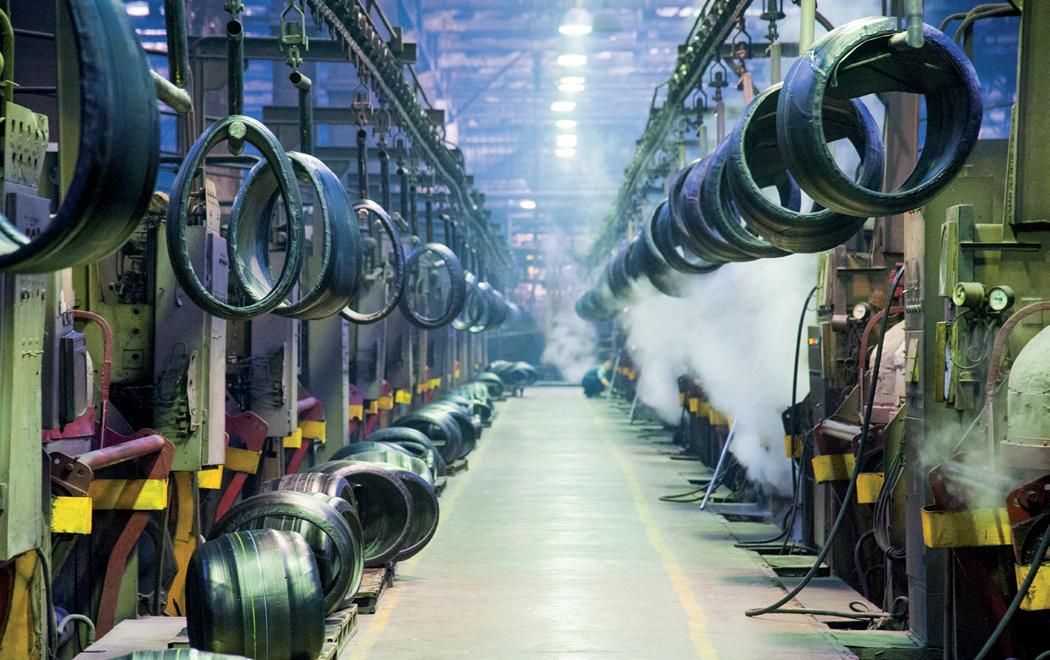
OCTOBER 2022 SPECIAL EDITION 29WWW.PLASTECHO.COM
The world’s largest manufacturer of rub ber products and tires, Bridgestone Corpo ration, has 4 production plants in Poland. Two of them, located in Poznań and Star gard, produce tires for passenger and 4×4 vehicles as well as trucks and buses, the other 2 – in Zarow and Wolsztyn – produce air suspension components.
Stomil Poznan, part of the Polish Arma ments Group, offers tires for aircraft, agri cultural vehicles, and tires for specialized trucks, mining machinery and earthmov ing equipment.
Also worth mentioning is the KABAT com pany from Budzyn. It is a Polish manufac turer of agricultural tires and solid tires for forklifts, inner tubes, protectors, rubber profiles, rubber compounds and a wide range of technical rubber products. From a small handicraft plant founded in 1983 has grown a company that exports its products to 80 countries around the world.
In 2020, 990,000 tons of rubber prod ucts were produced in Poland, includ ing 59,443,000 units of various types of tires and 43,500 tons of belts or conveyor belts. The above statistics do not include retreaded tires… and in Poland truck tires are retreaded.
The leader in Central and Eastern Europe in the manufacture of tire retreading ma terials is Geyer&Hosaja Ltd. The company is also engaged in the production of au
tomobile floor mats, rubber compounds, retreaded tires and retreading materials, granules, road safety components.
The largest consumption of rubbers is as sociated with the production of tires, and another branch of the industry with high demand for these raw materials is the production of conveyor belts. Among con veyor belt manufacturers, mention should be made of Sempertrans Belchatow and Fabryka Taśm Transportowych Wolbrom S.A., which offer products for the most demanding applications in the mining, ce ment and steel industries.
Tele-Fonika of Krakow, among others, sup plies rubber-insulated cables to customers around the world (mainly mines, industrial plants, wind and solar power plants).
Bydgoskie Zakłady Przemysłu Gumowego Stomil S.A. is an enterprise with a centu ry-long tradition, which specialises in the production of hydraulic and industrial hos es and other rubber articles. Suction and discharge rubber hoses are also manufac tured by Wolbrom-based Fagumit.
Sanok Rubber Company S.A. is a compa ny with more than 90 years of tradition, a European leader in the production of rubber products, rubber-metal products and combinations of rubber with other plastics. A manufacturer of rubber com pounds with a wide range of products for the automotive, construction (with par
ticular emphasis on gaskets for carpentry), agriculture, pharmaceuticals and house hold appliances.
According to data published by statista.com, in 2020 the Polish rubber industry included nearly 940 companies, so it is impossible to list them all here. It should be mentioned that today the rub ber industry is not only the processing of classic rubbers, but a much wider range of raw materials including liquid silicone rubbers (LSR) or thermoplastic elastomers (TPE). We should not forget Topsil Global, which is a leader in the Polish silicone and TPE processing market, exporting prod ucts to 40 countries around the world. An other manufacturer of rubber and silicone products is the family-owned company Larkis from Dobczyce, which offers ex truded silicone products, mold details and sealing compounds for various industries.
The production of rubber products cannot do without the relevant raw materials –rubbers and a whole range of chemicals.
The Synthos S.A. Group manufactures and supplies the market with styrene-butadi ene, nitrile and butadiene rubbers, as well as styrene-butadiene latexes: concen trated, carboxylated and self-crosslinking. The Konimpex Group, in turn, supplies technical and specialty carbon blacks (pig mented, electroconductive, with reduced aromatic hydrocarbon content) used in the production of rubber products. It also of fers synthetic rubbers produced in Asia.

• PLAST ECHO30
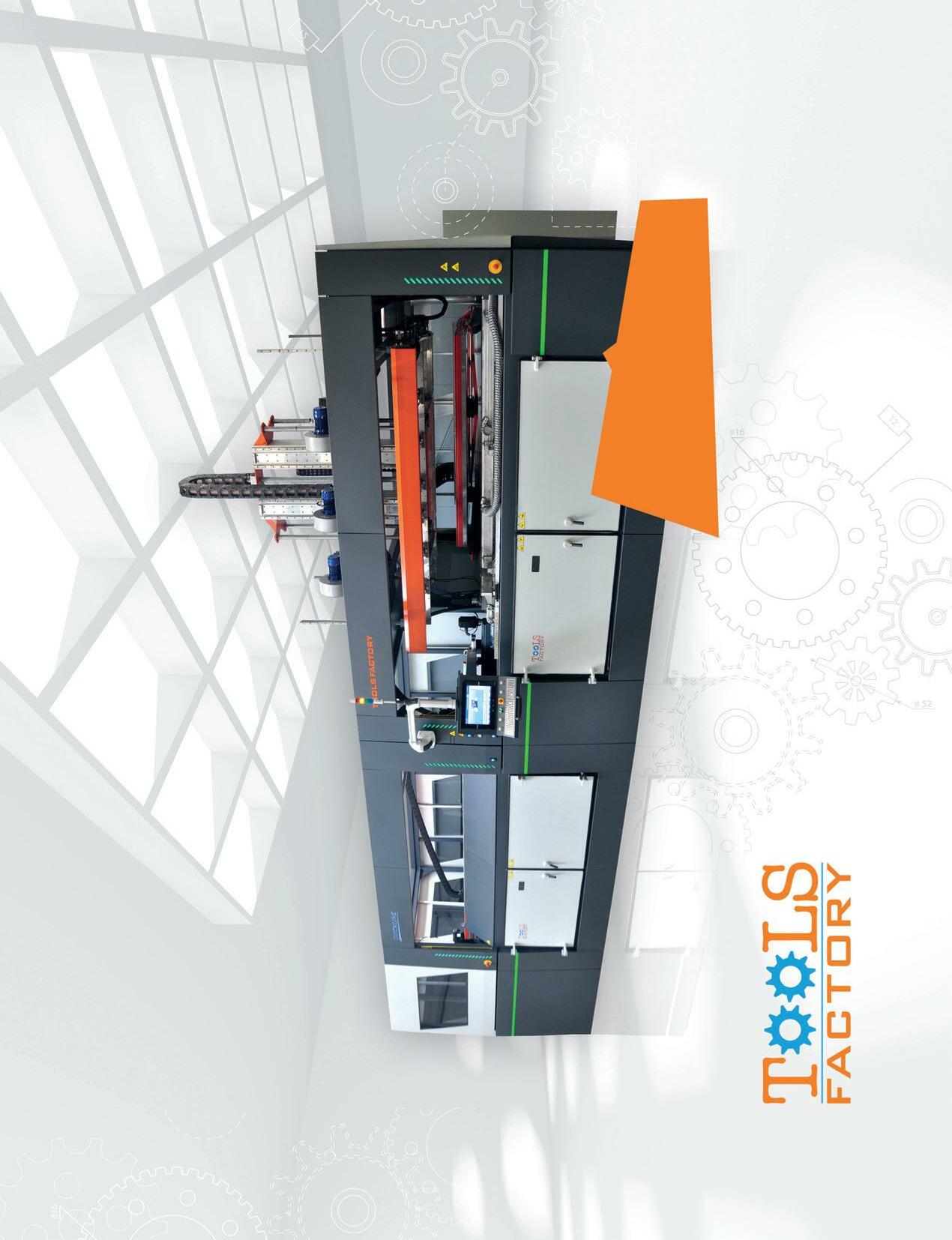
ANALYSIS OF TOOL INDUSTRY REGARDING POLYMER PROCESSING
PIOTR WOJCIECHOWSKI Bydgoszcz Industrial Cluster Tool Valley
Moulding industry is a highly specialised and exceptionally innovative industry sector which is critical to the develop ment of many other sectors. Given how complex the tools for plastic processing can be, as is the case with other industry sectors such as construction or automo tive industries, many workplaces involve
tool design and development activities. In order for it to become a final product, it requires an entire chain of relationships – suppliers of steel, standardised parts, software, various machinery, systems and many others, as well as the knowledge of properties of plastics, their flow character istics within mould injection channels and

much more other data, all requiring exten sive experience.
Among economies such as Germany or Portugal, Poland is a domineering Euro pean producer of tools for processing of plastics used in many sectors, automotive, construction, packaging, home applianc
PLAST ECHO32
es, electronics, medical and many others. None of these sectors could function with out high quality tools.
The only national organisation bringing together and representing the moulding industry is Bydgoszcz Industrial Cluster (BIC) which undertook this particularly challenging task of assessing the condi tion of Polish tool industry.
Since 2006, the Cluster is an organisation that supports companies in the sector by providing assistance in promotion, inter national cooperation, education, research & development, as well as conducts a se ries of integration activities. In 2016, BIC was given the status of the Key National Cluster awarded by the current Ministry of Economic Development, Labour and Technology. The Cluster is also involved in a series of European initiatives regarding international industry networks, carrying out business projects and R&D activities (such as H2020, COSME, Eureka).
I METHODOLOGY
Survey research “Analysis of the Polish tool industry regarding plastics processing” is the first such research conducted by By dgoszcz Industry Cluster.
Survey study was conducted between 13th January and 12th February 2021 and in volved using CAWI method. 34 out of 113 service toolshops in Poland which means the response rate was at about 30%.
The questions referred to the situation of toolshops in 2020, comparing it with 2019. For the purpose of the study the tool in dustry was defined as manufacturers of comprehensive tools for plastics process ing conducting service activities.
I GENERAL INFORMATION
Taking into account the regional structure, the voivodeship with the highest number of companies is Kuyavian-Pomeranian voivodeship, 30, which constitutes about
22% of all. Other domineering voivode ships are Masovian (16 companies), Sile sian (15 companies) and Greater Poland (13 companies). The leading position of the Kuyavian-Pomeranian voivodeship is most definitely the result of the rich in dustrial traditions of the region, including the key historical significance of FORMET Metal Mould Plant S.A.
The vast majority of the entities operat ing in the sector have been on the marked for at least 10 years. There are few new companies – the ones within the 3–5 year range comprise only 6% of the survey pop ulation. Information above shows that the sector is in a long-term relationship with Polish economy and its companies possess long experience and often are important participants on the competitive Europe an market.
The survey also involved the examining of the capital ownership structure (regard ing the companies) – as many as 82% of
participants in the survey are entities with exclusively Polish capital and only in 9% of the cases the owner- ship is entirely foreign. This information is very important because it shows that the sector is firmly set in Polish industry.
As for the number of employees, in 56% of the surveyed entities the number of em ployees does not exceed 50. At the same time 15% of the entities employ at least 200 workers. As indicated by the data, the sector is dominated by small and medium companies. The positive outcome of this is the high degree of flexibility of companies of this size in respect of reacting to mar ket changes and crisis situations. On the other hand such company structure may be somewhat limiting and impeding to R&D activities or building own laboratory infrastructure which are mostly done in larger companies.

Also analysed in the study were the changes in employment in 2020 com
Tool companies in Poland – geographical structure
Source: Report prepared by Bydgoszcz Industrial Cluster
OCTOBER 2022 SPECIAL EDITION 33WWW.PLASTECHO.COM
Source: Report prepared by Bydgoszcz Industrial Cluster
pared to 2019. Notably, in 53% of cases the employment has increased which may be surprising given the fact that in nearly two-thirds of companies the 2020 pro ceeds were lower or at the least equal to those in 2019.
Total employment calculated as full-time jobs over 2019 and 2020 (as of 31st De cember) was virtually unchanged and amounted to 4330 employees. Assuming the surveyed companies constituted 30% of the population in service toolshops in Poland, we can assume that the sector em ploys about 13,000 people.
The population of companies is highly di verse in terms of revenues. Large entities with 20 million PLN revenues comprise about 30% of the surveyed, whereas 12% are entities conducting small-scale activi ty with revenues below 1 million PLN. This confirms the above mentioned informa tion regarding the structure of companies indicating that the majority of them are small and medium companies.

Nearly 100% of the moulds manufactured by the companies participating in the sur
vey are injection moulds. Apart from these, the companies also manufacture blow moulds. This shows that Poland special ised in manufacturing of injection moulds as one of the typical tools for polymer ma terial processing. In 2019, they produced 992 injection moulds and 35 blow moulds, whereas in 2020 the production was at 827 and 61, respectively.
The above data indicates that the 2020 crisis led to a visible change in order quantities. Once again, this is a surprising information given the increased employ ment in over 50% of the companies.
Taking into the account that the surveyed companies constituted 30% of service toolshops in Poland we can estimate that the entirety of the sector’s annual produc tion is at approx. 3000 tool forms (in ser vice activities).
I EXPORT ACTIVITY
In respect of the functioning of the sec tor, an important element is the share of export in sales. It should be noted that as many as 27 companies out of the 34 par
ticipants of the survey manufacture tools for foreign clients, which is close to 80% of the companies.
There are many European countries among the recipients, most commonly mentioned are: Germany, France, Den mark, Netherlands and Russia. Less com monly mentioned markets were Romania, Switzerland, the United Kingdom, Slove nia, Slovakia, Ukraine, Sweden, Portugal, Lithuania, Finland, Hungary and Italy. Also worth noting, are more distant markets for tools manufactured by Polish companies. Among them are, for example: Mexico, RSA, USA, China and India.
As for ICS revenues, 60% of companies earn revenue below 5 million PLN while the remaining 40% earn revenue greater than that amount. When comparing years 2019 and 2020, the share in the respective revenue ranges is virtually unchanged.
I INVESTMENTS AND INNOVATIONS
In spite of the 2020 crisis, over 90% of companies attempted investment efforts which were greatly focused on innovation.
Estimated amount of gross revenues for export (outside the EU) in 2020
PLAST ECHO34
The scale of expenditures was varied and largely depended on the size of the entity. Taking into account the significant, approx. 10% decline in investment in total econo my, it appears to be a good result.
Also analysed in the survey were the sourc es of investment and innovation financ ing which provided unexpected results in certain areas as well. While the relatively large share of own funds is not surpris ing, which have to be present in most in vestments, including partially financed by credit or EU funds, the relatively low share of EU funds in investment financing does seem unusual.
Whereas the EU funds are generally used in case of 38% of the companies in the investment, in relation to investing in in novations the EU funds are used by only 26% of the entities. It seems the propor tions should have rather been reversed. The relatively small share of bank funds in innovation funding, in turn, is not sur prising. From the banks’ perspective these investments are usually characterised by a greater degree of risk.
By analysing the value of expenditures on investments it can be stated that a large share of them (85%) were amounts up to 5 million PLN. Within that range there was a fairly uniform distribution of expendi tures in ranges up to 0.5 million, 0.5–1 million and 1–5 million.
In case of expenditures on innovations the situation was different. Most expen ditures did not exceed 0.5 million (53%). Expenditures on innovations in the 0.5–1 million range were incurred by 21% of surveyed companies, and 1 million by 15% or respondents.
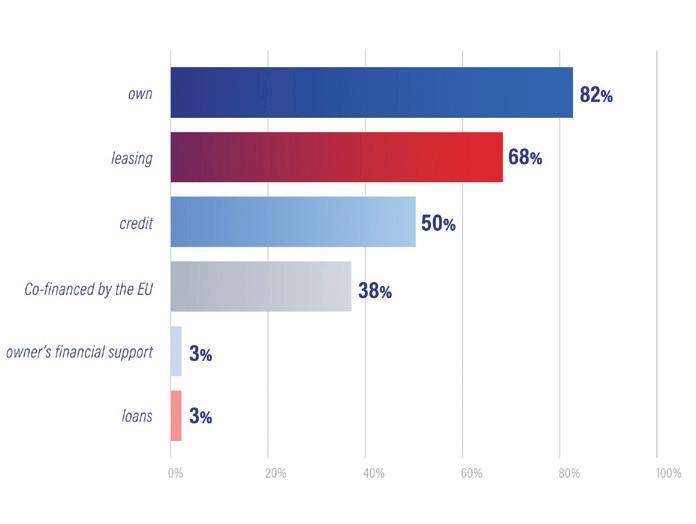
About 30% of the entities declared to pos sess its own research and development facilities. The fact of having such facilities corresponds with the data on registered patents and trademarks. Depending on the analysed category, about 20–30% of the entities possess registered utility models or patents (national, international, indus trial designs, utility models).
The analysis of introduced innovations indicates mostly process and product in
novations, followed by organisational and marketing innovations.
I SUMMARY
The conducted research allows us to draw conclusions regarding the tool industry. It is mostly represented by companies with Polish capital, most of them being small or medium companies, active on the mar ket for many years which shows that it has strong ties to the Polish economy. In regional division the largest tool industry hub is Kuyavian-Pomeranian voivodeship, followed by Masovian, Silesian and Great er Poland. The dominant specialisation manufacturing of injection moulds as one of the typical tools for polymer processing.
Among the recipients of the products are various sectors of the economy – the most popular are packaging, automotive, home appliances, E&E, construction and furni ture industries.
Another important information is the fact that in spite of the pandemic which proved to be a difficult time for businesses, com panies are still investing in innovations and implementing them. It is worth point ing out that despite a decrease in revenues, the employment in 2020 was increased in over a half of them. The dominant position of small and medium companies is both an advantage and a flaw of the sector. On one hand, smaller companies can dynamically adjust to the events on the market and its needs which could partially explain why the sector is handling the pandemic fairly well. A disadvantage cold lie in the smaller potential and capacity to implement in novations, carry out research and develop ment activities, conduct educational pro jects or introducing Industry 4.0 solutions.
Indicated sources of investment financing
Source: Report prepared by Bydgoszcz Industrial Cluster
Perhaps one of solutions popularly used in Europe would be involve joint operation in form of various organisations within that business sector (e.g. clusters) in order to overcome limitations together and imple ment projects from above mentioned ar eas or carry out joint orders.
•
OCTOBER 2022 SPECIAL EDITION 35WWW.PLASTECHO.COM
CENTRAL EUROPEAN
POLYMER MARKET OUTLOOK
From 2018, the market was characterised by low prices and cheap import from outside Europe. When it became clear in October 2020 that we had survived the first wave of the epidemic, the demand suddenly started. However, polymer deliveries were delayed due to a lack of containers. All this generated a sense of scarcity, stronger demand and eventually an actual shortage.
September pre sented the play ers of the polymer market of Cen tral Europe with a difficult task. Their operation is now determined by 3 extremely uncer tain, week-to-week (according to some opinions, day-to-day) variable factors:
LÁSZLÓ BŰDY CEO, myCeppi

1. General demand – the state of the economy, the growth of demand
2. Energy prices.
3. Polymer market demand and prices.
The question is rightly raised: with such uncertainty, what can be expected in the short and medium term in the Central European polymer market? Below, we present “only” the expectations related to polymer prices, naturally touching on the other two topics as well.
To understand the current situation and expectations, let’s first look back into the
past. At the beginning of 2020, the Cen tral European polymer market had no idea what the future held. From 2018, the market was characterised by continuously falling prices and widely available cheap imports from outside Europe. Many of us thought that Europe should specialise in the field of polymers, should not partici pate in the price competition. The prices, which were constantly decreasing to a small extent, fell to the bottom during the first COVID lockdowns due to the ex tremely negative outlook. After the lock downs, prices did rise, but the price level remained low. Due to the wide supply, the actors of the entire value chain reduced their stocks by October 2020. The low in ventory level took its toll and indirectly led to the extremely sharp price increase from November 2020. When it became clear in October 2020 that we had survived the first wave of the epidemic, that there would still be Christmas, the demand sud denly started.
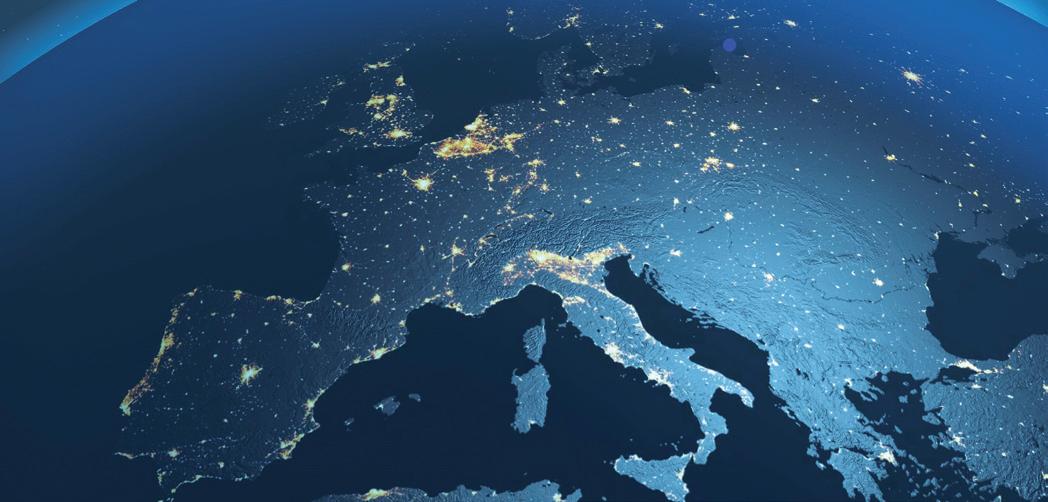
In fact, there was unusually strong de mand, due to the fact that the imported products (plastic products and packaging
materials) coming from the Far East were delayed due to a lack of containers and ship space. Imported polymers were also late. All of this generated a sense of scar city, stronger demand and finally an actual shortage. The basic experience of 2021 in the polymer market was the shortage. The first half of 2022 was characterised by strong, but not real, demand. It was not real, as the players in the plastic value chain learned from the shortage phenom ena in 2021 and put the main focus on safe supply in 2022.
Therefore, many tried to secure their 2022 supply with contracts. Larger plastic con verters even tried to secure themselves with price formulas. Those who did not sign a contract built the safety inventory. As a result, by May 2022, a kind of over kill and overstocking has developed in the entire value chain, from plastic converters to packaging material users. In the mean time, due to the Russian-Ukrainian war and inflation starting in the second half of 2021 and continuously increasing, con sumer demand became uncertain. By May 2022, it became apparent that polymer
PLAST ECHO36
and plastic product inventories were too high. Inventory reductions started in May, and polymer prices started to decrease at the same time. A “high price” period has ended. Prices began to fall rapidly, while the demand for polymers fell significantly. This is so for two reasons. One is the ac tual drop in demand, and the other is that everyone is trying to use up their now ex pensive stocks. That’s why they don’t buy, even the necessary amount only in small quantities. Now, as this article is being written – at the end of September – mar ket participants are waiting for polymer prices to bottom out. They haven’t reached it yet. If it is reached, a slight increase in demand and a normalisation of the poly mer stock level can be expected. This will lead to a short-term, quick 2–3 week mild recovery in demand.
But where can the bottom of the prices be? How low can polymer manufacturers go? In some cases, not for long. The dif ference between the contracted monomer prices and the polymer prices, the ‘spread’ in the case of polyethylene, is danger ously close to a negative value, and is al ready negative in the case of some HDPE grades. In the case of polypropylene, most homopolymers are sold with a negative spread. What’s wrong with that, since we also saw this in the first quarter of 2020? The problem is the high energy price. Poly mer production is also an energy-intensive process. As early as in the last quarter of 2021, when the first sharp price increase occurred in the price of natural gas and electricity. Some polymer manufacturers tried to cover their rising costs by intro ducing an energy surcharge. At that time, due to the good demand, they were able to have this accepted with their custom ers in most cases. Now the energy prices are much higher, but due to the weak de mand, it is almost impossible to enforce the additional costs. This means that the “cash margin” of most polymer producers has turned negative, with the exception of integrated producers and those who can purchase monomer below the con tract prices.
Due to the negative cash margin, some of the polymer manufacturers start to reduce the capacity of their factories and reduce their production. This can already be felt, but for now there are few complete shutdowns in Central Europe, however, by mid-to-late October, some of the nonintegrated, small-capacity producers will be forced to shut down. Unless prices and demand start to rise. There is a chance for that too, since there will be Christmas this year as well. This is likely to bring a re vival in demand. Now, when the players in the plastic value chain have low stocks of polymer and plastic products, last-minute purchasing decisions can lead to a sudden but short-lived price increase this year.
ly and openly communicate price changes resulting from cost changes to their cus tomers. It is possible that they will have to reveal their cards. The survival and opera tion of the plastic value chain is a priority for all players. There is no other chance than direct communication. High European plastic finished product and polymer pric es are the reality of the near future.
Meanwhile, imports of polymer and plastic finished products that can be delivered in rolls are becoming more and more com petitive in Europe. The competitiveness of imports will strengthen due to high Euro pean energy prices and constantly decreas ing sea freight rates. For the time being, protection against imports is provided by the strengthening dollar and the conges tion of European ports. Both will survive in the short term, but industrial policy cannot be based on this. This has to change. Two directions seem logical. One is specialisa tion – we talked about this before 2020. The other is the production of high-quality plastic products with a high recyclate con tent, creating the feedstock side of this.
However, the problems will remain with us next year as well. A lot of companies are likely to extend the winter shutdown period; they stop two weeks earlier than usual in early December; and it is expected that they will start production two weeks later than usual, at the end of January. Of course, those who have sufficient financial reserves. The biggest challenge in 2023 will be energy supply and prices. Since most electricity contracts expire at the end of the year, the new contracts – if there are any – will have shorter periods and higher prices. Consequently, electricity prices will be more volatile. This will be the begin ning of a new era in the plastics industry. It is no longer only the polymer price change that must be passed on, but also changing energy prices. Plastics converters need to acquire new skills. one must learn to clear
We Central Europeans are a bit late in this. Although we produce a lot of recyclate, we use little of it. Until now, we have been busy with the production and export of simpler, mass-produced, virgin polymerbased plastic finished products to Western Europe. We have to change now – we have no other choice – and we have to be at the forefront of plastic recycling. Until now, we have mostly used recyclates to make the finished product cheaper. Now, however, it must be used to make the finished product more valuable. Several good projects have been launched, of which the developments taking place in the field of virgin-recycling compounds stand out. There is also a need for product development on the side of plastic products, i.e. grades with highquality recycled content that are capable of real, uncompromising substitution in the field of finished plastic products must be created. This is what we need to focus on, this is where the future of the Central European plastics industry will be.
Now, when the players in the plastic value chain have low stocks of poly mer and plastic products, last-minute purchasing decisions can lead to a sudden but short-lived price increase this year
•
OCTOBER 2022 SPECIAL EDITION 37WWW.PLASTECHO.COM
POLISH INDUSTRY ASSCOCIATIONS
I POLISH UNION OF PLASTICS CONVERTERS
The activity of organization started in 1992, when Polish Association of Plastic Convert ers was established. Associa tion is a member of European Plastics Converters Association.
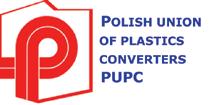
In 2008 Board of Association Management started work on transformation of Association into Employers Union. Finally in 2009 the process was ended and Association started its ac tivity as Polish Union of Plastics Converters (PUPC). The Un ion is a member of Polish Confederation of Private Entrepre neurs “Lewiatan” based in Warsaw. Lewiatan is concentrating 56 branch unions. It represents about 3,000 companies. Con federation monitors and reviews changes in economical law.
Membership of the PUPC is open to plastics processing indus try employers operating in the Republic of Poland or employ ers indirectly related to the plastics processing industry.
www.pzpts.pl
I POLISH CHAMBER OF PACKAGING
Polish Chamber of Packaging (PCP) was established in 1994 as an association assembling manufacturers and users of packaging, packaging materi als, machinery and equipment for the packaging industry. Its main task is to represent interests of companies manufacturing packaging materials, containers and machines, as well as print ing plants acting in packaging area.
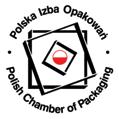
The Chamber is the organizer of the Competition for the thesis on packaging and co-organizer of the PakStar packaging com petition. It awards the titles “Merit for the Packaging Industry” and “Meritorious Company for the Packaging Industry”.
The Chamber is also the initiator of the “Packaging Day” (15 September). As of the year 2000, the post of the PCP Presi dent is held by Professor Stanislaw Tkaczyk.

www.pakowanie.info
I PLASTICS EUROPE POLAND
Plastics Europe Poland, the foundation representing plas tics producers in Poland, op erates within Plastics Europe with its headquarters in Brus sels – the pan-European asso ciation of plastics producers. The Polish representative offices belongs to the Central Europe region with headquarters in Frankfurt am Main, which, in addition to Poland, Germany, Aus tria and Switzerland, also includes Hungary, Slovenia, Slovakia and the Czech Republic.
With close to 100 members producing over 90% of all polymers across Europe, Plastics Europe is the catalyst for the industry with a responsibility to openly engage with stakeholders and deliver solutions which are safe, circular and sustainable. The organisation is committed to implementing long-lasting posi tive change. The managing director of Plastics Europe Poland is Anna Kozera-Szałkowska, EngD.
www.plasticseurope.org

I WASTE MANAGEMENT AND RECYCLING CLUSTER
The Waste Management and Recycling Cluster associates Polish SME and provide full range of waste management services for most categories of waste throughout Poland and the EU countries and foreign as well.
The core of the Cluster make up a SME with Polish capital, involved in the collection, removal, treatment, recovery, recy cling and transportation of all kinds of waste, manufacturers of machinery, equipment and technological lines for processing, recycling and disposal of waste as well as the manufacture of finished products using recycled material.
A support for the companies are scientific institutions, modern research and development centers and companies and institu tions involved in business support.
www.klasterodpadowy.com
PLAST ECHO38
I POLISH CHAMBER OF CHEMICAL INDUSTRY
The Polish Chamber of Chemi cal Industry (PIPC) is the larg est industry organisation rep resenting the sector in the national and international arena. It is the most important representative of companies and institutions connected with the Polish chemical industry in their relations with public ad ministration bodies, European administration authorities, and industry organisations.
The Polish Chamber of Chemical Industry is a member of key business and scientific associations in Poland and is the only organisation entitled to represent the Polish chemical industry in the international arena.
Among the members of the Chamber are the largest manu facturers of chemicals, refining and petrochemical companies, distribution companies, scientific and research institutes.
www.pipc.org.pl
I POLISH ASSOCIATION OF PIPES AND FITTINGS PRODUCERS
Polish Association of Pipes and Fittings Producers (PRiK) brings together companies whose main business profile is the production of plastic pipes or fittings in Poland.
The PRiK Association is active in integrating the plastic pipe and fittings industry. It pursues this objective by representing the industry towards state and legislative authorities, national and international organisations with regard to statutory and standardisation regulations in the area of production, use and recycling of plastic pipes and fittings.
Polish Association of Pipes and Fittings Producers holds the Secretariat of Technical Committee No. 140 for plastic pipes and fittings of the Polish Committee for Standardisation.
I BYDGOSZCZ INDUSTRIAL CLUSTER TOOL VALLEY
Established in 2006, Bydgo szcz Industrial Cluster Tool Valley incorporates companies of the toolmaking and plastics processing industries and uni versities, research and devel opment units, public authorities, entrepreneurs’ associations and financial institutions.
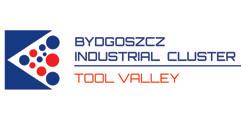
The majority of companies in the processing and toolmaking industry are SME. The cluster’s aim is the integration of pro cessing and tool experts, establishing a network of business connections, technological development and an increase of innovation in production. The members of the Cluster offer high-quality moulds and other processing tools and deal with the manufacturing of plastic products for various industries, i.a. automotive, household appliances,furniture production, medi cal disposables production, pharmaceutical, cosmetic and food packaging industries.
www.klaster.bydgoszcz.pl
I THE “POLISH RECYCLING” ASSOCIATION

The “Polish Recycling” As sociation was established in September 2015 to promote recycling of waste in Poland and support the development of the domestic recycling in dustry. The association brings together companies dealing in waste recycling, representing the industry’s interest in state bodies, the other institutions and organizations.
The main objective of the association is to constitute a reli able and responsible voice for the recycling industry by rep resenting the common concerns and interests of the industry before government agencies, institutions, and governmental and non-governmental organizations. Moreover, the associa tion believes that it is crucial to promote recycling as the most favourable process for the environment in terms of processing waste and ensuring sustainable production.
www.prik.pl
www.polskirecykling.org
OCTOBER 2022 SPECIAL EDITION 39WWW.PLASTECHO.COM
THE WORLD’S FIRST LARGE-SCALE ELECTRICALLY HEATED STEAM CRACKER FURNACES
BASF, SABIC and Linde have started construction of the world’s first demonstration plant for largescale electrically heated steam cracker furnaces. By using electricity from renewable sources instead of natural gas, the new technology has the potential to reduce CO2 emissions of one of the most energy-intensive production processes in the chemical industry by 90% compared to technologies commonly used today.
The demonstration plant will be fully in tegrated into one of the existing steam crackers at BASF’s Verbund site in Lud wigshafen, Germany. It will test two differ ent heating concepts, processing around 4 tons of hydrocarbon per hour and con suming 6 megawatts of renewable elec tricity/power.The start-up of the demon stration plant is targeted for 2023. With the new technology BASF, SABIC and Linde aim to develop full-scale commercial pro duction plants that can achieve significant reductions in carbon dioxide emissions, compared with today’s technology.
The investment costs for the pilot will be borne by BASF and SABIC and the demon stration plant will be operated by BASF. Linde is the engineering, procurement and construction partner for the project and in the future will commercialize the devel oped technologies.
The project has been granted €14.8 mil lion by the German Federal Ministry for Economic Affairs and Climate Action un der its “Decarbonization in Industry” fund ing program, to help address challenges due to current framework conditions and energy costs.

“BASF has the entrepreneurial drive to achieve the energy transition, and electri fication of the steam cracker is very signifi cant for us,” said Dr. Martin Brudermüller, Chairman of the Board of Executive Direc tors of BASF SE. “We are therefore pleased that BASF has been granted project fund
ing by the German Federal Ministry for Economic Affairs and Climate Action, which shows us that our approach is also supported by policymakers.”
Yousef Al-Benyan, Vice-Chairman and CEO of SABIC said: “Our vision is to transform our business and to help address urgent global challenges through efficient car bon management. This project holds huge potential for all of the petrochemical in dustry around the world in our drive for low carbon emitting processes. With the milestone we are jointly announcing today on the start of construction, we hope that our three-party collaboration can inspire many more collaborations that ultimately bring the world to net-zero greenhousegas emissions through a circular car bon economy.”
“This project demonstrates how global companies can successfully collaborate by combining their expertise in technology development, EPC execution and operation. The timely delivery of the demonstration plant will be a fundamental milestone on the path to making sustainable solutions
available to the petrochemical industry. We are proud to be part of this breakthrough project,” said Jürgen Nowicki, Executive Vice President Linde plc and CEO of Linde.
The demonstration plant aims to show continuous olefin production using elec tricity as a heat source. The plant is de signed such that two heating concepts can be tested in parallel: Direct heating applies an electric current directly to the process tubes inside the reactor; indirect heating uses radiative heat of heating el ements placed around the tubes. Testing these two concepts will make it possible to react flexibly to different customer and site requirements.
Steam crackers play a central role in the production of basic chemicals and require a significant amount of energy to break down hydrocarbons into olefins and aro matics. Typically, the reaction is conducted in furnaces at temperatures of about 850 degrees Celsius. Today these temperatures are reached by burning fossil fuels. The project aims to reduce the CO2 emissions by powering the process with electricity.
• SABIC Poland Sp. z o.o. Komitetu Obrony Robotników 45A, 02-146 Warszawa, Poland +48 22 432 37 32 piotr.kwiecien@sabic.com www.sabic.pl
HALL 6 / D42 HALL 6, GALLERY / N-02 – N-03 PLAST ECHO40
COLLABORATION. THE COOLEST WAY TO CREATE ENERGY.
Highly efficient solar farms are cooled by water and SABIC energy partnerships.
In collaboration with renewable energy companies, we’re helping build solar fields on lakes. The panels float on barrels made from SABIC materials, enabling the panels to stay cool to generate energy more efficiently without overheating or using valuable land resource. Solar collaborations are cooler with Chemistry that Matters™.
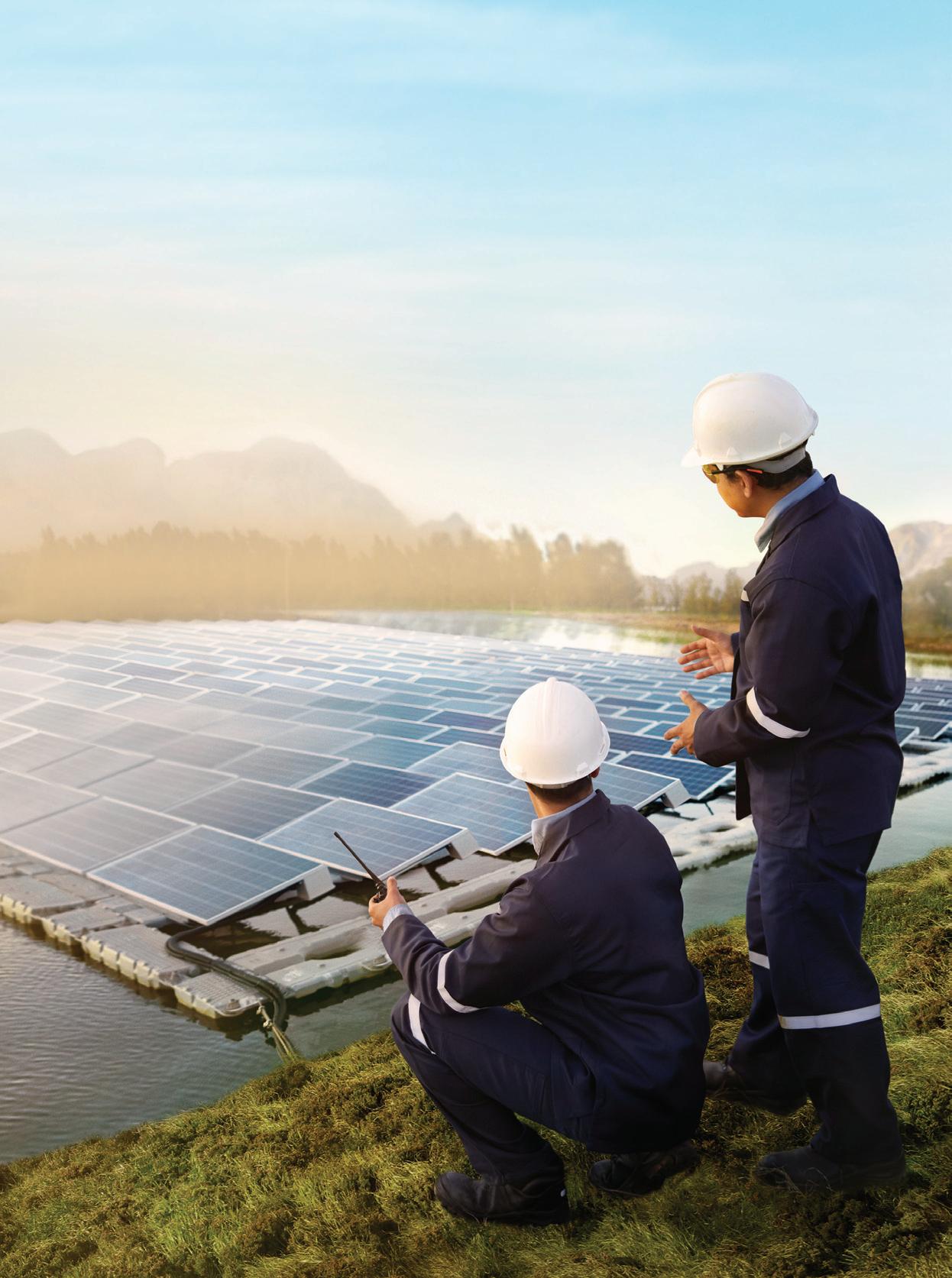
Meet one of the world’s leading chemical companies at SABIC.com/collaboration




MEET US AT K 2022 19-26 October Düsseldorf, Germany
ANWIL: HIGH QUALITY AND REPEATABILITY
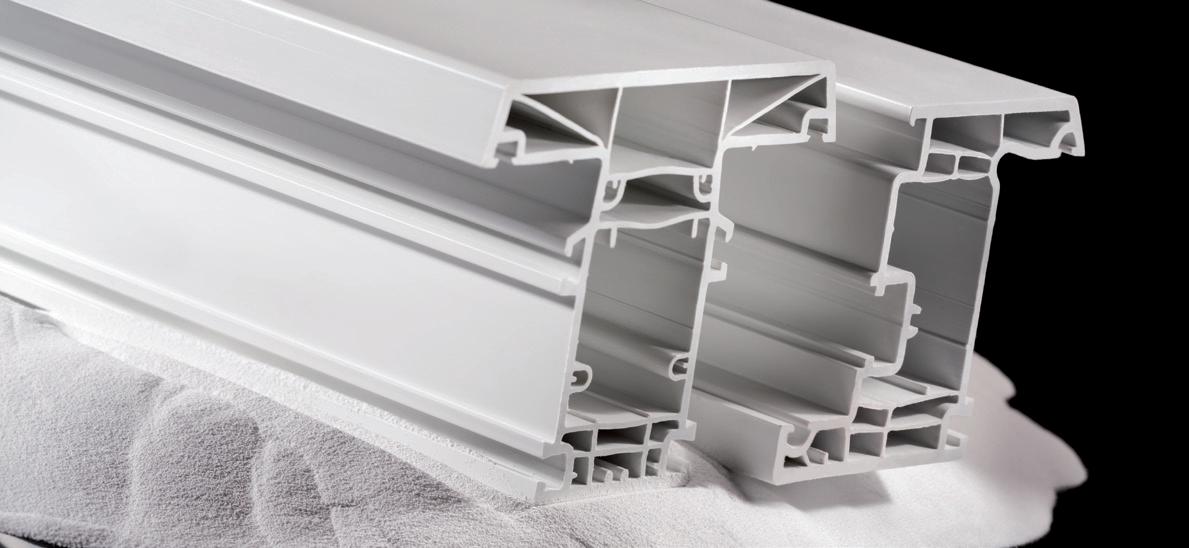
• The sole manufacturer of suspension polyvinyl chloride in Poland

• One of the pillars of the Polish economy and a leader in the large scale industrial chemical synthesis sector
•
The company belongs to the ORLEN Group – one of the largest corporations in Central and Eastern Europe
• A well-known producer of cable compounds, dry blends and rigid technical compounds
As a part of ORLEN Capital Group, ANWIL S.A. implements the strategy of building a strong integrated corporation based on strength ening its market position, customer orientation and the use of integrated value chain, i.a. through the implementation, maintenance and enhancement of the Integrated Management System with applicable ISO 9001, ISO 14001 and ISO 45001 standards.

HALL 7a / C01 PLAST ECHO42
I
SUSPENSION POLYVINYL CHLORIDE
• modern production process based on a license from the Japa nese company Shin-Etsu
• production guaranteeing the highest quality and repeatability
• basic component of material formulas
I AREAS OF APPLICATION
• construction (construction pro files, panels, outlet pipes, pres sure pipes, drainage pipes, con nectors, odour traps, gutters, fitted carpets, skirting boards, sealing strips, tiles, wallpaper, cable coatings and insulation of electric wires)
• automotive industry
• medicine
Available types of PVC:
• K-58
• K-67 HBD
• K-70
I PVC-BASED PLASTICIZED COMPOUNDS
• compounds for cable applica tions (insulating and protective polyvinyl chlorides)
• compounds for general use (in jection moulding and extrusion)
I AREAS OF APPLICATION
• all-purpose cables and conductors
• special cables and conductors
• coated wire mesh
• soft construction profiles
• connectors and plugs
• profiles for the automotive industry
• flexible hoses for household appliances
• gaskets
• fitted carpet strips
I PVC-BASED TECHNICAL COMPOUNDS AND DRY-BLENDS
• rigid extrusion compounds
• rigid injection moulding compounds
• rigid foamed compounds
• dry extrusion blends
• dry foamed blends
I AREAS OF APPLICATION
Electronics
• electrical wiring and ducts
• electro-installation pipes, corru gated pipes and conduits
• connectors, sockets and switches
• casing Furniture industry
• furniture edges and strips
• furniture profiles (solid and foamed)
Construction
• window profiles
• wall panels, ceiling panels, roller blind panels
• tile boards, solid and foamed skirting boards
with you
• strips for window and door woodwork
• drinking water pipes, fittings and valve elements
• fencing elements
• fittings
We are looking forward to cooperating
ANWIL S.A. Toruńska 222, 87-805 Włocławek, Poland polanvil@anwil.pl compounds@anwil.pl www.anwil.pl OCTOBER 2022 SPECIAL EDITION 43WWW.PLASTECHO.COM
RECYCLING SOLUTIONS MADE IN PORTUGAL
Plasmaq lines are in operation in Mexico, Singapore, Spain, UK, Romania, Slovakia and Poland, among others. In 2022, the company celebrates its 30th year in busi ness as Plasmaq – Máquinas e Equipa mentos para a Indústria de Plásticos, Lda.


At Plasmaq, the basis is the concept that waste are new resources and recycling is the future. The other key pillars are un derstanding the customer's needs, good relationship, and trust. The fundamental principle is: “Our customer's success, is our success, and their peace of mind, is our peace of mind”.
For years, the Plasmaq team have been focusing on the energy efficiency of the machines, which is a key factor that really lowers the cost of production. The goal is to deliver machines robust and energy ef ficient. They are to operate automatically, requiring human intervention only in the first phase – loading.
Looking toward the future with this belief, Plasmaq has been working intensively on the next generation of Plascompact com pactors. New solutions have been applied for further performance and durability improvement, and to reduce energy con sumption. The result of this work is the newest Plascompact CS 2000, presented at K 2022, with an output of 2000 kg/h.
However, Plasmaq has not focused exclu sively on Plascompacts. MRE series shred ders and CTR series centrifuges, produced by the factory for many years, have been thoroughly upgraded.

The MRE series are slow-running singleshaft shredders designed for film, stretch, and lumps, but will also work well in paper, wood, or copper processing. Key parameters include smooth, precise cut ting and high performance, with reduced power consumption; as well as control of flake size, speed, and the ability to work with a wide range of materials.
Designed for drying or intensive washing of film or hard plastics, the CTR series cen trifuges effectively remove dust and paper, thanks to their optimal paddle shape and adjustable angle of inclination. In 2021, they gained a new look and a new feature: water feeding for additional self-cleaning. Combined with a pneumatic opening and a scraper for cleaning the screen, this means exceptional ease of maintenance and time savings.
All Plasmaq machines can be connected to a central control system. • PLASMAQ, Lda Zona Industrial da Barosa Lt 8 Carreia de Água 2400 – 016 Leiria, Portugal +48 505 348 946 comercial.pl@plasmaq.pt www.plasmaq.pt HALL 9 / E47 Plasmaq is a Portuguese supplier of solutions for waste recycling. The company provides complete lines and individual machines such as guillotines, rotary screens, sorting plants, granulators and shredders, washers, flotation tubs, centrifuges, Plascompact screw presses, silos and auxiliary equipment. PLAST ECHO44

PROVEN FILTRATION SYSTEMS FOR EXTRUSION

The main product that we present at this year’s K fair is a rotary screen changer for the plastics industry. Continuity of the process, invariability of parameters, and ease of use are just three of its many ad vantages. Rotary screen changers repre sent the long provide version of screen changers for constant pressure processes in the world.
The principle of operation of the rotary filter is based on a rotating disk, which is mounted between two filter blocks. On the screen disk – looking from the inlet block the side, there are special cavities – slots in which filter screens are placed. With each movement of the screen disc, a new screen is partially inserted into the melt channel, while at the same time the same part of the old contaminated screen is taken out. As a result of such a solution, the filtration surface area is constant, which ensures that the melt flow pressure is kept constant. This entails the invariability of the param eters of the molten material, which could lead to a change in its materials behavior (e.g. an increase in melt temperature of the material in the case of an increase in pres sure during the processing of PVC, which has a negative impact on the quality of the
final product). Such solutions prevent pres sure peaks, and thus reduce extruder pul sations, and, above all, clean the processed material of any impurities. The cleaned material directly affects the better quality of the final product and the maintenance of production continuity, for example, foil, where the blow-up balloon breakage caus es material and production losses, but also extends the delivery time. Rotary screen changers are very widely used not only in recycling processes, but also in the produc tion of pure plastics (ABS, PE, PET, PVC, PP, PS, etc.) and a finished product in the form of foil, profiles, etc.
Rotary screen changers under the Bagsik logo successfully work within many pro duction lines throughout Europe, with a maximum possible capacity of up to 5000 kg/h.
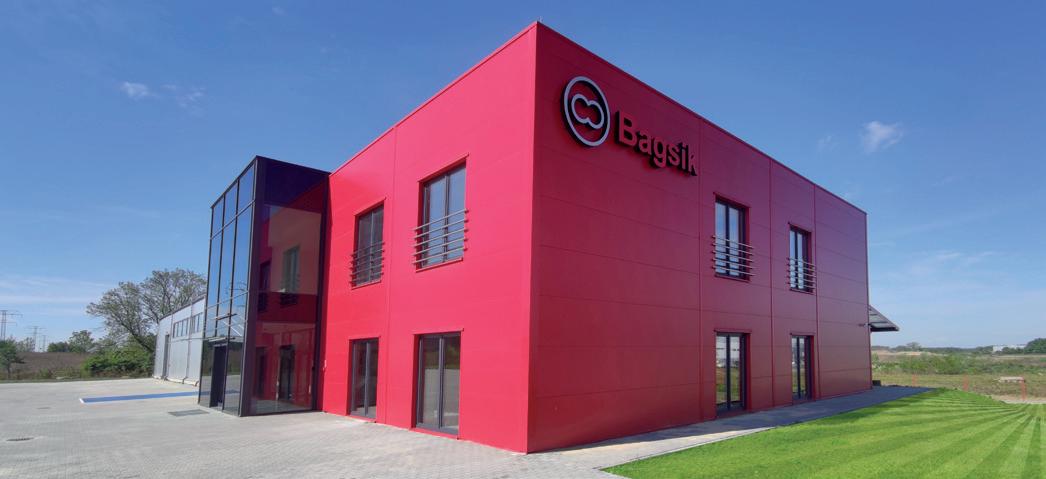
We produce automatic filter systems with and without self-cleaning system.
The self-cleaning version allows to reduce the number of workers and usage of the screens. Over the years, the self-cleaning system developed and improved in con junction with dedicated automation, al lows to generate cost and material savings.
Our offer also includes:
• plate, bolts screen changers,
• complete lines for PVC processing,
• melt gear pumps,
• filter screens.
We currently have 2 locations:
• Bagsik Sp. z o.o. in Gliwice,
• Bagsik Sp. z o.o. Sp. k. in a new loca tion on 15,000 m2 in the special Eco nomic Zone in Zabrze.
•
BAGSIK Sp. z o.o. Toruńska 8, 44-100 Gliwice, Poland +48 32 334 00 00 office@bagsik.net www.bagsik.net HALL 9 / A45 PLAST ECHO46



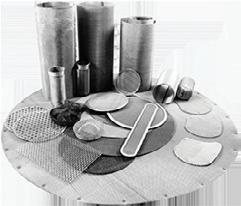



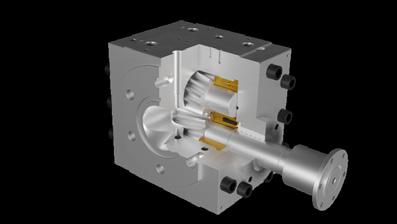

Measurement technology Filtrationscreens Screenchangers technology Gearmeltpumps tranceducers Hall9/A45 BagsikSp.zo.o. ul.Toruńska8 PL44-100Gliwice BagsikSp.zo.o.Sp.k. ul.G.H.Donnersmarcka16 PL41-807Zabrze www.bagsik.net|office@bagsik.net|0048323340000
FASTPART: FAST INJECTION MOULDS

I FAST INJECTION MOULDS – UP TO 18 WORKING DAYS
FastPart has its own unique injection mould manufacturing technology. Its biggest advantages include:
• short lead time (from 14 to 18 working days)
• much cheaper than a classic injection mould (30–40% on average)
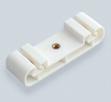
• possibility of injection moulding using most thermo plastic materials (ABS, PC, PA6, PP, PE, PA6 +30GF, etc.)
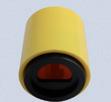
• we provide a lifetime guarantee for moulds (provided that the mould is manufactured and stored by FastPart).


We specialize in fast production of moulds for short and me dium-length series (<1,000,000 pcs.). The largest part of our production are electronics enclosures (80% of overall pro duction) – we have extensive experience in this field.

I YOU PAY FOR THE MOULD ONCE, AND THEN YOU ORDER WHEN YOU WANT AND AS MUCH AS YOU WANT.
We will be the perfect supplier for you if:
• you want to quickly launch a product on the market
• you want to validate elements before making steel moulds
• you are interested in short and medium-length produc tion series.
I MORE THAN 300+ INJECTION MOULDS CAN ALREADY BE VIEWED AT OUR WAREHOUSE IN SZCZECIN!
After completed production runs, the mould awaits further orders. Each form has full documentation in the electronic form. If the mould is worn out, we regenerate it or execute a new one on our own.
I ONLINE MOULD AND PRODUCTION COST CALCULATOR
Send a 3D .stl model (like for 3D printing) to sales@fastpart.pl. You will receive the address to the mould and production cost calculator within a few hours. Enter the quantity, surface finish – prices will be generated automatically!
•
I SCHNELLE SPRITZGUSSFORMEN – BIS ZU 18 WERKTAGE
FastPart verfügt über eine eigene, einzigartige Technologie zur Herstellung von Spritzgussformen. Ihre größten Vorteile:
• kurze Lieferzeit (14–18 Werktage)
• viel billiger als die klassische Spritzgussform (30–40 % im Durchsch.)
• Einspritzen der meisten Thermoplaste (ABS, PC, PA6, PP, PE, PA6+30GF etc.)
• eine lebenslange Garantie auf die Formen (vorausgesetzt, die Form wird bei FastPart hergestellt und gelagert).
Wir spezialisieren uns auf schnelle Produktion von Formen für kleine und mittlere Serien (<1 Mio. Stk.). Der größte Teil unserer Produktion (80 %) sind Gehäuse von Elektronikgerä ten – wir haben große Erfahrung in diesem Bereich.
I SIE BEZAHLEN DIE FORM EINMAL, BESTELLEN WANN SIE WOLLEN UND SO VIEL SIE WOLLEN.
Wir sind Ihr perfekter Lieferant, wenn:
• Ihnen die schnelle Markteinführung wichtig ist
• Sie Elemente vor der Herstellung der Stahlformen vali dieren möchten
• Sie kleine/mittlere Produktionsserien benötigen.
I BEREITS MEHR ALS 300 SPRITZGUSSFORMEN, DIE SIE AUF UNSEREM LAGER IN STETTIN SEHEN KÖNNEN!
Nach fertiger Produktion wartet die Form auf die nächsten Bestellungen. Zu jeder Form gibt es eine vollständige elekt ronische Dokumentation. Wenn die Form abgenutzt ist, rege nerieren wir sie oder stellen sie selbst neu her.
I ONLINE FORMEN- UND PRODUKTIONSKOSTENRECHNER.
Senden Sie ein 3D-Model .stl (wie für den 3D-Druck) an sales@fastpart.pl. Die Adresse des Formen- und Produkti onsrechners erhalten Sie in wenigen Stunden. Geben Sie die Stückzahl, das Oberflächenfinish an – Preise werden automa tisch generiert!
•
FASTPART Sp. z o.o. Spedytorska 1 70-632 Szczecin, Poland +48 794 999 886 sales@fastpart.pl www.fastpart.pl PLAST ECHO48
COLOUR MASTERBATCHES AND MODIFYING ADDITIVES FOR PLASTICS

A dedicated team of employees specialises in providing bespoke colour solutions on universal and dedicated polymer carriers. In addition to a wide range of standard colours, GM Color has a portfolio of col our masterbatches with special effects, e.g. pearlescent, fluorescent, metallic and glit ter. In addition, the range includes a wide selection of modifying additives available as separate additives and as additive com binations. Furthermore, in the interests of the natural environment, the range has been extended to include dyes produced on biodegradable carriers. Recycling com pounds are also used in the production of colour masterbatches.
Every day, the Innovation Department makes every effort to ensure that the im plemented projects respond to the per sonalised and current needs of customers. Currently, the work is underway to, among other things, implement an innovative liquid polymer dye. All efforts to enrich the product range are made possible by combining the many years of experience of qualified specialists and the possibil
ity of using the latest technical solutions. The company applies the experience it has gained to its day-to-day work with Cus tomers by providing professional advice and technical support.
The products supplied to the market are used to colour, among others, household goods, food and industrial packaging, pipes, films, furniture accessories and edg ing, foams, construction and technical arti cles and many others. The laboratory team ensures that the products are of the high est quality in terms of colour selection and appropriate parameters. A state-of-the-art laboratory allows products of the highest quality to enter the market, confirming this standard with a certificate. Among
other things, it is equipped with an age ing chamber, DSC, XRF, FTIR and a range of strength testing equipment. The main advantage of the GM Color team is its flex ibility, operational efficiency and speed of delivery.
GM Color’s product range includes:
• Monoconcentrates – High-perfor mance one-pigment preparations
• Colour masterbatches – dedicated to the polymers like: PE, PP, PS, ABS, SAN, PVC, PET, PET-G, PBT, PA, PC, TPE, TPU, PLA, PBAT, SUR, PMMA
• Standard masteratches – line of col ours available permanently in stock
• B&W masterbatches – Line of white and black masterbatches
• PE masterbatches – Product line ded icated to PE film colouring
• PET masterbatches – Product line based on PET carrier
• ECO masterbatches – Colour master batches based on recycled carrier
• Pulverization – Pultaverization of plastics and raw materials for rotomoulding

• Granules and regranulates – custom ised to customer requirements (col our, strength and technical param eters).
•
GM Color is a well-established company in the production of colour masterbatches and modifying additives for plastics. The company’s primary objective is to provide a comprehensive offering for the plastics processing industry in Europe.
GM COLOR Sp. z o.o. Wojska Polskiego 65A 85-825 Bydgoszcz, Poland +48 52 515 35 35 office@gmcolor.pl www.gmcolor.pl
HALL 8B / E73 OCTOBER 2022 SPECIAL EDITION 49WWW.PLASTECHO.COM
THE NEW HEATING AND HORIZONTAL COOLING MIXER EXCLUSIVE PRESENTATION AT THE K-FAIR
INNOVATION IN MIXING
MIXACO has stuck to this motto in the concept of its new heatingcooling mixer combination. At this year’s K trade fair, the German mechanical engineering company will unveil its latest revolution/innovation.

The HM 400 heating mixer / KM 1200 - H horizontal cooling mixer will be, after the fair, in the company’s own test center in Neuenrade and will be available for all companies that need to do mixing trials.
Project- and Sales Manager Nicolas Gehring and CTO Marco Marinello have combined their knowledge, experience and visions in improving this heating/


cooling mixer combination. The result is a machine that will be indispensable on the PVC market, not only for some minor changes to improve material handling but overall for some technical innova tions that have been finally included to make the mixing and cooling process even more efficient.

The combination is a machine not only more user-friendly, but also as flexible as a Swiss pocket knife in terms of formula tions. Customizations according to the fi nal application demanded by customers are available.
•

“Take the best that exists and make it better. When it does not exist, design it.” – by Henry Royce
Marco Marinello
Nicolas Gehring
MIXACO Dr. Herfeld GmbH & Co. KG Niederheide 2 58809 Neuenrade, Germany +49 2392 9644-0 info@mixaco.de www.mixaco.de HALL 9 / E42
PLAST ECHO50
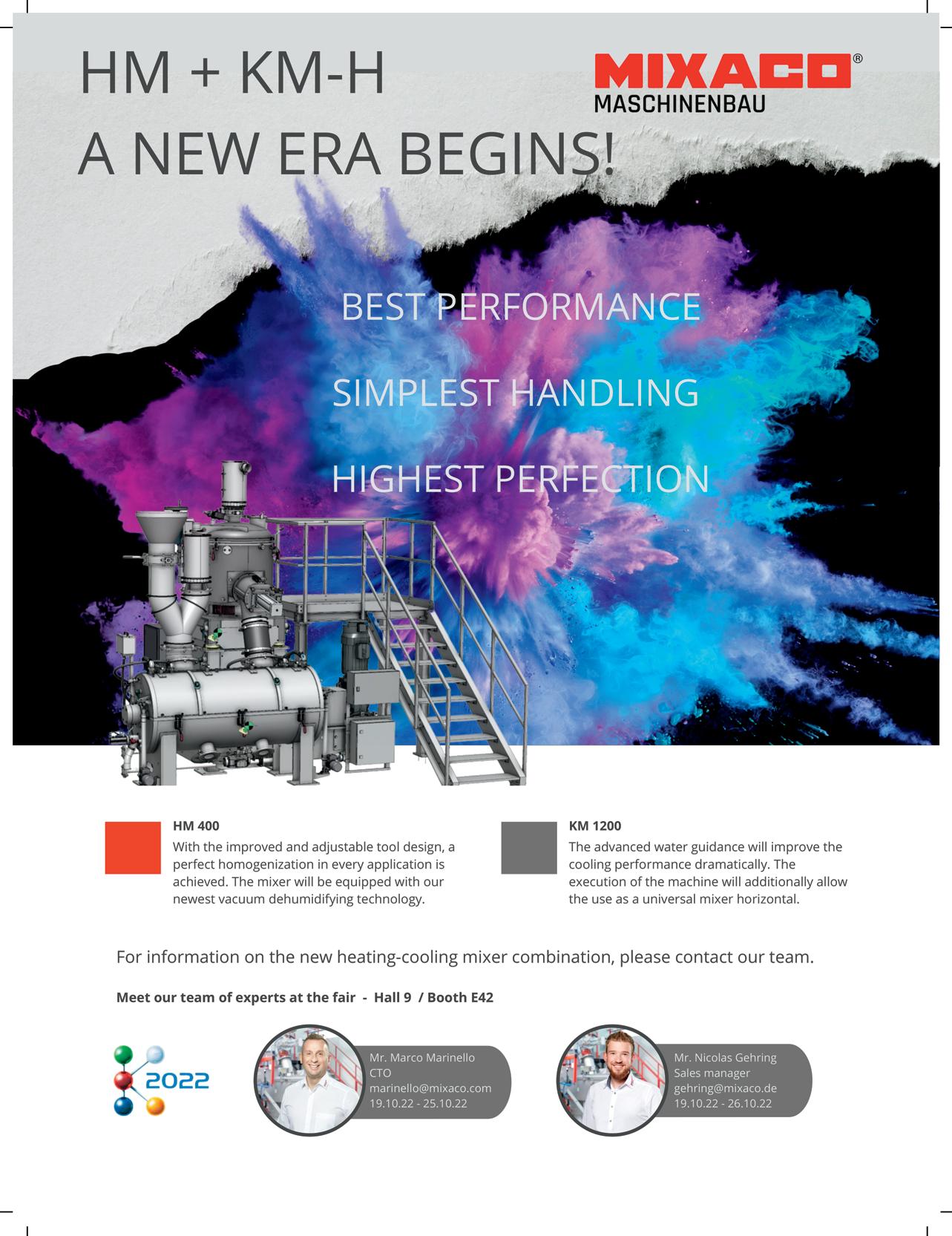
MEYER: EXPERT IN COLOR AND POLYMER SORTING

ELCEN improves the quality, increases productivity and maximizes the production of rPET flakes using the MEYER’s polymer sorting technology.
The leading Polish recycling company for PET bottles, ELCEN, now recycle more PET waste from the higher contaminated stream of the material, at the same time achieving a reduction in product loss and stable quality, thanks to breakthrough technological installation at its factory in Gdynia. After installing MEYER CI Optical Sorter with Infrared polymer cameras and Maglev Ejectors®, the recycling plant in Gdynia has reduced PVC, PC, Polyolefins, and other polymers shown in PET flakes to less than 50ppm and eliminated a wide range of foreign material, which could not be removed by using the previous optical sorting system.
As a supplier of PET flakes, polyester fib ers and geotextiles, ELCEN was looking for ways to deliver a consistently high qual ity of recycled PET flakes. One of the main reasons for this unstable product quality is the contamination of PET flakes with PVC particles from bottle labels and Polyole fins. In addition, foreign materials such as stones, metal, rubber, paper, wood, and tex tiles can now be more straightforward to remove. Although ELCEN were already us ing flake sorting technology, their existing machine did not have a polymer detection system, which translated into an unstable rPET flake quality dependent on the qual ity of the raw materials.

After successful tests with the most ex perienced manufacturers of sorting sys tems dedicated to the PET flakes, ELCEN installed the MEYER CI sorter solution to achieve higher and more consistent qual
ity with minimum material loss at the end of production. Due to the unique and revolutionary process of polymer recog nition, it is possible to precisely separate valuable PET material from other waste regardless of the composition and level of contamination. As a result, it is also pos sible to increase efficiency. Furthermore, very few good products are lost because of using dedicated lighting and high-preci sion Maglev ejectors, which eliminate the smallest particles.
It has been challenging to remove the same color polymeric materials from PET flakes, such as eliminating clear PVC or PC from clear PET, because they look similar. In addition, too many valuable rPET flakes can be miss out while processing at high speed. Conventional sorting solutions rely on transmission or reflection sorting, but a MEYER CI machine’s newest InGaAs technology uses both. This technology enables recyclers to sort plastics by color and chemical signature, which improves the accuracy and speed of identifying and removing the various polymers contained in plastics, reducing contamination to be low industrial standards of 50 ppm.
Mr Łukasz Gołuński, vice president of EL CEN, comments: “We are delighted with MEYER CI Optical Sorting technology. This machine exceeded our expectations for the flake sorter, which allowed us to recycle more PET waste with less product loss while maintaining a stable and high quality. As a result, we can now deliver the highest quality flakes whose rate exceeds the requirements of many of our custom ers. In addition to the technology, which we believe is the best on the market, we are pleased with the excellent relation ship with the MEYER Europe team. We look forward to continuing this successful partnership in the future”.
About MEYER MEYER is the world’s leading supplier of Optical Sorting equipment with machines installed in more than 100 countries, cov ering food and recycling. MEYER invests about 6% of annual revenues in the R&D team; thus, more than 1,000 engineers for almost 30 years constantly are working on technology development and implement ing significant Artificial Intelligence for higher optical sorting performance with deep learning AI processes.
• MEYER Europe s.r.o. Nam. L. Novomeskeho 1 040 01 Kosice, Slovakia +421 948 209 976 sales@meyer-corp.eu www.meyer-corp.eu Hall 10 / B40 PLAST ECHO52

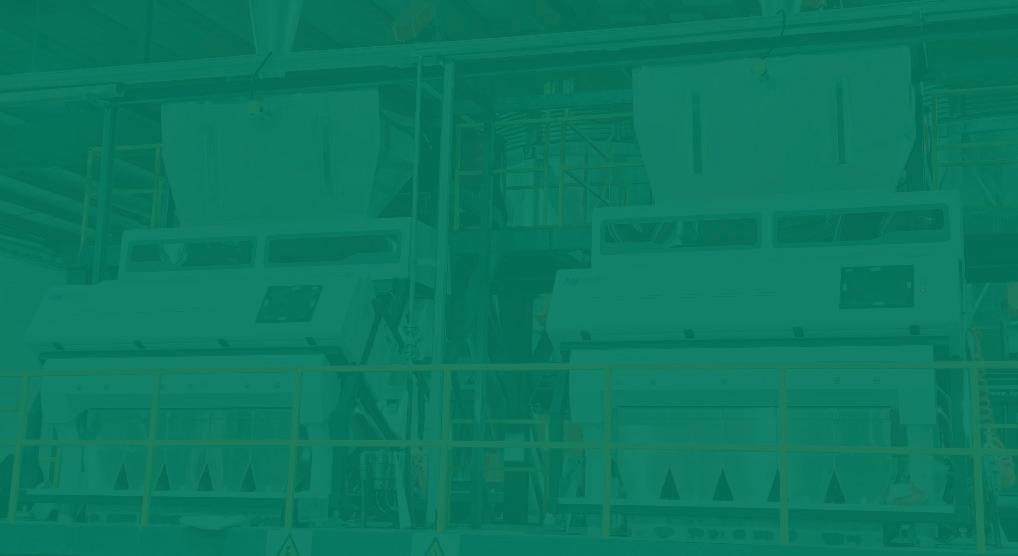




























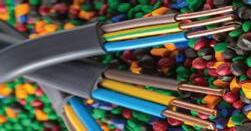

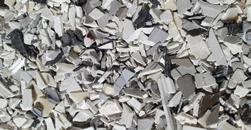

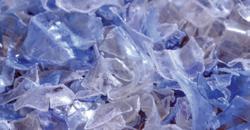
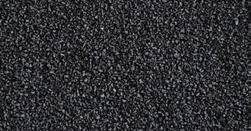
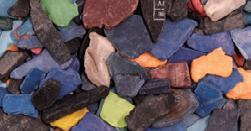
www.meyer-corp.eu sales@meyer-corp.eu +421 948 209 976 GREEN MEYER GREEN FUTURE YOU COULD FIND US ON K-SHOW FAIR HALL 10 - STAND B40 EXPERT IN COLOR AND POLYMER SORTING HDPE/PP BATTERY JAR WEEE GRANULES PVC BOTTLES PET RUBBER
MODERN AND EFFICIENT THERMOFORMING MACHINES
Tools Factory Sp.j. is a private, family owned company with 25 years of experience. The company designs and manufactures modern machines for moulding and processing plastics.
The basis of the offer are vacuum ther moforming machines of various sizes and with various functionalities, offered in 4 categories:
• SMARTLINE – a group of basic ma chines supplied with standard solu tions, characterized by high efficiency and economy
• QUICKLINE – machines equipped with solutions to maximize efficiency, accelerate the production process and save energy (automatic mate rial feeders, halogen heaters, central cooling system, etc.)

• SPALINE – thermoforming machines specially designed for deep form ing of bathtubs, hot tubs and similar products for sanitary and SPA sector
• TWINLINE – machines designed to work in the "twin sheet" technology, i.e. for the simultaneous forming of two material sheets and combining them into one element impossible to produce in one mould.
In addition to thermoforming machines, the company offers rotational moulding machines (ROTOMOULDING) in two con figurations: Shuttle and Carousel, and mul ti-axis CNC machining centres for plastics, wood, aluminium and similar materials.

Only components from reputable sup pliers such as OMRON, MITSUBISHI, SIE MENS, FESTO, METAL WORK, SCHNEIDER ELECTRIC, etc. are used for production.
A large part of the devices is customized, manufactured according to individual ar rangements with customers, according to their needs in terms of dimensions, equip ment and production requirements. The company also offers consulting on the selection of machines and optimization of
solutions for a given material and produc tion profile.

All offered machines have a modern com puter system for process control and steer ing, and a module for internet connectivity enabling remote diagnostics and “on-line” service. The delivery of machines also in cludes commissioning and training at the customer's site. The company has the ISO 9001 Production Quality Assurance Cer tificate in the field of machine designing and manufacturing.
TOOLS FACTORY is a leader in its industry on the Polish market and one of the sev

eral leading companies in Europe in this field. TOOLS FACTORY machines are com monly used for the production of plastic components in the automotive, transport, sanitary, packaging, construction, adver tising and many other industries. The TOOLS FACTORY brand of machines is particularly well known in the countries of Central and Eastern Europe. The company dynamically develops exports to all Euro pean countries.
The company is located in Stefanówka in central Poland, about 25 km from Warsaw. About 50 people work in the company.
•
HALL 3 / C35 TOOLS FACTORY Sp.j. Stefanówka, Żurawia 92, 05-462 Wiązowna, Poland +48 22 789 01 88 info@toolsfactory.pl www.toolsfactory.pl
PLAST ECHO54
BESSPOL: DISTRIBUTOR OF POLYMER MATERIALS
Besspol is a family business – estabilished in 1990, it continu ously provides plastic raw materials comprehensively to nation wide market, successfully supplying small and large businesses. We specialise in supplying polyolefins as well as engineering plastics.

Our offer includes primarily thermoplastic granules: PP, PE (lowand high-density polyethylene), PS (low- and high impact poly styrene), PA (polyamide – pure and modified), POM or EVA.
We offer a number of services related to the processing of plas tics, f.e.:
• colouring polymers according to preferred masterbatch
• modifications of finished plastics
• consultation and advice on the selection of material for spe cific practical application.
Besspol ensures reliable and comprehensive logistics service too. As the first distribution company in Poland, we have received an

ISCC Plus certificate. This certification supports marketing of biobased raw materials and management of petroleum products in a closed loop.
With such attitude, Besspol has been working for over thirty years in the plastics industry, in the area of distribution and pro fessional consulting offered to our customers. Operating on the market during the last quarter century, we have built a strong group of partners; therefore, our portfolio includes many top brands known worldwide.
•
Besspol Sp. z o.o. Sp.k. Sokola 10 86-031 Osielsko, Poland +48 52 381 32 31 handel@besspol.pl www.besspol.pl OCTOBER 2022 SPECIAL EDITION 55WWW.PLASTECHO.COM
HIGH-ACCURACY, MULTIFUNCTIONAL SEPARATORS FOR SORTING PLASTICS
Eko Partner is an authorised distributor of separators for sorting plastics. Our product range in cludes EkoSort Optik and EkoSort Belt colour separators, IngaAs optical sorters and EkoSort X-ray machines.

The EkoSort Optik optical separator, is an intelligent device for detecting impu rities present in the bulk materials to be sorted. Using the best quality cameras on the market, it enables sorting with an ac curacy of up to 99.99%. The Japanese ejec tors used in the production of the sorter, allow for accurate and fast removal of the defect, while guaranteeing long life and excellent precision. The sorter has an intu itive interface which the user can operate in Polish, English, German, Russian. As our flagship model, which we have branded with our own logo, we have ensured an at tractive appearance and the highest qual ity workmanship.
The EkoSort Belt optical sorter combines a traditional optical sorter with a movable horizontal belt, which allows the mate rial to be evenly distributed and prevents damage to delicate products.
The EkoSort InGaAs separator, is a multi functional sorting system that uses infra red sensors to separate materials, both in
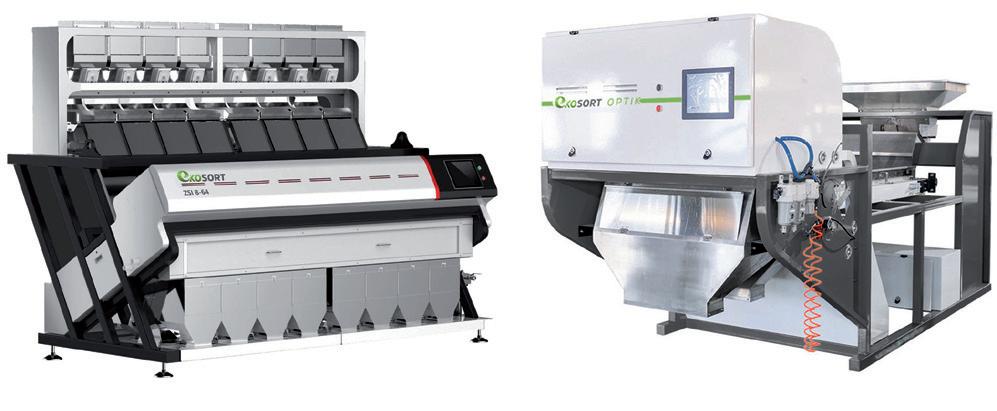
terms of colour and composition. It is the perfect solution for plastics recyclers who have difficulty separating different types of materials of the same colour that differ in density.
The EkoSort X-Ray separator uses an X-ray inspection system that takes advantage of the difference in X-ray absorption intensity of an object to distinguish higher density foreign bodies from the material being sorted.
Our machines sort milling, granulate, re granulate, glass, stone, and other bulk materials.
Extensive experience and a stable position on the market give our company the skills to fully meet the requirements of our cus tomers. Therefore, we warmly invite you to try out our machines in our demonstration plant, and we will be happy to assist you in the selection of your machines. We provide transport to a designated location within Europe, operator-level training and sort ing programmes included in the machine price. We also have our own authorised service centre, which provides warranty and post-warranty maintenance services.
We also invite you, to cooperate with us in the field of plastic sorting services.
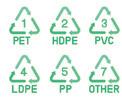
•
EKO PARTNER Kazimierz Janiak Kościuszki 59E 32-540 Trzebinia, Poland +48 534 411 111 +48 607 608 713 ekopartner.org@gmail.com www.ekopartner.org
PLAST ECHO56
FOR PLASTICS AND RUBBER
The highest quality products, individual approach to every single customer and professional technical support, that is what make MAJUMI CHEMICALS one of the key players at the plastics and rubber market in Polish and Central Europe.
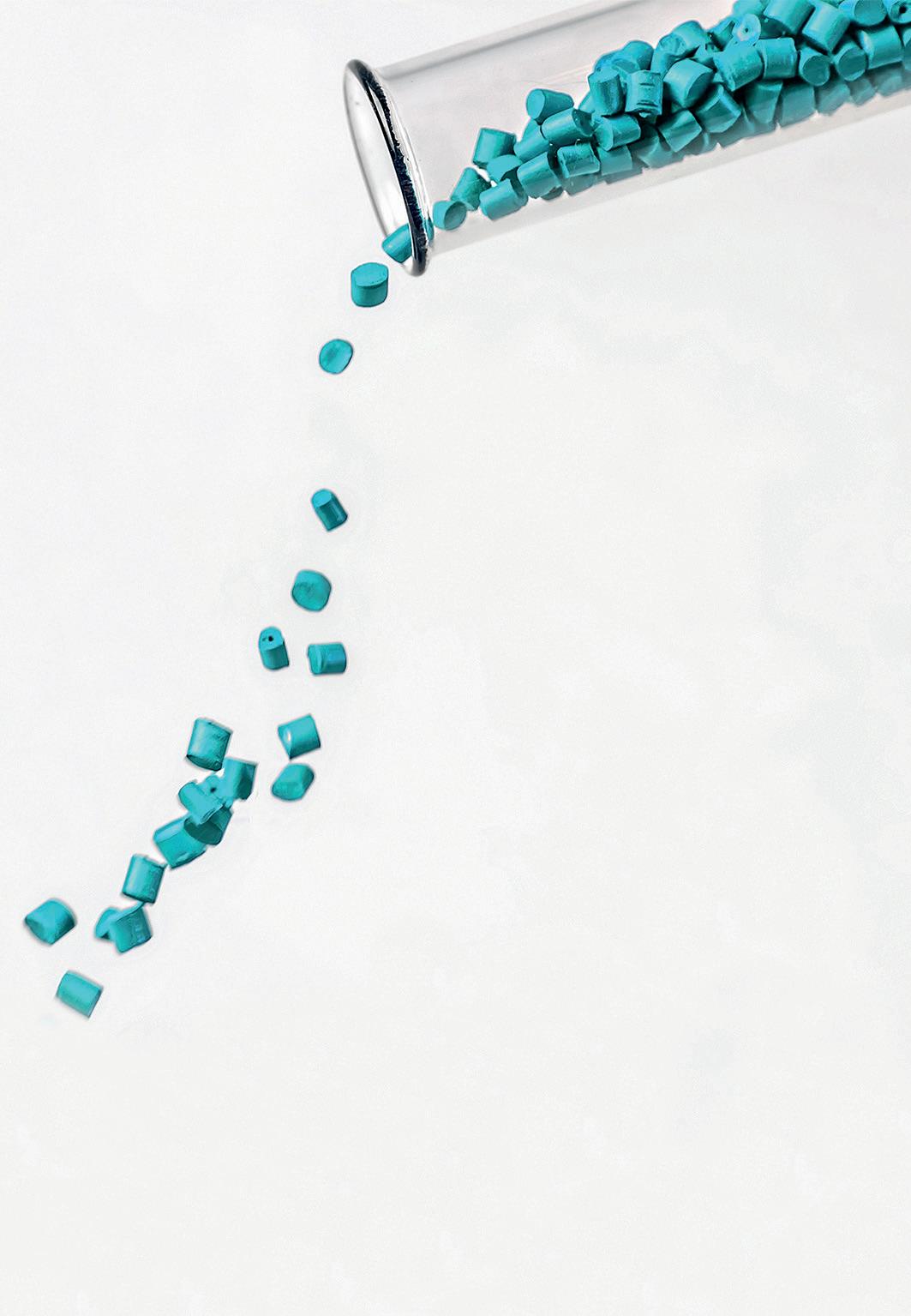

MAJUMI CHEMICALS is a family company established in 2004. Since then, the com pany has been developing very dynami cally. Currently the company employs 24 people. Because of our passion to what we do and ambition of supplying the best quality raw materials to the Customers the company has succeeded in coopera tion with biggest and best raw material producers in the world. In that case the company guarantees high quality of of fered products.
The highest quality products, individual approach to every single customer, pro fessional technical and after-sales sup port, flexibility and fast decision-making make MAJUMI CHEMICALS one of the key players at the plastics and rubber mar ket in Polish and Central Europe as well as Portugal, Spanish, Italian and Ger man markets.
The global producers of window profiles, producers of cables, technical profiles, pipes, hoses and foils both for domes tic and foreign market trusted us start ing successful cooperation has lasted for many years with some of specific customers.
In our company’s offer the customer can find following products:
• PVC resin (K-58, K-67, K-70),
• impact modifiers,

• chlorinated polyethylene,
• processing aids,
• Ca-Zn stabilisers,
• tin stabilisers,
• internal and external waxes,
• foaming agents,
• rubber grade of chlorinated polyethylene,
• CR rubber,
• EPDM,
• silicones,
• chloroparaffin,
• TPU,
• stearates,
• stearic acid,
• ESBO,
• plasticizers,
• compounds,
• external and internal foil,
• copper tapes for cable and wire industry.
Incessant development of the company and knowledge of the global raw mate rial’s market allows us to continuously ex pand the offer.
•
> > > > > > > > > > > > > > > > >
MAJUMI CHEMICALS SUPPLIER OF BEST SOLUTIONS
MAJUMI CHEMICALS Sp. z o.o. Północna 1 26-600 Radom, Poland +48 48 344 17 43 info@majumi-chemicals.com www.majumi-chemicals.com HALL 8B / C11-06
A TECHNOLOGICAL LINE FOR FILAMENT EXTRUSION
The Łukasiewicz Research Network is a unique project of great commercial potential. It is an integrated market player providing attractive, comprehensive and competitive business solutions in the fields of automation, chemicals, biomedicine, ICT, materials, and advanced manufacturing. With 8,000 members of staff and 26 research institutes located in 12 cities across Poland, The Łukasiewicz Research Network is the third largest research network in Europe.
Among the novelties presented by the Łukasiewicz Research Network- Institute for Engineering of Polymer Materials and Dyes is a technological line for filament extrusion and developed technology to produce experimental hybrid materials intended for spatial printing using FDM (Fused Deposition Modeling).
A key element of the line is the W25i screw extruder with an induction heating sys tem. This system allows for a significant reduction in heating time of the plasticis ing system, which is advantageous from an economical point of view. It also has a maximum operating temperature of up to 600°C, which is not achievable with tra ditional solutions.
The Łukasiewicz Research Network- Insti tute for Engineering of Polymer Materials and Dyes has developed technology for the extrusion of traditional polymeric ma terials (ABS, PLA) and high-performance polymeric materials (PEEK, PPS) in fila ment form for 3D printing. These materi als can be used in numerous industries,
among others; automotive, chemical, med ical, textile, aviation and construction.
Key features:
• The possibility of thermal process ing of high-performance materials (PEEK, PPS), characterised by their high thermal resistance and mechani cal strength.
• Line versatility – the possibility of thermal processing of conventional polymers as well as high-perfor mance ones.

• The several-fold reduction in the ma chine’s heating time ensures energy savings. The direct heating of the
plasticising system avoids thermal losses caused by indrect heat trans fer between the resistance heater and the heated element.
• Filament extrusion speed up to 30 m/min with a filament diameter accuracy of ±0.05mm.
This offer is mainly addressed towards in dustry branches and research units operat ing in the field of processing and recycling of polymer materials and testing their properties. The Łukasiewicz Research Net work- Institute for Engineering of Polymer Materials and Dyes also cooperates with companies from the paint and varnish in dustry and their applications.
•
Network
Institute for Engineering of Polymer Materials and Dyes
Poland
Łukasiewicz Research
–
Marii Skłodowskiej-Curie 55 87-100 Toruń,
+48 56 650 00 44 sekretariat@impib.lukasiewicz.gov.pl www.impib.lukasiewicz.gov.pl
PLAST ECHO58
PROCESSING PLASTICS WITH BLOW
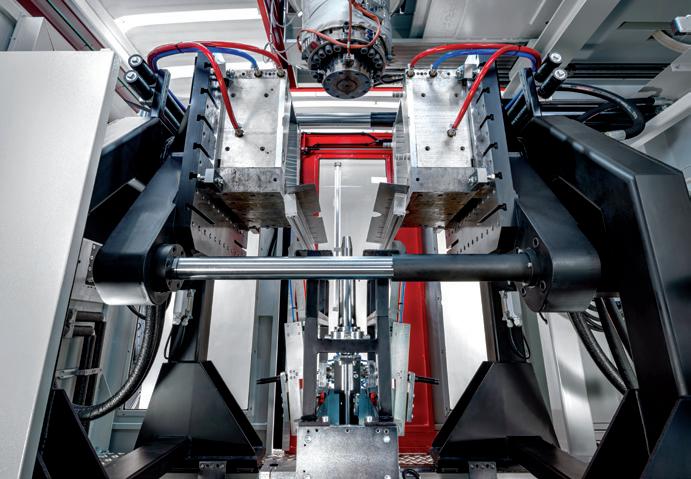
Blow Moulding Factory is
needs in the field of production services in the Blow Moulding

We have been processing plastics on in jection moulding machines and blow moulding machines for almost 30 years. We have a wide and diverse machine park. We have continuation and accumu lation heads. These are machines from the world’s leading manufacturers. We are able to produce various types of plastics, but we mainly process HDPE and PP. Our system of feeding and dosing plastics ena bles very precise dosing of several com ponents at the same time. Dosing devices have a built-in memory that allows you to save recipes and print a report from each cycle of the production order. Each ma chine is equipped with a waste grinder, so we can feed the machine the right amount of regrind, which allows the production of repeatable products. We are characterised by continuous development and invest ments. We can produce medium and large items. Our strength is the production of large-size and complex items in excess of 30 kg in weight and 2 m3 in volume. Mod ern solutions, energy efficiency and many years of experience allow us to produce products on competitive terms and in the expected quality. Our experienced engi neers solve emerging problems every day and work on the automation of individual processes.
We produce items on moulds provided by customers, which we can modernise and adapt to our machines. In order to compre hensively serve our clients, we have our own tool room with a modern machine park where we build new moulds. We also guarantee a full service of the moulds dedicated to the production.
We have logistic capabilities that allow us to fully meet the needs of our clients. •
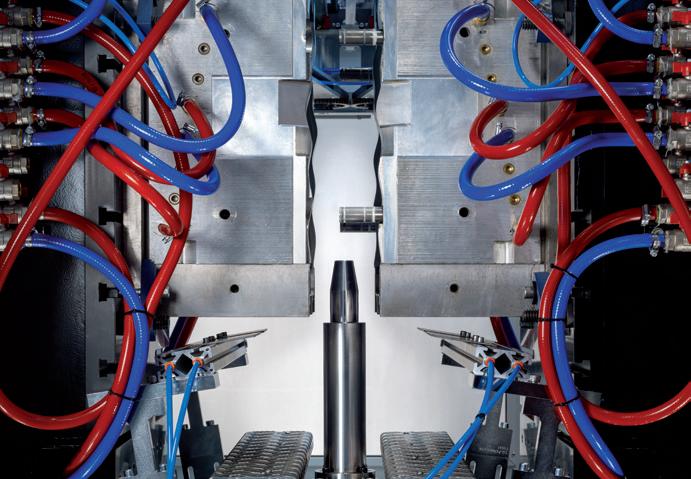
PROSPERPLAST 1 Sp. z o.o. Wilkowska 968 43-378 Rybarzowice, Poland +48 33 817 70 03 bmf@bmfpd.pl www.prosperplast.pl
MOULDING FACTORY
Prosperplast’s specialised department, which is a response to the market
technology. HALL 7 / LEVEL 2 / G03 OCTOBER 2022 SPECIAL EDITION 59WWW.PLASTECHO.COM
“Polimery Police” complex is one of the largest investments on the Polish and European market. This integrated petrochemical complex will provide an annual polypropylene production of 437 kt.

Polypropylene Production Unit based on UNIPOL technology, Polypropylene Lo gistics Infrastructure, as well as Auxiliary Systems and Interconnections. Chosen technologies are characterized by low en ergy consumption, repeatable, high quality of products as well as relatively low waste production and low CO2 emission. Plant is designed based on industry best practice to reach the zero plastic spill objective.
During K 2022 Grupa Azoty Polyolefins is presenting its new brand of polypropyl ene products.
Grupa Azoty Polyolefins will offer wide range of product properties responding customer and their processing technol ogy needs:
• Low content of volatiles
• Very good organoleptic properties (low migration of taste and odour)
The world plastics market has been dy namically developing since 1950. Just 70 years ago, global plastics demand had been calculated at the level of 1,5 million tons per year. Currently, the success, domi nance and extraordinary properties of plastics contributed to increase in demand by 244 times.
It was polypropylene that gradually be came the largest and most diverse plastics with 23% market share that continues to grow. What makes polypropylene so mul tifunctional is its chemical and physical properties that enables the usage of this material in wide range of applications and industries – from food industry, through household, automotive, construction, to medical sector.
Based on above, Grupa Azoty decided to diversify its product portfolio and strengthen competitive position in the European plastics producers’ market by building integrated petrochemical com plex “Polimery Police”.
The Project includes: Gas Handling and Storage Terminal, Propane Dehydrogena tion Unit based on OLEFLEX technology,
• Excellent optical properties of ran dom copolymers (high transparency and gloss)
• Excellent stiffness-impact balance of impact copolymers

• Phthalate-free product (production based on the 6th generation catalyst)
• Excellent product consistency guar anteeing stable processing
Let’s meet at K 2022 to discover our offer and new brand.
•
Grupa Azoty Polyolefins S.A. Kuźnicka 1, Police, Poland commercial@grupaazoty.com polyolefins.grupaazoty.com HALL 7A / D02 PLAST ECHO60
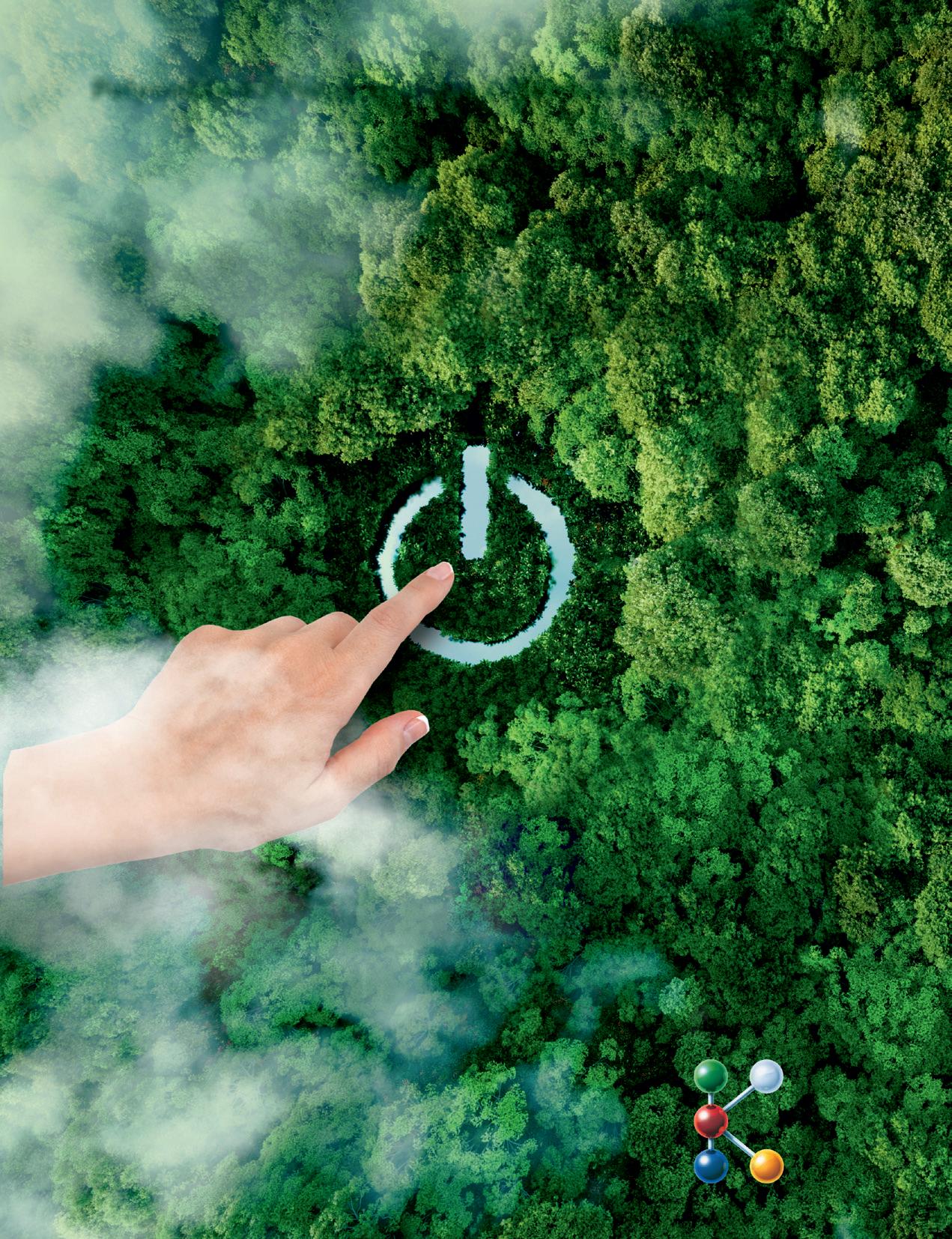
BETTER FACTORY HAS LAUNCHED ITS 2ND OPEN CALL FOR FULL PROPOSALS FROM CONSORTIA

The Better Factory initiative, funded under the European Commission H2020 programme, aims to help European manufacturers become more competitive in the global market by providing up to 200K EUR in equity-free funding to develop and deploy collaborative intra-factory experiments.
to re-skill staff, to receive business sup port and mentoring, and to get up to EUR 200,000 in equity-free funding
Collaborations between Manufactur ing Companies, Artists and Tech Suppli ers can take on many forms and deliver a wide variety of outcomes. At a technical level, the focus will be to minimise the impact on production cost and to create more value by reducing waste, energy and other production resources; optimis ing intra-factory logistics; using robots to support workers; production pre-planning and simulation.
Manufacturing Companies will discover new business models and digitise their factories to match the production of new or personalised products, thanks to the collaboration with Artists and Technology Suppliers during the lifetime of the Better Factory project and beyond.

Through this Open Call, Better Factory will select 16 finalist consortia to partici pate in the Jury Day, of which the top 9 consortia composed of 3 members – one manufacturing company, one artist, and one technology supplier – will be selected to participate in a Knowledge Transfer Program.
The selected consortia, referred to as a Knowledge Transfer Experiment (KTE), will be supported by art, technical and business mentors to design new product lines and deploy scalable intra-factory au tomation solutions.
I OPEN CALL BENEFITS
Becoming one of the successful selected consortia will allow manufacturing com panies to explore new markets using digi tal tools, to test and develop new lean-ag ile production technologies, to make deals through the Robotics and Automation MarketPlace (RAMP), to access trainings

Prioritised sectors are plastic and rubber, furniture and wood, food and agriculture, construction, metal and machinery, and textile and leather.
•
The Open Call remains open until the 15th of November 2022 at 17:00 CEST.
Registration and all details are available at https://better-factory.fundingbox.com.
More about the project at: http://betterfactory.eu.
Bydgoszcz Industrial Cluster Tool Valley Bydgoskich Przemysłowców 6 85-862 Bydgoszcz, Poland +48 52 515 30 73 bkp@klaster.bydgoszcz.pl www.klaster.bydgoszcz.pl Powered by
PLAST ECHO62
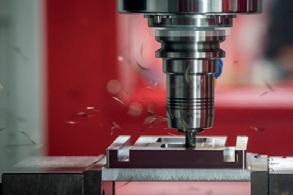
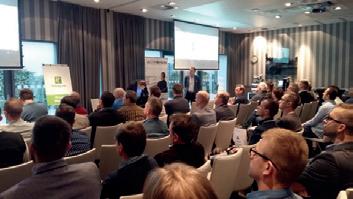
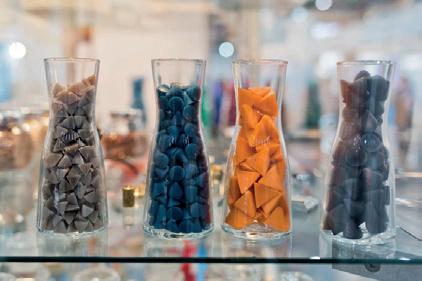
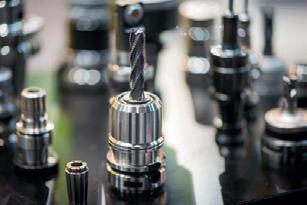
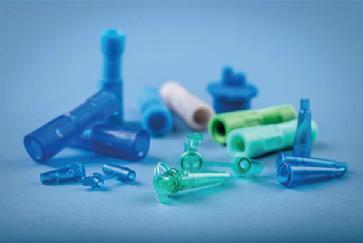

PLASTICS PROCESSING INTERNATIONAL COOPERATION TRADE FAIR INNOFORM TOOLS TRAINING INNOVATION EDUCATION ® www.klaster.bydgoszcz.pl facebook.com/klasterbydgoszcz linkedin.com/company/bydgoszcz-industrial-cluster
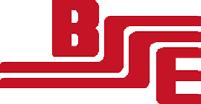
TOP SUPPLIERS TOP SUPPLIERS ANWIL S.A. Toruńska 222, 87-805 Włocławek, Poland +48 24 202 12 22 polanvil@anwil.pl compounds@anwil.pl www.anwil.pl Manufacturer of suspension PVC HALL 7a / C01 GRUPA AZOTY S.A. Kwiatkowskiego 8, 33-101 Tarnów, Poland +48 14 637 33 10 plastics@grupaazoty.com www.grupaazoty.com Manufacturer of Polyamide 6, Polypro pylene, Plasticizers, OXO alcohols HALL 7a / D02 BAGSIK Sp. z o.o. Sp.k. G.H. Donnersmarcka 16 41-807 Zabrze, Poland +48 32 334 00 00 office@bagsik.net www.bagsik.net Filtration systems for extrusion HALL 9 / A45 BEDEKO Europe Sp. z o.o. Sp. k. S8 Business Park, Wojska Polskiego 7, 05-850 Macierzysz, Poland +48 22 18 5555 0 contact@bedeko-europe.com www.bedeko-europe.com Colour, additives, fillers masterbatches. Solutions for recycling and regranulates. HALL 7.1 / D28 BESSPOL Sp. z o.o. Sp.k. Sokola 10, 86-031 Osielsko, Poland +48 52 381 32 31 handel@besspol.pl www.besspol.pl Distributor of thermoplastic granulates GM COLOR Sp. z o.o. Wojska Polskiego 65A 85-825 Bydgoszcz, Poland +48 52 515 35 35 office@gmcolor.pl www.gmcolor.pl Polish producer of colour masterbatches and modifying additives for plastics HALL 8B / E73 MK KOLIBRI Sp. z o.o. Mikołaja Kopernika 17, 28-300 Jędrzejów, Poland +48 730 701 533 office@mkkolibri.pl www.mkkolibri.pl Colour masterbatches and additives for plastics MAJUMI CHEMICALS Sp. z o.o Północna 1 26-600 Radom, Poland +48 48 344 17 43 info@majumi-chemicals.com www.majumi-chemicals.com Distributor of additives for plastics and rubber processing HALL 8B / C11-06 64 PLAST ECHO


MAPRO Polska S.A. Złota 197, 42-202 Częstochowa, Poland +48 887 040 045 biuro@mapropolska.pl www.mapropolska.pl Authorised distributor of HAITIAN injection moulding machines HALL 15 / A57 M-A-S Maschinen- und Anlagenbau Schulz GmbH Hobelweg 1, 4055 Pucking, Austria +43 660 823 60 72 e.jamrozek@mas-austria.com www.mas-austria.com Recycling and compounding technology HALL 9 / D30 MEYER Europe s.r.o. Nam. L. Novomeskeho 1 040 01 Kosice, Slovakia +421 948 209 976 sales@meyer-corp.eu www.meyer-corp.eu Color and polymer sorting technology HALL 10 / B40 PCC Group Sienkiewicza 4, 56-120 Brzeg Dolny, Poland products@pcc.eu www.products.pcc.eu Industrial chemicals manufacturer P.T.H. PESTAR Eugeniusz Piechowski Iwaszkiewicza 15 83-200 Starogard Gdański, Poland +48 606 611 817 tworzywa@pestar.com.pl www.pestar.eu Plastics and WEEE recycling plant and manufacturer of PE - PP - GPPS recyclates Import Export Hurt Spedycja J.J. Akacjowa 20; 43-450 Ustron Warehouse: Harcerska 11 43-400 Cieszyn Poland +48 603 429 603 office@plastic-trader.com plastic-trader.tworzywa.biz Purchase and recycling of plastics PLASMAQ, Lda Zona Industrial da Barosa Lt 8, Carreia de Água, 2400–016 Leiria, Portugal +48 505 348 946 comercial.pl@plasmaq.pt ww.plasmaq.pt Solutions for waste recycling HALL 9 / E47 SINOMA Krzysztof Oettingen Brzeska 2, 31-998 Kraków, Poland Fabryczna 9, 32-005 Niepołomice, Poland sinoma@sinoma.pl sinoma.recykling.biz Manufacturer of PE regranulates OCTOBER 2022 SPECIAL EDITION 65WWW.PLASTECHO.COM
POLISH ECONOMY – GAME MINDSET

The Polish economy in the last thirty years has been an economic phenomenon. After 1989, the fastest growing economy in the world was China’s, and the second fastest was Poland’s, gradually catching up with the richest countries of the Western Europe and being the growth leader on our continent.
the total entanglement of business with the world of politics.
KRZYSZTOF NOWOSIELSKI ML Polyolefins
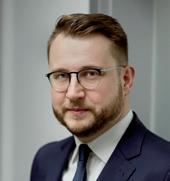
For several dec ades of commu nism, Poland was declining economi cally, ending the Cold War era as one of the poorest countries in Cen tral Europe, along with Romania. The reforms of the ear ly 1990s and the innate entrepreneurial spirit of the Poles meant that private ini tiatives spread their wings in a free mar ket economy.
This has paid off with unprecedented growth, which has lasted for three dec ades and allowed the country to get safely through the 2007–2009 crisis. The inflow of foreign investment after 1989 enabled the transfer of technology, as well as work culture and principles of modern organisation, giving Polish com panies a stable basis for development. Accession to the European Union only accelerated the process of modernising the economy and infrastructure, thanks to which domestic manufacturers now have a modern, efficient and energysaving machinery stock. Unlike some of the Eastern Bloc countries, Poland has managed to avoid oligarchisation and the emergence of unprecedented fortunes of billionaires enfranchised by state assets, and thus also widespread corruption and
Diversification seems to be the greatest success story for the Polish economy today. It is this diversification that allows Poland to absorb the shocks generated by incom ing crises, for which some industries suf fer a downturn, others make up for it with growth. This has helped to create leaders who today account for more than 40% of the CEE region’s 100 largest companies. Some of them are successfully making ac quisitions in Western Europe and are lead ers in their industries. How rapidly Poland is getting richer is evidenced by recently published Eurostat figures, which indicate that back in 1995, Polish GDP accounted for 44 per cent of the EU average, while in 2021 it was already 77 per cent. At the same time, Poland has excellent unem ployment figures, as the unemployment rate in May 2022 according to Eurostat was 2.7 per cent, against an EU average of 6.1 per cent. Equally important, the in flux of immigrants from Ukraine, thanks to their cultural and linguistic proximity, has allowed some of them to be quickly ab sorbed and, with GDP growth at a record high (5.9 per cent in 2021, Q2 2022: 5.5 per cent), to make up for the slowdown in 2020. The fact that employment in Poland grew by 2.7 per cent between Q4 2019 and Q2 2020, compared to Germany’s growth of only 0.4 per cent and the EU average of 1.14 per cent, is testament to just how
important to our workforce were newcom ers from Ukraine. The outstanding perfor mance against Germany is caused, among other things, by the availability of new em ployees due to the war triggered by Russia.
In addition, the pandemic crisis, which hit some economies hard, proved to be ben eficial for Poland. In an era of widespread globalisation, it has become apparent that broken supply chains with countries in faraway Asia have had a very negative impact on European industry. Thus, many companies decided to shorten their lo gistics chains and relocated part of their production to, among others, Poland. As late as 2020, it emerged that Polish fac tories had become a leader in the supply of parts to the German transport industry. In the case of household appliances, Po land is the absolute production and export leader in Europe, second only to China in the world in terms of exports. In an era of re-globalisation, shortening supply chains and growing economic tensions between the West and China, it is in everyone’s in terest to cooperate with Polish industry (including plastics processing and recy cling). Both Poland and other Central Eu ropean countries contribute to the security and stability of Western European industry. They can secure the continent against an increasingly chimerical Chinese market, hand-controlled by the Communist Party in the name of local interests that increas ingly clash with the European interest.
•
PLAST ECHO66

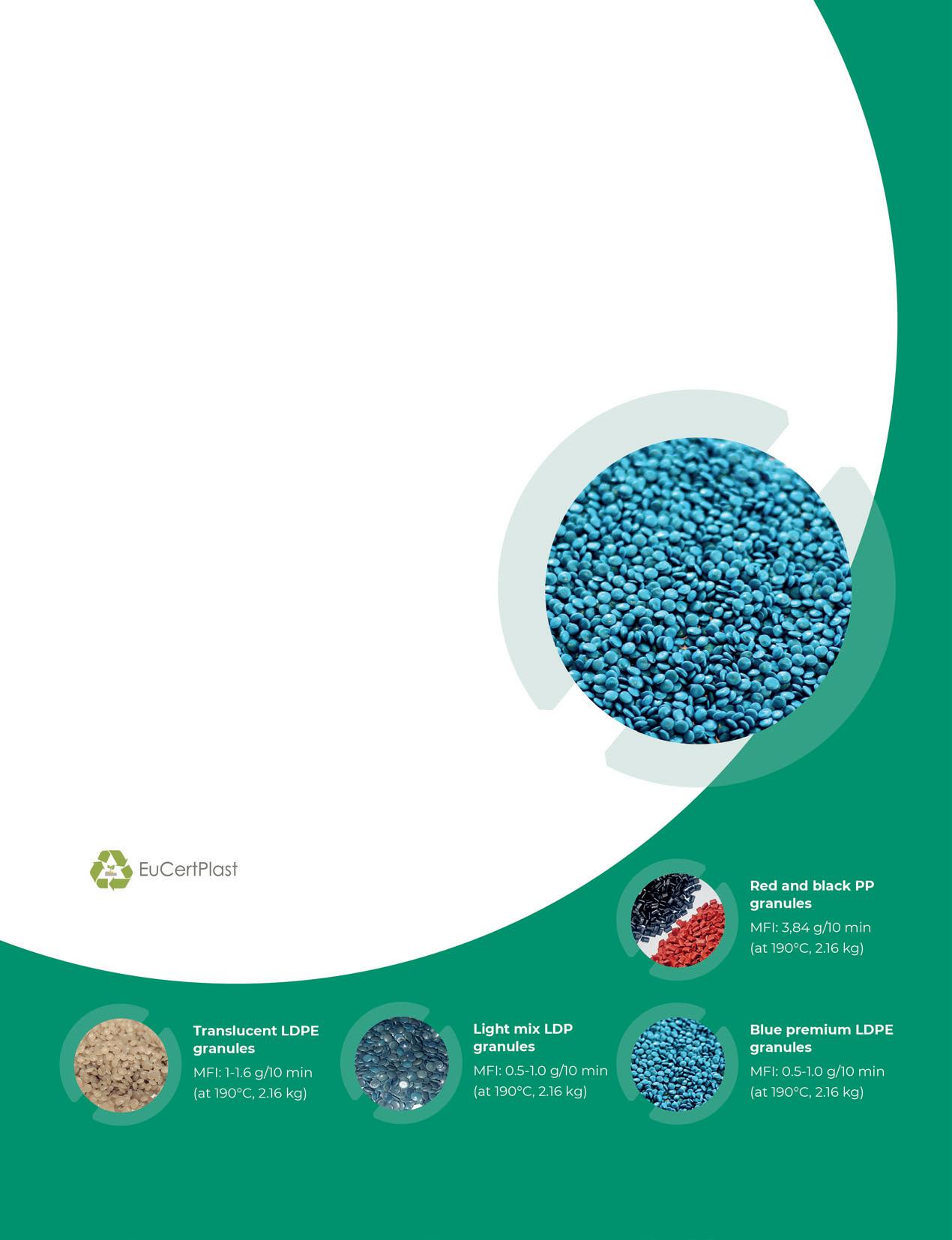

 Jacek Leszczyński Editor-in-chief
Jacek Leszczyński Editor-in-chief


















 WITH
& RUBBER, MESSE DÜSSELDORF GMBH
WITH
& RUBBER, MESSE DÜSSELDORF GMBH





 Olefins Complex in Płock, Poland
Photo: PKN ORLEN
Olefins Complex in Płock, Poland
Photo: PKN ORLEN
 JACEK LESZCZYŃSKI
JACEK LESZCZYŃSKI

 Plastech.pl
Plastech.pl






 Bannach
INTERVIEW WITH TOMASZ MIKULSKI, PRESIDENT OF ML POLYOLEFINS
Bannach
INTERVIEW WITH TOMASZ MIKULSKI, PRESIDENT OF ML POLYOLEFINS




























































































